




































































































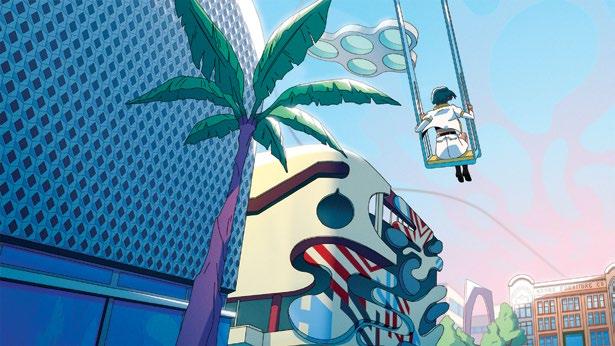
 NORTH AMERICA EUROPE ASIA CARIBBEAN OCEANIA
NORTH AMERICA EUROPE ASIA CARIBBEAN OCEANIA

June/July/August 2024
FOR MATTHEW BARNEY, ART-MAKING IS A CONTACT SPORT
The visionary artist is embarking on a world tour with works springing from his 2023 film, Secondary.
A RISK, NOT A RECIPE
This summer, two European shows secure artist Martha Jungwirth’s status as a singularly deft articulator of the painterly process.
NINA CHANEL ABNEY’S LABYRINTH OF FALSE COMFORTS
With her most colossal show yet on view at Jack Shainman Gallery’s The School through October, the artist is cementing her place in the contemporary canon.
HAVE YOUR FLOWERS AND EAT THEM, TOO
Florist Alex W. Crowder’s botanical “laboratory,” Field Studies Flora, pays tribute to childhood afternoons spent in nature.
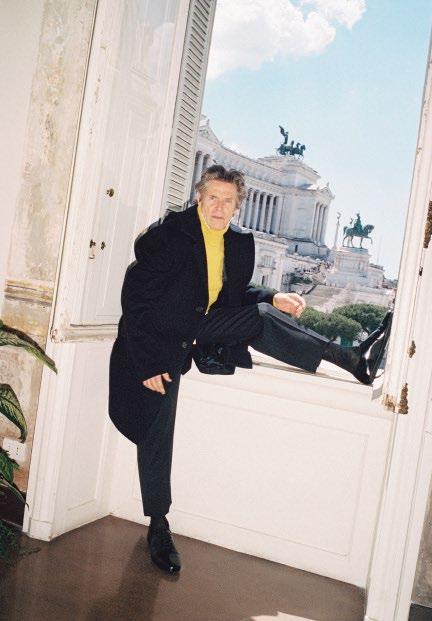
58
A GRAND VISION COMES TO LIFE: CIPRIANI
With the construction of a gleaming new tower in Brickell, Mast Capital CEO Camilo Miguel Jr. leaves a lasting mark on his coastal hometown.
IT’S A MARTHA STEWART SUMMER
The patron saint of good living offers CULTURED ’s Design Editor-at-Large, Colin King, a peek inside her seasonal rituals.
OBSESSIONS: DURGA CHEW-BOSE
For this issue, one writer selects a treasured cultural artifact and holds it up to the light, reflecting on the revelations it has sparked and the nostalgia it conjures.
60
66
THE CULTURED REPORT
Look back at the blowout celebration of the inaugural CULT 100 issue, with a little help from our friends.
LOUIS VUITTON STEPS INTO THE LIGHT
The house’s Master Perfumer Jacques Cavallier Belletrud teamed up with Pharrell Williams to create LVERS, a bright scent that pays homage to sunshine.
68
JEWELRY AS OBJECT AS JEWELRY
Jewelry is imbued—perhaps more than anything else we wear—with potent emotional power. These designers are blurring the line between wearable art and treasured object.

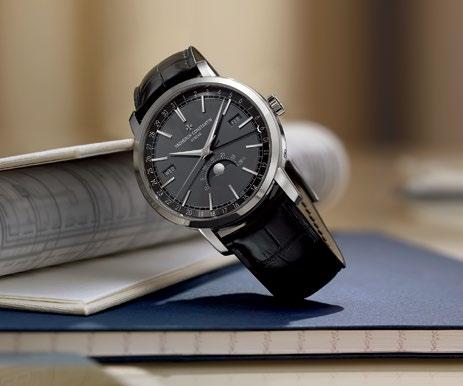
June/July/August 2024
76 78 82 84
BEAUTY IN THE BROKEN PIECES
When jewelry designer Savannah Friedkin founded her eponymous brand this spring, she set her sights on two goals: environmental sustainability and personal significance.
IN LOEWE’S FIRST-EVER EXHIBITION, CRAFT IS KING
The Spanish fashion house’s traveling proto-retrospective, “Crafted World,” charts its history with a cheeky, detail-oriented eye and a strong dose of optimism.
A FRESH TAKE ON A TIMELESS MEXICAN ART FORM
Seven years since its founders crafted their first batch of tequila for a friend’s wedding, LALO remains committed to being the drink that brings friends together.
STANDING ON THE PRECIPICE
In the whirlwind year since Steve O Smith debuted his master’s thesis collection, his designs have made the red carpet rounds. Up next? Learning to stay still.
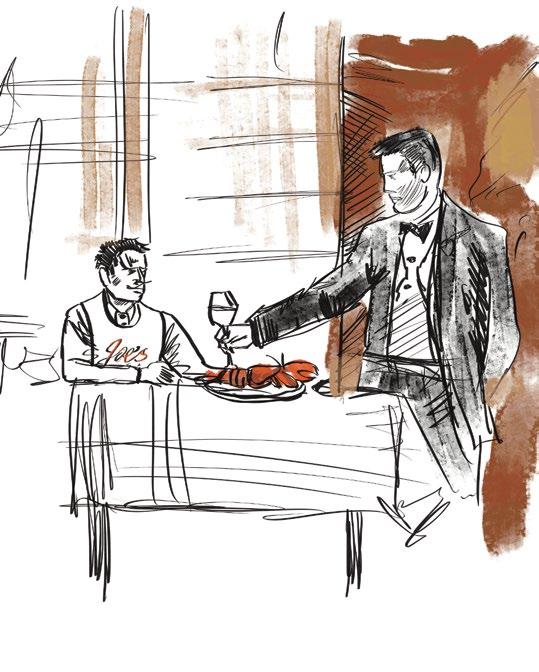
90
94
98
MEET THE REGULARS
Five New Yorkers reflect on how they attained the city’s most coveted accolade.
THE BELLY OF THE BEAST: WHERE THE ART WORLD EATS
Podcasting It-boys Nate Freeman and Benjamin Godsill share an insider’s list of establishments—from the down and dirty to the white glove—that feed the art world.
ART CRITICISM IS IN CRISIS. THESE THREE WRITERS AREN’T GIVING UP
A trio of writers representing three different approaches to criticism compare notes on the state—and the promise—of the discipline.
103
116
YOUNG COLLECTORS 2024
Art collecting is, above all, an act of faith. The 10 individuals on CULTURED’s seventh annual Young Collectors list show us what comes after that leap.
WILLEM DAFOE AND MARINA ABRAMOVIĆ ON DEATH, DIRTY JOKES, AND ENDLESS DEDICATION
Though the pair loom large in their respective art forms, they know one another on a much more intimate scale.
126
As New Jersey–born 070 Shake prepares to release her third album, she has decided to pull back.

June/July/August 2024
162 134 140 154
In 1972, Stephen Shore drove across America. A never-before-seen trove of his flashsoaked photographs pays homage to the meals he ate along the way.
Photographer John Yuyi conjures a surrealist dreamscape with Tokyo’s dense visual landscape as her canvas and Chanel’s 2023/2024 Métiers d’art collection as her muse.
After taking on the outdoor adventurer and the suburban dad, the sartorial set has turned its focus to the culinary uniform. CULTURED asked six chefs to weigh in.
Nate Freeman and Benjamin Godsill sit down with the chef-restaurateurs behind three establishments that have earned the art scene’s enduring trust.

170
EVERYTHING, EVERYWHERE, ALL AT
Photographer Tyler Mitchell returns to his roots this summer with his first Atlanta exhibition, “Idyllic Space,” at the High Museum.
178
TIFFANY & CO. TOUCHES DOWN IN TOKYO
The American luxury brand is out to tell its own story with more ambition than ever before. A new exhibition in Japan proves it.
186
Forty years after debuting Wheatfield, the artist is reviving it in the American West.
192
Writer Ocean Vuong weaves a tale of two Julys with his first public foray into photography, examining the eerie plasticity of time.
204
Three years after meeting, Abbi Jacobson and Jodi Balfour dedicated their wedding to the feeling of jubilant, sweaty revelry.
210
Louis Vuitton’s global culinary outposts prepare for their busy summer season with a new array of tableware in hand.

I’m thrilled to be releasing CULTURED’s first Art and Food issue. Summer is, after all, about indulgence, adventure, and togetherness—the very things we turn to food for.
But above all else, the issue is dedicated to an appetite for more. In the few months since our CULT 100 issue and celebration, we truly have not stopped pushing forward—hosting more events with our partners, publishing more issues, and reaching more readers than ever before.
Nobody understands this better than our issue’s cover stars, actor Willem Dafoe and musician 070 Shake. At 68, Dafoe—shot in Rome by Anton Gottlob and in partnership with Prada—has no plans to rest on his laurels. The magnetic performer has nine films in production this year, and Yorgos Lanthimos’s Kinds of Kindness freshly released this month. In his cover feature, Dafoe is asked by his friend Marina Abramović when they’ll both stop working. The actor replies, “Maybe we’re just donkeys, and work is the carrot being dangled in front of us. It’s worked out pretty well for us so far.” Musician 070 Shake—profiled by the incredible J Wortham and shot in Los Angeles by Alana O’Herlihy— is a newer name in the American cultural canon, but no less significant in our current moment. While many of her Gen Z peers make music to suit an algorithm, Shake has isolated herself from the noise to create Petrichor, her forthcoming album. “I hope people will welcome it like a burst of rain in a drought,” she says, “that they’ll be thirsty for and invigorated by it.”
This issue represents the fruits of many other labors, too. Actors and newlyweds Abbi Jacobson and Jodi Balfour share the ways that food and festivities marked milestones in


070 Shake photographedinLos AngeleswearingGucci.Photographyby AlanaO’Herlihy.

Dafoe photographedinRomewearingPrada.PhotographybyAntonGottlob.
their relationship; chef and writer Emma Leigh Macdonald explores the resonance of the chef uniform in contemporary culture; and Stephen Shore unearths a trove of never-before-seen dinner shots from his American Surfaces series. Ocean Vuong, one of the CULT 100 issue’s cover stars, makes his photography debut with a series that weaves two fateful July weeks (one spent with his mother and one following her passing) into one beautiful meditation. Nate Freeman and Benjamin Godsill—hosts of the podcast Nota Bene and notorious gourmand-gossips—join us as section editors, crystallizing years’ worth of martini insights and rounds on the art-fair circuit into a series of interviews with art-world-approved restaurateurs, and a definitive insider’s list of eateries across the world.
Summer is, after all, about indulgence, adventure, and togetherness the very things we turn to food for.
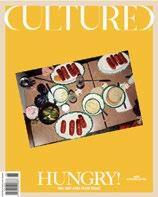
Among the untold hours we spend in edit meetings, planning events with treasured partners, and feeding an ever-expanding hunger for new cultural fare, I do all I can to ensure that everyone on my team takes the time to nourish themselves: diving deep into reading, attending openings for the artists we support, and getting together (whenever geography allows) as a group to share our thoughts and findings over a meal. There’s nothing quite like gathering around a table.
I hope this issue fills you up.


OCEANVUONG Photographer and Writer
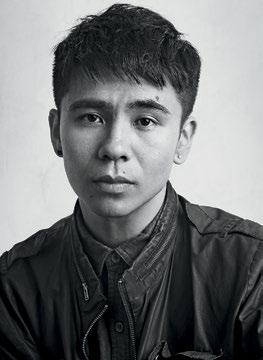
“It’s a deep pleasure to debut my photo work with CULTURED.”
MARINA ABRAMOVIĆ Artist
“The only time that I would wake up at 6:30 in the morning for a Zoom conversation is to talk to Willem Dafoe,” admits Marina Abramović. The Yugoslavian artist, now 77, has created an impressive oeuvre of boundary-breaking works of art throughout her decades-long career. Known primarily for her performance pieces, Abramović has in recent years ventured outside the fine arts and into opera—with a little help from Dafoe, who starred in her operatic debut The Seven Deaths of Maria Callas. “He is a real friend, and I would do anything for him,” she says of CULTURED’s cover star. “We always have a good time together.”
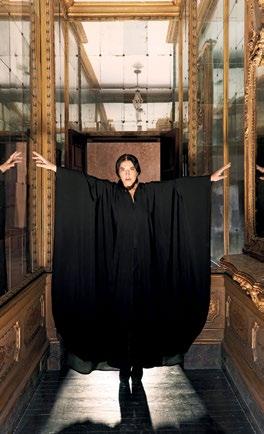
“The only time that I would wake up at 6:30 a.m. for a Zoom conversation is to talk to Willem Dafoe.”
“It’s a deep pleasure to debut my photo work with CULTURED,” says Ocean Vuong, poet, novelist, and now, photographer. For the first time, the New York and Northampton, Massachusetts–based literary icon is venturing outside the written word with a stunningly intimate photo essay. Known for best-sellers including On Earth We’re Briefly Gorgeous and Time Is a Mother, Vuong is finally ready to unfurl his photography before the public. “The CULTURED team has collaborated with me throughout the entire process, working to showcase these images with dignity, respect, and poise— and I’m really proud of what we’ve achieved,” he shares.
Photographer
In 1972, photographer Stephen Shore embarked on a road trip across the United States, compiling the hundreds of snapshots he took along the way into his seminal American Surfaces monograph. Nearly 20 years after the tome was first published by Phaidon, Shore is still sifting through his trove of 35mm film rolls. “On this trip, I kept a visual diary photographing every person I met, every hotel room I stayed in, every town I drove through, and every meal I ate,” he recalls. For CULTURED’s inaugural Art + Food issue, the prolific image-maker shared a series of never-before-seen pictures from his odyssey.


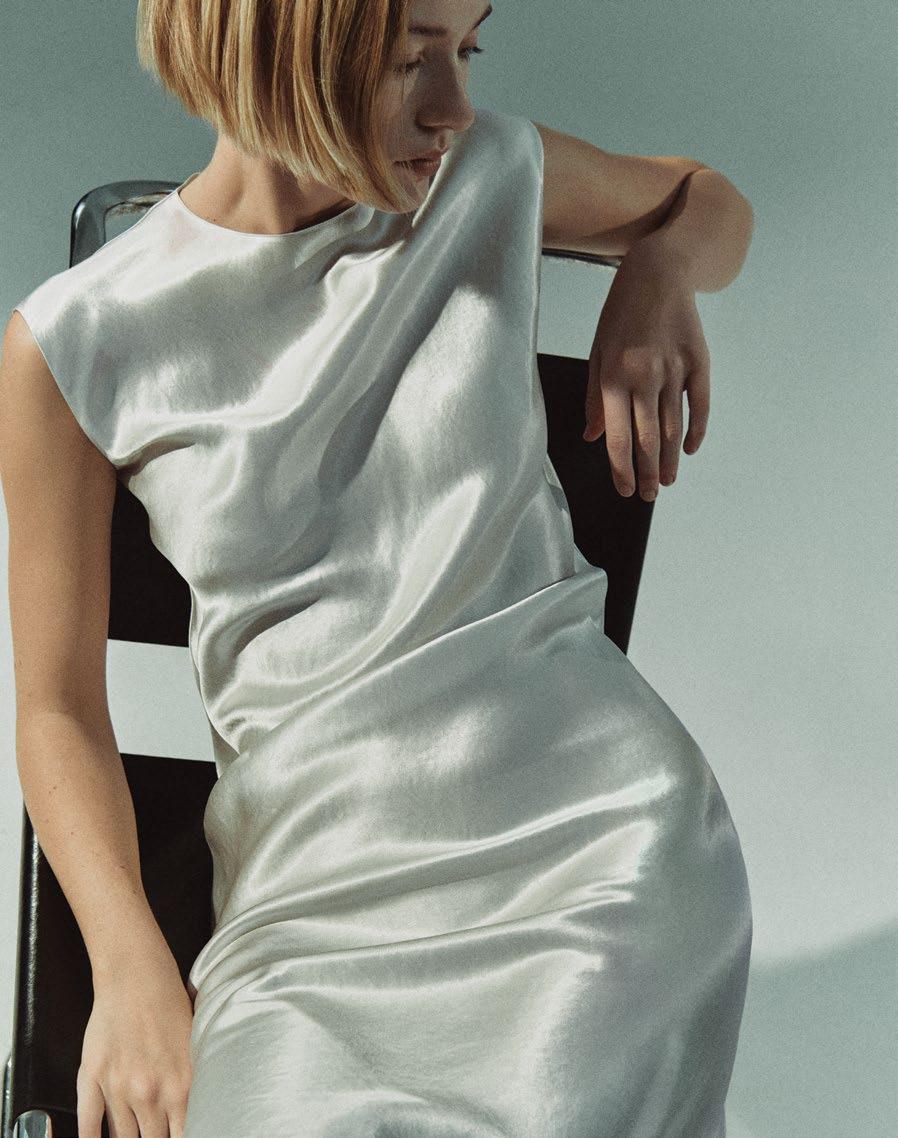

TYLER MITCHELL Photographer
Beyoncé, Harry Styles, Dua Lipa: Tyler Mitchell has peered through his lens at some of the biggest names in the industry. The New York–based photographer has traveled a long way from his roots in Atlanta, but this summer, he’s due for a homecoming. The city’s High Museum is showing “Idyllic Space,” a deep dive into the practice of the first Black artist to shoot the cover of Vogue. “It’s a momentous occasion to be coming back to Atlanta in this way, to the museum I grew up visiting,” he shares. “I want this exhibition to celebrate the city’s DNA and history in a poetic way.”
“It’s a momentous occasion to be coming back to Atlanta in this way, to the museum I grew up visiting.”DURGA CHEW-BOSE Writer
“Any chance I get to rewatch Olivier Assayas’s Summer Hours, I take it,” says Durga Chew-Bose. The Brooklyn-based writer and filmmaker penned a passionate ode to the 2008 film for this issue. Elsewhere, she’s contributed writing to GQ, The Guardian, and Rolling Stone, among other publications, and released an essay collection, 2017’s Too Much and Not the Mood. Her forthcoming directorial debut, an adaptation of Françoise Sagan’s Bonjour Tristesse, stars Chloë Sevigny. “[Summer Hours] is an education in storytelling, in how to quietly accumulate narrative with a potency that lingers long after the credits roll,” she adds. “I love its use of objects as counsel. I love its use of summer as the most bittersweet season.”
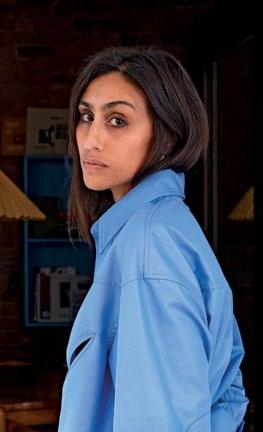 DOMINIQUE SISLEY Writer
DOMINIQUE SISLEY Writer
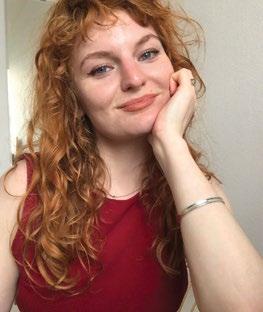
“Steve O Smith is one of the most innovative young designers working today,” asserts Dominique Sisley. “He captures the provocative, boundarybreaking spirit of London fashion at its best.” For this issue, the writer caught Smith ahead of his debut at this year’s Met Gala, working overtime in his studio to prepare his disruptive garments. “The man himself was so warm, and his brain seems to move at 1,000 miles an hour,” says Sisley, who is senior editor at AnOther and Dazed, and freelances for the likes of The Guardian, Elle, and The Face.
“Summer Hours is an education in storytelling, in how to quietly accumulate narrative with a potency that lingers long after the credits roll.”


There is no greater proof of one’s status as a longtime New Yorker than being singled out from the hordes by a favorite bartender, tailor, or waiter. Gaining “regular status,” as Annie Armstrong puts it, is no simple feat—“There is no one path to this coveted prize,” she asserts. In this issue of CULTURED, the writer and reporter speaks
Art Advisor and Writer respectively, Co-Hosts of Nota Bene podcast
“Half a lifetime of hard-earned caloric research went into getting it down on paper—not to mention all the air miles and jet lag,” says New York–based art advisor Benjamin Godsill of his work on this issue’s chef interviews and art-world restaurant guide. Along with his Nota Bene podcast co-host, writer Nate Freeman, Godsill spoke with the restaurateurs behind some of the art world’s most significant gatherings and compiled the ultimate list of eateries the industry swears by. “The reality is, good artists go to good places to eat,” says Freeman. “You can’t talk about the art world without talking about where everybody gets lunch.”
“Half a lifetime of hard-earned caloric research went into getting it down on paper—not to mention all the air miles and jet lag.” —Benjamin Godsill
with several New Yorkers about how they attained regular status at their favorite restaurants. Elsewhere, Armstrong specializes in reporting on the contemporary art ecosystem, and helms Artnet News’s cult gossip column, “Wet Paint,” a breakdown of art-world happenings both comical and jaw-dropping.


JOHN YUYI Photographer
“It was definitely an adrenaline-filled day in Tokyo,” says John Yuyi. For this issue, the Taiwanese photographer met with Japanese actor and model Serena Motola for a saturated, rain-soaked shoot in Chanel’s latest Métiers d’Art collection. “On a day that had been super sunny all week, it rained and the weather became much colder, but the reflections on the wet glass and the pedestrians holding umbrellas were unexpectedly cinematic,” she recalls. The photographer has previously lent her lens to the likes of Gucci; Heaven by Marc Jacobs; and In Memory Of…, a 2023 monograph.



MARA VEITCH Executive Editor
ALI PEW Fashion Editor-at-Large
COLIN KING Design Editor-at-Large
REBECCA AARON Senior Creative Producer
ELLA MARTIN-GACHOT Senior Editor
SOPHIE LEE Editorial Assistant
JACOBA URIST New York Arts Editor
CAT DAWSON, DEVAN DIAZ, ADAM ELI, ARTHUR LUBOW, HARMONY HOLIDAY, GEOFFREY MAK, SARA ROFFINO, NICOLAIA RIPS, LAURA MAY TODD, EMMA LEIGH MACDONALD, LIANA SATENSTEIN, JOHN VINCLER Writers-at-Large
PALOMA BAYGUAL, BRYAN BEDOLLA, COLLIN COLAIZZI, DANIELLE MILLER Interns
SARAH G. HARRELSON Founder, Editor-in-Chief
JULIA HALPERIN Editor-at-Large
TOM MACKLIN Casting Director
SIMON RENGGLI, CHAD POWELL Art Directors
HANNAH TACHER Junior Art Director
JAYNE O’DWYER Assistant Editor
BERT MOO-YOUNG Senior Photo Retoucher
EVELINE CHAO Copy Editor
DOMINIQUE CLAYTON, KAT HERRIMAN, JOHN ORTVED, YASHUA SIMMONS, KAREN WONG Contributing Editors
ALEXANDRA CRONAN, KATE FOLEY Contributing Fashion Directors
GEORGINA COHEN European Contributor
CULTURED Magazine 2341 Michigan Ave. Santa Monica, California 90404 ISSN 2638-7611
CARL KIESEL Chief Revenue Officer
LORI WARRINER Publisher
DESMOND SMALLEY Director of Brand Partnerships
SOPHIA FRANCHI Marketing Coordinator
CARLO FIORUCCI Italian Representative, Design
ETHAN ELKINS, DADA GOLDBERG Public Relations
PETE JACATY Prepress/Print Production
JOSÉ A. ALVARADO JR., SEAN DAVIDSON, SOPHIE ELGORT, ADAM FRIEDLANDER, JULIE GOLDSTONE, WILLIAM JESS LAIRD, GILLIAN LAUB, YOSHIHIRO MAKINO, LEE MARY MANNING, BJÖRN WALLANDER, BRAD TORCHIA Contributing Photographers
SIENNA FEKETE Podcast Editor
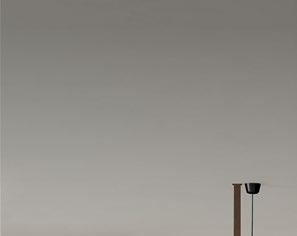


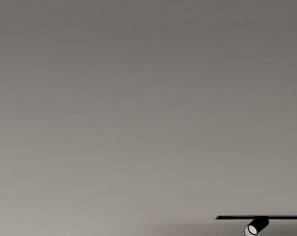









THE VISIONARY ARTIST LOOKED BACK TO HIS FOOTBALL PAST, AND A MOMENT THAT CHANGED THE SPORT FOREVER, FOR HIS 2023 FILM SECONDARY. WITH A SUITE OF NEW EXHIBITIONS, THE MASTER OF EXTREMITY IS TAKING THE NEW WORK IT GENERATED ON A WORLD TOUR.
By ELLA MARTIN-GACHOTAmerican football has only made one appearance at the Olympics, during the Summer Games that took over Los Angeles in 1932. The reasons for its disqualification are myriad; among them are an incompatibility of timing (a week-long break is required between professional matches), the sport’s propensity for injury, and the fact that the United States would undoubtedly win out. But the game will leave its mark in another way during this summer’s Olympic Games in Paris. A 20-minute Métro ride away from Arena Paris Sud—the venue that will host volleyball, table tennis, weightlifting, and handball competitions—Matthew Barney will populate the Fondation Cartier with his meditation on the sport and its discontents: “Secondary.”
At the heart of the exhibition and its titular five-channel film is an incident that shook the American pastime to its core. On August 12, 1978, during a preseason game between the Oakland Raiders and New England Patriots, defensive back Jack Tatum’s shoulder pad slammed into wide receiver Darryl Stingley’s helmet, leaving him paralyzed for life. Now an art-world avatar best known for his extreme performances and canonical video works, Barney was then an 11-year-old youth league quarterback, and, although he didn’t see the impact happen live, it haunted him. “I
watched the replay over and over in every halftime show and broadcast that happened throughout that year,” he recalls. “That’s how I absorbed it—a kind of relentless replay.”
Secondary, which made its U.S. debut in Barney’s former Long Island City studio last spring, doesn’t so much reenact the moment of impact as reimagine it through a series of exacting and abstracted somatics. Over an hour, the camera follows as Barney and 10 other performers—in the roles of Stingley, Tatum, Raiders owner Al Davis, a referee, an anthem singer, and a handful of additional players—move through training, game-day drills, and the elaboration of sculptural props (weights, protective headgear) with painstaking precision.
The film is a vessel for a suite of concerns— including America’s fictions, physical decay, ritualistic violence, the production and preservation of memory—but it is never a condemnation. “I’m not really interested in the work functioning as a kind of judgment,” Barney explains. And he doesn’t see the story’s cultural DNA as a roadblock for European audiences either. “I’m always looking for a way to take the specificity of my narrative and to make it more universal, to broaden the entry points into the work.”
That outward thrust is pursued in the Fondation Cartier exhibition and a quartet of satellite gallery shows (at Gladstone, Sadie Coles HQ, Regen Projects, and Galerie Max Hetzler) with a new series of ceramic sculptures that crystallize a sense of resistance and brittleness. Barney sees the pieces as an inquiry into the ways materials exhibit stress, like a form of sculptural reflexology. Rounding out the Cartier exhibition are a selection of the artist’s early “Drawing Restraint” videos, in which he constricts his movements with a slew of apparati while making drawings. For the occasion, he will stage a new iteration with Raphael Xavier, the breakdancer who played Tatum in Secondary, attached to a resistance training bungee cord.
Although their execution and results diverge, the connection between the ongoing series and 2023 film is clear: Barney is taken with the formal aftermath of transgressing a physical limit and understanding both the risk and catharsis that lie beyond it. He knows that where there is pain, there is an audience ready to behold its visual collateral. We are all too ready to watch the extreme on replay without paying the price of experiencing it.
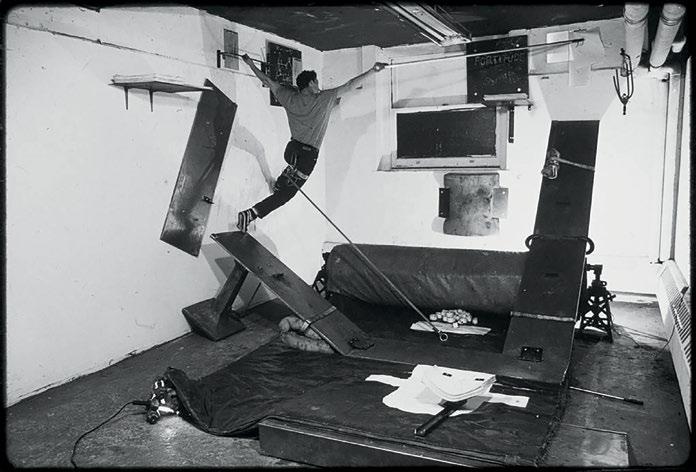
“I
WATCHED THE REPLAY OVER AND OVER IN EVERY HALFTIME SHOW AND BROADCAST THAT HAPPENED THROUGHOUT THAT YEAR. THAT’S HOW I ABSORBED IT—A KIND OF RELENTLESS REPLAY.”


OVER THE LAST SIX DECADES, MARTHA JUNGWIRTH’S ARTISTIC PRACTICE HAS TEETERED BETWEEN IMPULSE AND INTENTION. THIS SUMMER, TWO EUROPEAN SHOWS CEMENT HER STATUS AS A SINGULARLY DEFT ARTICULATOR OF THE PAINTERLY PROCESS.

At 84, Austrian artist Martha Jungwirth has faced down blank canvases—or one of the many nontraditional surfaces she makes her incisive, unpasteurized marks on—for over six decades. Two expansive European shows, on view through September at the Guggenheim Museum Bilbao and Venice’s Fondazione Giorgio Cini, prove that the painter has more marks to leave—and a constellation of concerns, both formal and contextual, to fuel them.
AT THE END OF YOUR 1988 POEM “THE APE IN ME,” YOU WROTE, “EGO-SHIFT: IS WHAT I CALL THE MOMENT AT THE END OF / PRIMITIVE THINKING AT THE AGE OF SEVEN WHEN TEACHERS / START DRILLING RULES AND DRIVE OUT THE FAIRY-TALE AGE.” DO YOU FEEL THAT YOUR ARTISTIC CAREER HAS AFFORDED YOU A WAY TO ESCAPE THOSE RULES AND STAY IN THE “FAIRY-TALE AGE”? You don’t quite manage to stay in that
fairy-tale age, but as an artist you naturally have other roots that link you to your childhood—creativity and imagination. Other people may have to discard or neglect these roots because their lives are focused on the practical. As an artist, you can escape societal rules by setting your own.
YOUR GUGGENHEIM BILBAO RETROSPECTIVE INCLUDES WORK UP UNTIL 2023. WHAT HAS YOUR STUDIO PRACTICE LOOKED LIKE IN RECENT YEARS, AND WHAT WERE YOU SURROUNDING YOURSELF WITH IN THE MAKING OF THOSE NEWER WORKS? I surrounded myself with good art and traveled to see exhibitions. I’m constantly looking at “old” art. In recent years, great painters like Goya or Manet have become much more interesting in terms of our era. Goya is one of the most important artists of all, especially in our current state of affairs, because he painted entire series on war and the catastrophes
associated with it. And I find Manet interesting as a painter. His 1880 painting L’Asperge is one that you will never forget for the rest of your life. Manet also painted the shooting of Maximilian in Mexico, drawing on the shootings in Goya’s paintings. Especially in a rather bleak time, from pandemic to war, I have been thrown back to artists who leave a lasting impression.
SPONTANEITY IS AT THE CENTER OF YOUR WORK. I’M THINKING OF ANOTHER LINE IN “THE APE IN ME”: “LEAVE VISIBLE THE PAINTING / PROCESS, NO RETOUCHING, RISK NOT RECIPE. NON FINITO.” HOW DO YOU CREATE THE CIRCUMSTANCES TO REMAIN SPONTANEOUS AS AN ARTIST, AND TO CONTINUE TO SURPRISE YOURSELF? By painting and seeing what kind of “blotch” I can create. I constantly surprise myself when I’m working, but of course you have certain ideas about quality. In the course of painting you have to return to those ideas.
“As an artist, you can escape societal rules by setting your own.”
TRAVEL, NATURE, AND LITERATURE HAVE BEEN LIFELONG INSPIRATIONS FOR YOU. WHAT RECENT ADVENTURES HAVE MARKED YOU? Above all, I saw a lot of exhibitions. The German title of the exhibition “Herz der Finsternis,” at Palazzo Cini in Venice, references Joseph Conrad’s famous novel Heart of Darkness, which I read as a young woman. It tells the fictionalized story of a Belgian steamboat expedition up the Congo River, exploring the brutality of European colonialism in Africa at the time. An important impetus for my new works in Venice came from reading the book Africa, in Chains [Afrika, in Ketten, a compilation of work published in German] about colonial history by the French writer and journalist Albert Londres. His descriptions gave me the idea to visit the Musée de l’Histoire de l’Immigration at the Palais de la Porte Dorée, a building that was constructed for the last Paris Colonial Exhibition in 1931. It was against this thematic background of colonialism, exploitation, and migration then and now that the series of pictures entitled “Porte Dorée,” now on view in Venice, was created.
WHAT ARE YOU EXCITED TO DO NEXT?
To keep painting!

WITH A RAPIDLY GROWING SPHERE OF CREATIVE OUTLETS, AND HER MOST COLOSSAL SHOW YET ON VIEW AT JACK SHAINMAN GALLERY’S THE SCHOOL THIS SUMMER, THE ARTIST IS CEMENTING HER PLACE IN THE CONTEMPORARY CANON.
By ELLA MARTIN-GACHOTWhat does it mean to be a monument in the making? At 43, Nina Chanel Abney is the rare artist who has earned the elite seal of institutional approval—with prized commissions from the likes of the Lincoln Center, work held in the collections of art world megaliths like MoMA and the Whitney, and an excess of solo shows under her belt—while remaining strikingly approachable, even popular.
In 2024, the NCA Extended Universe includes collaborations with Jordan, Timberland, and EA Sports; New Yorker magazine covers; and even a thousand-piece puzzle—a constellation of design initiatives that will soon be formalized under the name of Super Cool Studios.
“Humor has always been more than a mere stylistic choice—it is my weapon and my shield.”
Abney is inviting you along for the ride, but on her own terms. The Illinois native has navigated the expectation for contemporary artists, especially artists of color, to be funambulists of sorts with a crucial instrument in tow. “Humor has always been more than a mere stylistic choice—it is my weapon and my shield,” she says. “It
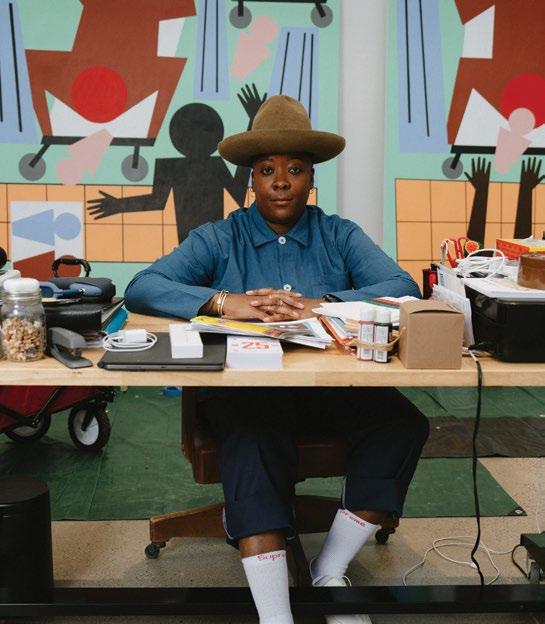
disarms, ensuring that the first interaction with my work is one of accessibility rather than confrontation. Yet, beneath this initial engagement lies a labyrinth of complexity.”
Implied in that maze is the farrago of themes Abney has probed throughout her two-decade-long career—from the weight of racial stereotypes to the velvet hammer of latent homophobia.
In her work, which is rooted in painting but has pushed past the canvas in recent years, Abney lays these subjects out with a trickster’s touch: “I aim to lure viewers into a space of false comfort, then confront them with a reality that is anything but comfortable.”
The New York–based artist’s tradition of sitting with the trouble, instead of just depicting it, continues this summer with a colossal show at Jack Shainman Gallery’s Kinderhook outpost, The School. “LIE DOGGO” pairs a brand-new series of paintings with Abney’s first foray into sculpture, an interactive digital art installation (the fruit of an inaugural residency with CryptoPunks, an NFT collection), and expansive murals taking advantage of the site’s architecture.
With it, she continues to forge her place in art history and offer visitors the visual vocabulary to start to understand it—if they stay and think awhile.
Photography by Marisa Langley
GROWING UP, ALEX W. CROWDER SPENT HER FREE TIME IN THE FOREST. NOW, SHE’S THE FOUNDER OF DESIGN-WORLD DARLING FIELD STUDIES FLORA—A BOTANICAL “LABORATORY” THAT DRAWS ON CHILDHOOD MOMENTS OF WONDER TO CREATE OTHERWORLDLY ARRANGEMENTS.
By ELLA MARTIN-GACHOT Photography by ANASTASIIA DUVALLIÉAs a child growing up in the Ozarks, Alex W. Crowder’s imagination came alive in the woods and fields near her home, where she’d forage for plants, assembling offerings to fairies and wildlife.
A few decades later, the same adoration for the natural world is at play with Field Studies Flora, her New York–based botanical “laboratory.” “We’re trying to invite people into new ways of seeing,” the florist explains.
Sourcing her materials from within 150 miles of her Brooklyn studio, and with the support of a crew of foragers and farmers, Crowder assembles her meticulous living sculptures— mementos of nature’s ever-changing tides (and tastes). “I often say I want to be the Alice Waters of floristry,” she says with a laugh. Oyster mushrooms, kale, and geraniums are all the foundations of her edible works, assemblages that reimagine what we think of as florals. (One of her favorite ways to surprise a client? Incorporate an edible.)
With curiosity as its compass, Field Studies Flora approaches its craft as an opportunity to bask in nature’s abundance. “I want people to broaden their horizons,” Crowder concludes. “Be intentional about what goes into your meal and your floral arrangements. Sometimes the two things can be the same.”


“I often say I want to be the Alice Waters of floristry.”
—ALEX W. CROWDER
Cultivating Dreams

OSGEMEOS: Endless Story
Hirshhorn Museum and Sculpture Garden
Washington DC
Opening September 29, 2024
New York
June 22–August 16 2024
MAST CAPITAL CEO CAMILO MIGUEL JR. HAS BORNE WITNESS TO A TRANSFORMATION IN THE LANDSCAPE OF HIS COASTAL HOMETOWN. WITH THE CONSTRUCTION OF A GLEAMING NEW TOWER IN BRICKELL, THE MIAMI NATIVE LEAVES A LASTING MARK.
“Growing up in this vibrant city and witnessing its evolution into the dynamic coastal metropolis it is today has been an extraordinary privilege,” says Camilo Miguel Jr., CEO of Mast Capital, about his hometown of Miami. Since he founded the development company in 2006, both the firm and the Floridian city have undergone a stunning evolution. The funding behind Mast Capital’s expansive portfolio has surged into the billions, and recent years have seen venture capital funding in Miami do the same.
Most recently, Mast Capital secured a $600 million loan to build Cipriani Residences Miami, a glass-paned, 80-story tower in the Brickell neighborhood.
The project is hotelier and restaurateur Cipriani’s first ground-up residence within the U.S., and the confluence of Miami style and Italian influence has resulted in a breezy construction, outfitted with sleek lounges, penthouses, and speakeasies that encourage indoor-outdoor living. Here, Miguel Jr. offers his insight into the changing landscape of the cultural mecca, straight from a man who has seen—and built—it all firsthand.
What is one thing you wish non-locals knew about Miami?
CAMILO MIGUEL JR.: Miami offers an unparalleled array of experiences, from its breathtaking beaches and rich cultural institutions to its distinctive fashion districts, art-adorned streets, and thriving culinary scene that stands unrivaled.
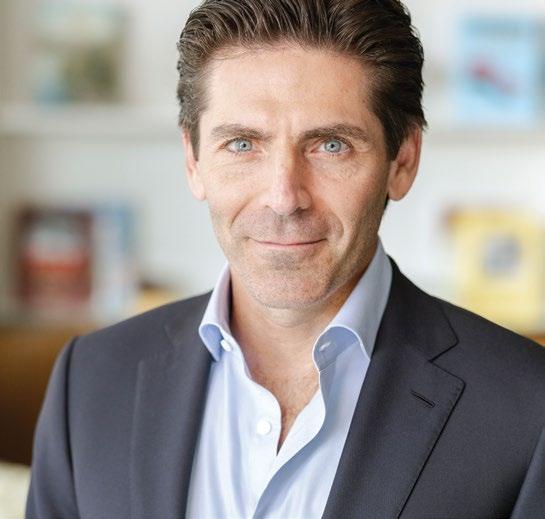
“Once a corridor of office buildings serving commuters, Brickell has evolved into a vibrant, multifaceted waterfront community with a walkable live-work-play lifestyle.”
—CAMILO MIGUEL JR.
The city provides virtually any experience one could desire, all within convenient proximity.
How have you seen Brickell change over time, and how do you expect this project to impact the local area?
MIGUEL: Brickell has undergone an incredible and elevating transformation over the past decade. Once a corridor of office buildings serving commuters, it has evolved into a vibrant, multifaceted waterfront community with a walkable live-work-play lifestyle.
Developments like Brickell City Centre have introduced high-end shopping and dining, while enhanced transportation options like the Brightline have increased accessibility. Cipriani Residences Miami builds on this evolution with its sleek, all-glass design and luxurious lifestyle.
How will your $600 million loan, the largest single-tower construction loan obtained in Florida thus far, be reflected in the scale and scope of this project?
MIGUEL: Securing a $600 million loan for Cipriani Residences Miami is reflective of the strength of our organization and signifies a major milestone highlighting its tremendous success to date, due to the immense demand for ultra-luxury condominiums in the Brickell area with certainty of delivery.

We have assembled top-tier architectural and design talents to bring this vision to life … embodied in the project’s bespoke residential offerings, five-star culinary experiences by Cipriani, expansive floor plans with curated interiors by 1508 London, and a distinctive curved façade by Arquitectonica.
What do you think makes Miami a particularly fruitful location for development? Have you seen conceptions of the area change over the course of your career?
MIGUEL: Miami has ascended as one of the world’s most desirable places to live, attracting global celebrities and notable companies alike, solidifying its reputation as a credible business and financial hub. The city’s economic evolution, driven by a diversified business landscape, positions it for sustained success.
Today, Miami represents the epitome of a booming metropolitan area, rich in cultural diversity and vibrancy. Our real estate market is the hottest in the country, and buyers now recognize Miami as
“Today, Miami represents the epitome of a booming metropolitan area, rich in cultural diversity and vibrancy.”
—CAMILO MIGUEL JR.
much more than a haven for warm weather and favorable taxes, but also as a socially and culturally thriving city.
How do you work with Cipriani and the architectural team to see a project of this scale through from start to finish?
MIGUEL: Cipriani’s brand identity has been meticulously integrated from the project’s
inception, capturing the essence of the original Harry’s Bar in Venice while ensuring a timeless design. Four iconic firms have brought Cipriani Residences Miami to life, each contributing international perspectives and expertise that uniquely qualify them to realize this extraordinary vision.
How does this project speak in particular to the types of residents you are seeing move into the Miami area?
MIGUEL: Cipriani Residences Miami is designed for the thousands of C-suite executives and high-level employees relocating to Brickell as companies like Citadel, Blackstone, Apple, Google, and Microsoft expand their presence. We cater to these discerning buyers by offering intimate, exclusive experiences with private dining, lounging, and meeting spaces in a highly curated, club-like environment. Our speakeasy and the top-tier luxury of the Canaletto Collection on the upper floors, featuring priority amenities and custom furniture packages by 1508 London and Cipriani, epitomize the elevated lifestyle the residences offer.

THE PATRON SAINT OF GOOD LIVING OFFERS CULTURED’S DESIGN
EDITOR-AT-LARGE, COLIN KING, A PEEK INSIDE HER SEASONAL RITUALS.
“I ADMIT THAT I READ THE COMMENTS WHEN I HAVE AN EXTRA MOMENT OR TWO. IF IT’S SOMETHING REALLY OUTRAGEOUS, I’LL ANSWER. SOMETIMES I HAVE TO RESTRAIN MYSELF BECAUSE I DON’T WANT TO GET INTO TROUBLE.” —MARTHA STEWART
Martha Stewart really needs no introduction. When we speak, the 82-year-old media mogul and doyenne of all things domestic is sitting outside her Bedford estate in a parked Polaris. It’s not even lunchtime, and she’s already tended to her farm, taken several appointments, moved some furniture, done Pilates, and delivered bagels to either her team or her animals (it’s unclear whom she means by her “gang”). As she prepares to release her hundredth book this year, Stewart found a rare moment in her exceedingly packed schedule to chat about the current “Martha-sance,” why she doesn’t DM, and the secret behind her famous dinner parties—all while attempting to take a photograph of a chipmunk in her garden.
COLIN KING: There’s been an undeniable “Martha-sance” recently. How do you feel about your place in the zeitgeist?
MARTHA STEWART: That’s a nice word! I’ll have to add that to my vocabulary. It’s fun because I hope to lead the way in terms of our thoughts about geriatric people—one can continue to be productive, useful, and creative if one keeps going and has personal drive. People appreciate that. A lot of people my age and even younger admire the fact that I am very energetic. So that’s what it’s all about.
KING: I’m one of those admirers! You’re the queen of personal branding. How would you advise someone looking to start or evolve their own brand?
STEWART: Everybody’s trying to make a brand these days. Even children are making brands. It’s quite extraordinary. When I started in 1982 with my first book, it was much more difficult to make a bestseller that would become an essential part of the American kitchen. A few people had done it, but not to the degree that they’re doing it nowadays. Last year, I think there were 20,000 cookbooks published. I don’t know how many cookbooks were published in 1982, but I would venture to guess it was less than 500.
KING: Your personal Instagram is incredible —it gives us a glimpse into your life and your interests, and there’s such a sense of enjoyment there.
STEWART: I’ve been a proponent of social media ever since it started. I adopted Twitter
immediately, loved it, and invested in it. The same with Instagram; I was an investor in the pre-Meta company, and I tried very hard to understand everything they were doing. I visited their offices and spoke at some of their conferences. I don’t always agree with what’s happening online, because it’s taking up an awful lot of our time. I sat on a plane the other day, and I don’t think there was one person out of 400 who wasn’t glued to their phone before we took off.
KING: Who is the last person you DM’d?
STEWART: I do not DM. You know why? Because I still love the telephone. If I want to talk to somebody, I call them and I leave a message. Probably 95 percent return them. With DMs, that percentage is much lower. I have so many DMs on my Instagram, and I’ve never looked at them. I refuse. I admit that I read the comments when I have an extra moment or two. If it’s something really outrageous, I’ll answer. Sometimes I have to restrain myself because I don’t want to get into trouble.
KING: How do you feel about the design world today?
STEWART: Wait, I have to take a picture of this chipmunk. I’m sitting outside, and one of my evil chipmunks is sitting on the edge of a beautiful flower pot. I’m going to get its picture right now.
[Martha accidentally hangs up while trying to photograph the chipmunk.]
KING: Did you get the picture?
STEWART: I’m sending it to you right now.
KING: [Laughs] Great! You recently returned to the cover of Sports Illustrated for its 60th anniversary issue. How has it felt to tap into a new facet of your image, and what are your thoughts on the “summer body”?
STEWART: Well, everybody wants to look good while they’re sitting at the pool, windsurfing, or paddleboarding. So it’s time to shape up a little bit, starting, like, right now. That’s not the only reason I go to Pilates three times a week and kill myself, but it’s certainly healthy and appealing to many people. Everybody should take care of themselves physically. It will add to longevity,
good health, and non-absenteeism at work.
KING: So, if you spontaneously have a free summer day, how are you spending your time?
STEWART: I garden! I have a huge garden in Bedford and a huge garden in Maine. My days begin and end with gardening, and with animal care. I do have help, but I still oversee the operations of the farm. Today is Friday, and I had a lot of appointments this morning—a visit with the septic tank man, a viewing of a new electric lawn mower. Then I moved a tremendous amount of furniture into a house on the property that I’m trying to make into a guest house. And what else did I do today? I went to Pilates. What time is it?
KING: It’s only 12:45 p.m.
STEWART: I’ve done a lot today.
KING: Can you walk us through organizing one of your famous dinner parties? Who are your first three calls to?
STEWART: I’m actually organizing an important dinner for a historic vintage of the champagne Krug. It’s going to be about 24 people, and I’m doing it in a dining pavilion near my pool that’s really picturesque for a dinner party. The first call is to my chef-slash-caterer, Pierre Schaedelin, to ask if he’s available. The second call is to someone I trust, to ask them to assist me that day. The third is to Susan Magrino, my publicist, with whom I discuss most things. If she likes the idea of the whole thing, then we proceed. Oh, and the flower man!
KING: Complete this sentence: “It’s not a Martha Stewart summer without…”
STEWART: It’s not a Martha Stewart summer without my grandchildren, my daughter, and a house full of friends in Maine.
KING: What’s one thing you’d still like to achieve?
STEWART: Immortality!
KING: What is your biggest contribution to culture?
STEWART: I have taught people to look at their homes not only as shelter, but as a place to enjoy. What we have created in terms of information and inspiration has been valuable to a very wide audience. For that, I’m really grateful.
“I HOPE TO LEAD THE WAY IN TERMS OF OUR THOUGHTS ABOUT GERIATRIC PEOPLE— ONE CAN CONTINUE TO BE PRODUCTIVE, USEFUL, AND CREATIVE IF ONE KEEPS GOING.” —MARTHA STEWART
For this issue, one writer selects a treasured cultural artifact and holds it up to the light, reflecting on the revelations it has sparked, the nostalgia it conjures, and the deep-seated urges it articulates.
IN HER WRITING, DURGA CHEW-BOSE REVELS IN THE MINUTE. STANDING ON THE PRECIPICE OF HER OWN FILMMAKING DEBUT, SHE EXPOUNDS ON THE HUMID MELANCHOLY OF OLIVIER ASSAYAS’S 2008 FILM SUMMER HOURS.
A little over a year ago, I found myself wandering the beautiful chaos of Paris’s Marché aux Puces de Saint-Ouen—a garage-like maze of mid-century design, chrome and orange flourishes, teak tables and chairs, and catch-all dishes on every surface. I was in search of stuff —the kind that would adorn the French villa where my debut film, a contemporary adaptation of Françoise Sagan’s Bonjour Tristesse, is set.
I was accompanied by my production designer, François-Renaud Labarthe, an artist whose work has, over the years, influenced me greatly. He is a master of just-so clutter, of building rich worlds with everyday charm. A desk must have piles, a bookshelf must have sun-faded spines, a summer movie must have al fresco dining.
This brings me to Olivier Assayas’s Summer Hours, one of my favorite movies, brought to life in part by Labarthe. The 2008 film, which is about memory and loss following the death of a family’s matriarch, delicately captures intergenerational conflict—not with dramatic strokes, but with a meditative touch that exposes sentimentality’s hold on our relationship to time.
When I think of Summer Hours, I see the color green, almost garish in the midday light.

“When I think of Summer Hours, I see the color green, almost garish in the midday light. I see a lonesome blue prior to nightfall. I see the doors left open to accommodate a breeze.”
I see a lonesome blue prior to nightfall. I see the doors left open to accommodate a breeze. I see the large silver-leaf serving plate Juliette Binoche admires in one of the movie’s most tender moments. I see teenage grandchildren occupying a crumbling country house one last time. I hear the names “Louis Majorelle” and “Josef Hoffmann,” designers whose furniture plays a significant role in the movie—as vehicles, as metaphors. I see a family’s future
neglecting its past, and how summer’s glare accelerates the fading process while reviving old secrets and ghosts.
Summer, I feel, is best enjoyed in the dark. By virtue of sheer contrast, the season blooms in a movie theater—growing wild, tangling itself into our imagination as something fresh and bittersweet. The movie ends. You leave the theater, forced to squint.



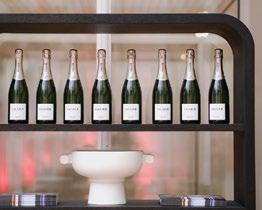


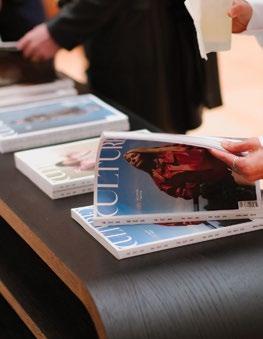
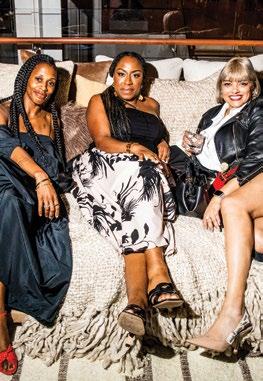
In 1978, Banana Republic was established to dress travelers headed out on safari. The brand’s current iteration is a far cry from its outfitter origins, trending more urban chic than great outdoors.
Banana Republic Home, a recent arm of the over-40-year-old label, intends to bridge the gap between the two worlds. The new line— which debuted last year with an array of bedroom, living room, and dining room
furniture, as well as lighting and home décor—is perfectly suited to a breezy, indoor-outdoor lifestyle, a reimagined revival of the brand’s founding ethos.
Last April, guests at CULTURED ’s CULT 100 party—which honored the magazine’s inaugural list of 100 changemakers across the creative industries—had the opportunity to experience the best of BR Home, the event’s exclusive design partner, in person.
Nestled in the Renzo Piano–designed atrium of New York’s Morgan Library and Museum, a curated selection of BR Home pieces played host to many an intimate moment, with the likes of Moses Sumney, Kelsey Lu, and Quil Lemons reclining on an oversized white couch. When the night came to an end, guests departed their cozy respites adorned with merino wool pillows and throws, making their way back into the urban jungle.
by Krista
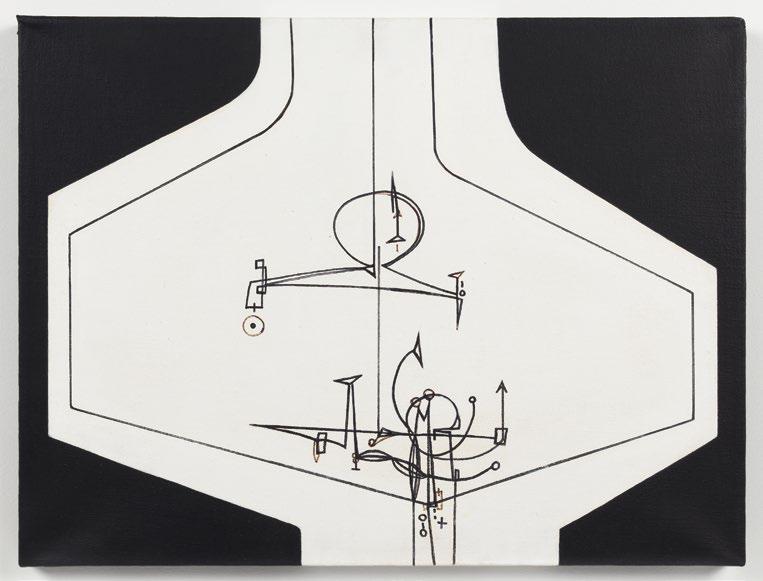
It only took a single year on the market for the Lost Explorer, a boutique mezcal brand, to become the “world’s most-awarded mezcal.” Among its recent accomplishments, the Oaxacan spirit line, founded in 2020, served as the exclusive mezcal partner of CUTURED’s CULT 100 event—a testament to its creative spirit and ingenuity.
Guests of the magazine sampled the fruits of the brand’s lavishly awarded labor firsthand this past April. At a bar nestled in the booklined halls of the Morgan Library and Museum in New York, the Lost Explorer plied guests with samples of artisanal spirits, accompanied by delicate slices of apple and chocolate. The Lost Explorer’s sustainably made, small-batch agave spirits celebrate the biodiversity of its Mexican homeland.
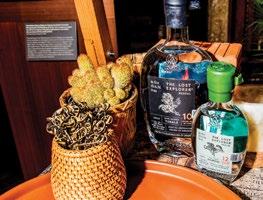
“Mezcal had an almost mystical allure to me—the provenance of the plant, the artisanal craft, its relationship to the people of Mexico and mother earth.”
—DAVID DE ROTHSCHILD




This ethos reflects co-founder and conservationist David de Rothschild’s enduring dedication to pushing the environmental movement toward inclusive and inspiring new heights.
“It had an almost mystical allure to me—the provenance of the plant, the artisanal craft, its relationship to the people of Mexico and mother earth,” de Rothschild has said of his own discovery of mezcal. Thus, the Lost Explorer was born, quickly bringing on a multigenerational family of distillers to oversee the process, and planting three wild agaves for every one they hand-harvest. “The human-nature balance is like no other and it is the truest form of a spirit. It still fascinates me,” he added, “to the point where I have become somewhat obsessed by it.”


The first major U.S. exhibition of Vivian Maier, a mysterious artist looking for the extraordinary in the depths of the ordinary.
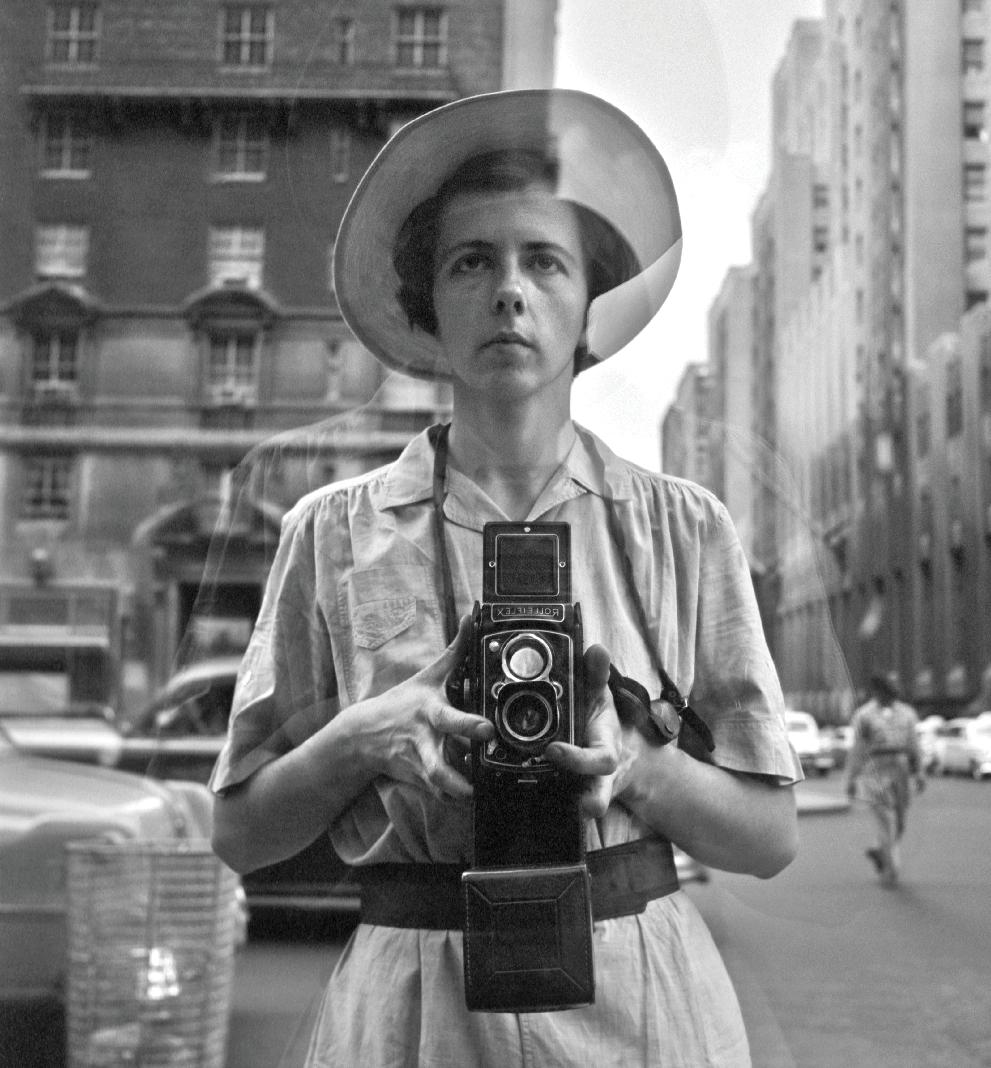
and culture.
The exhibition is supported by Women In Motion, a Kering program that shines a light on women in arts Image: Self-Portrait, New York, NY, 1954 © Estate of Vivian Maier, Courtesy of Maloof Collection and Howard Greenberg Gallery, NY
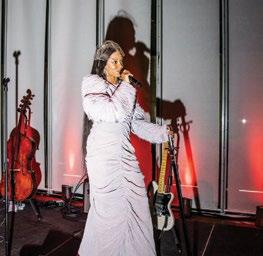



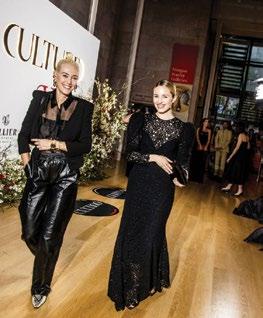
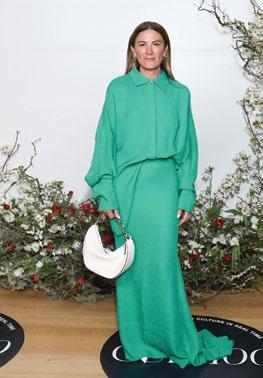
It is the rare brand that sends out an 814-page book as a runway invitation. That is exactly what Valentino did last year when it mailed copies of Hanya Yanagihara’s A Little Life to guests ahead of its men’s Spring/Summer 2024 show.
The Italian fashion house has continually reaffirmed its dedication to supporting contemporary wordsmiths, a relationship that began when Valentino himself took Diana Vreeland as one of his most influential muses.
For a 2021 campaign, the brand gave literary heavyweights Donna Tartt, Ocean Vuong, and Raven Leilani a simple prompt: Fill a single
The Italian fashion house has continually reaffirmed its dedication to supporting contemporary wordsmiths.
blank page with their musings on the poetry of fashion. More recently, Valentino partnered with CULTURED for the magazine’s CULT 100 event last April, fêteing an inaugural list of 100 cultural figures in the worlds of art, film, food, fashion, and literature. Vuong, one
of the issue’s cover stars, took the stage for a reading from his second poetry collection, Time Is a Mother, wearing a Valentino look from the men’s Spring/Summer 2024 collection.
In May, Valentino’s decades-deep commitment to the printed word led to the house’s support of the International Booker Prize ceremony, accompanied by a pledge to send 500 sets of the shortlisted books to libraries across the United Kingdom. The purpose of the partnership was simple, according to Maison Valentino CEO Jacopo Venturini: to “strengthen the house’s deep connection to the world of literature.”
Aspen Ice Garden JULY 30AUGUST 3 2024

Intersect Aspen Art and Design Fair returns to the Aspen Ice Garden this summer, presenting a dynamic mix of modern and contemporary art and design.
Running for over a decade, the fair has seen newfound energy and excitement under the management of Intersect Art and Design, now in its fourth edition. Committed to building community and connectivity, Intersect offers opportunities for dialogue, engagement, and inspiration through its cultural partnerships, programming, and curatorial vision.
For more information visit intersectaspen.com
Shown: Mixed media and resin work by Aurel K. Basedow; candlesticks and urn by Andrea Marquis; and console with cabinets by Gary Magakis. Courtesy of the artists and Todd Merrill Studio.When Louis Vuitton Men’s Creative Director Pharrell Williams debuted his Spring/Summer 2024 collection last year, it was a lightbulb moment for the house’s Master Perfumer Jacques Cavallier Belletrud.
Naturally, he supposed, Williams would have a bold idea for a fragrance. He was right: LVERS, the product of a recent collaboration between Williams and Cavallier Belletrud, is inspired by light itself.
The fragrance is bright and cheery, with notes of cedar to ground it and touches of sandalwood and bergamot to add warmth and zest. Galbanum—the unlikely star—provides a wild greenness that captures the positive, masculine vibe Williams and Cavallier Belletrud set out to create.
It’s daylight made manifest.
“Making perfume is all about showcasing the beauty of the raw ingredients and finding the balance between emotion, imagination, and reality.”
—JACQUES CAVALLIER BELLETRUD

 Photography by
Louis Vuitton
Photography by
Louis Vuitton
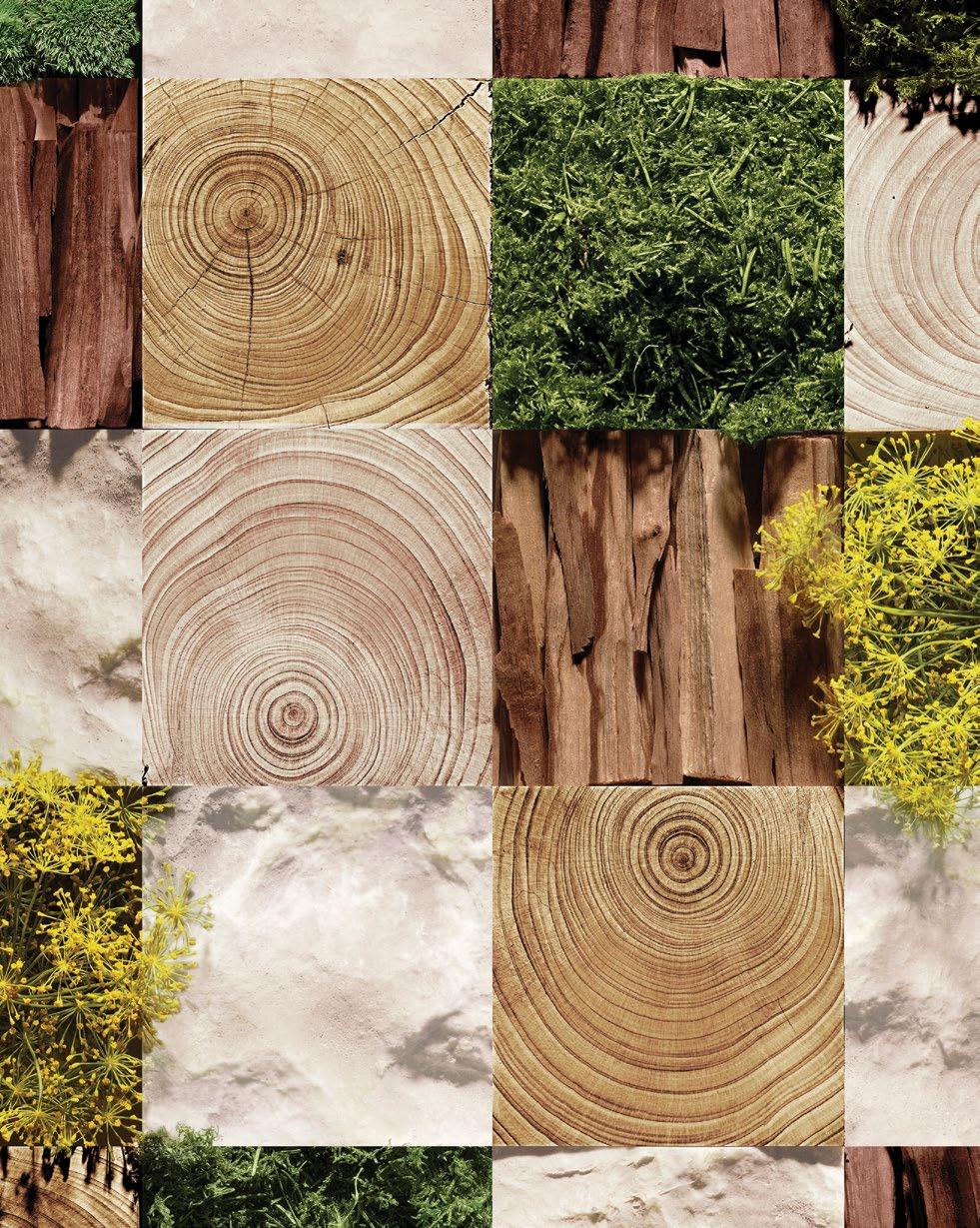
“Pharrell asked me, ‘What does sunlight smell like?’
This fragrance is a poetic and metaphorical version of the answer
to that question.”—JACQUES CAVALLIER BELLETRUD
Jewelry is imbued—perhaps more than anything else we wear—with potent emotional power.
In the best of cases, it can be hard to know where a well-made piece of jewelry ends and an art object begins. Designers increasingly
seek not just to answer this question, but to play in the space it creates, the tension between intimacy and distance adding new dimension to their craft. Blurring the line between wearable heirlooms and everyday objects, five creators reveal their findings.
BY ALI PEW“Jewelry-making felt like a natural extension of my design inclination, a creative epiphany of sorts. I found that immersing myself in the atelier, sculpting metal and molding wax, provided the best means to define my artistic language.”
—CHARLOTTE CHESNAIS
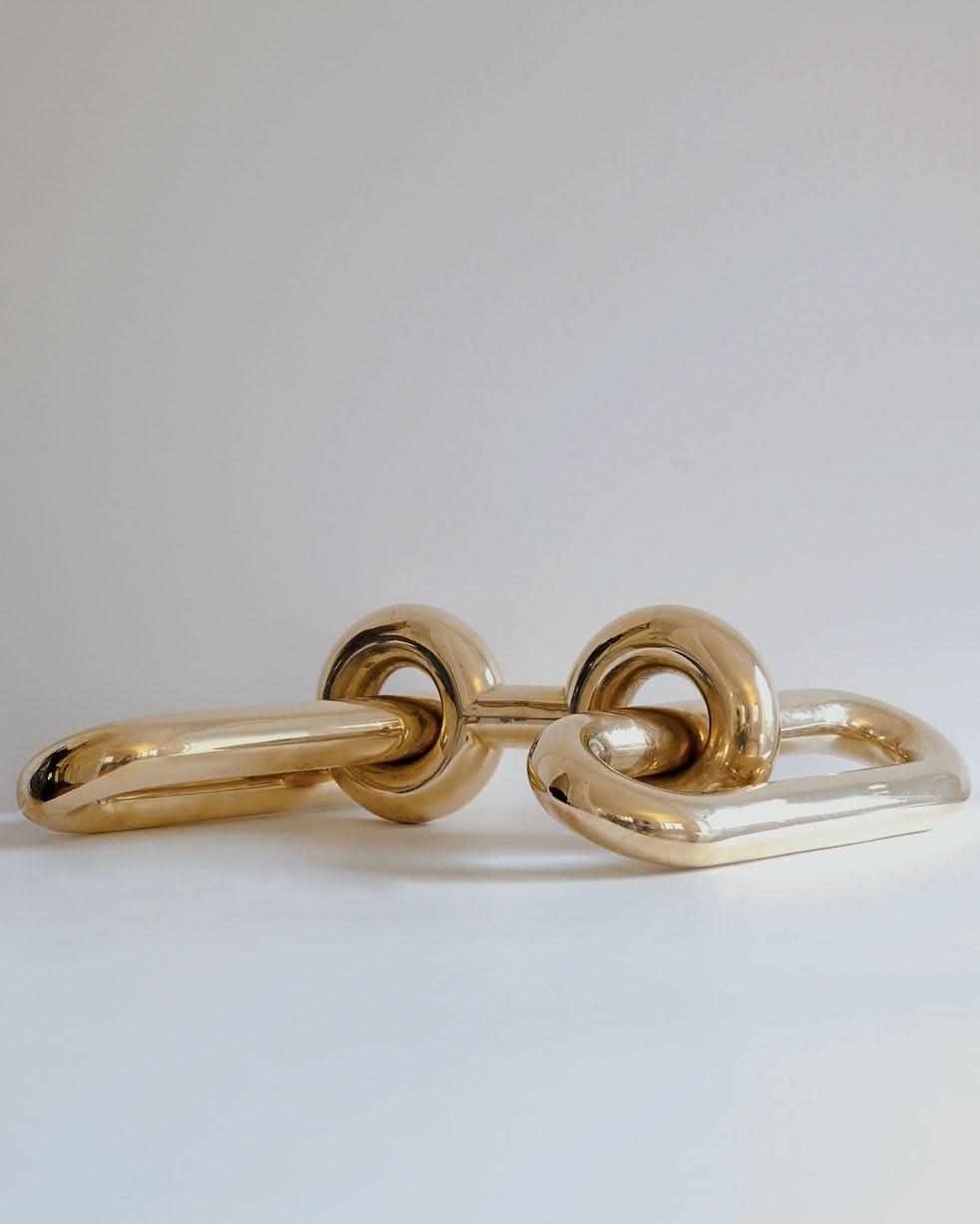

Objects become offerings in the hands of Alighieri’s Rosh Mahtani, evoking life’s arc through carefully crafted metals. A silver skeleton barrette is the delicacy of mortality made manifest, and an homage to the beauty of precarity.
“Ritual plays a big part in my life, and jewelry is very ritualistic. We wear certain pieces to remind us of a person, to make us feel brave, to symbolize a relationship or a time in our life.”
—ROSH MAHTANIMixing surrealist flair with humorous aplomb, Sophie Buhai reconceives personal keepsakes as covetable treasures. A joint holder and a flask become artful adornments as worthy of an evening out as being passed down.
“There was a time when it was common to have beautiful everyday objects —a well-made silver pen, a lighter, a cigarette case. We can still do that today, in a modern way.”
—SOPHIE BUHAI



One of the last century’s most iconic and enduring It-girls, Elsa Peretti’s designs for Tiffany & Co.—homages to the humility and purity of life’s origins—are sculptural works in their own right. With a simple bean-inspired pillbox, Peretti masters the jewelry-object divide, creating a piece at once intimate and functional.
PSYCHIC STAMINA
JUNE 1 JULY 26, 2024

Cartier Libre crafts embodiments of the unexpected. A carabiner undergoes a glowing metamorphosis, becoming a watch dappled in snow-set diamonds—at once beautiful and functional.
“Each creation could easily stand on its own as a beautiful piece of jewelry, but we’ve fit movements where they don’t necessarily ‘belong.’ The watch’s presence is part of the surprise.”
—MARIE LAURE CÉRÈDE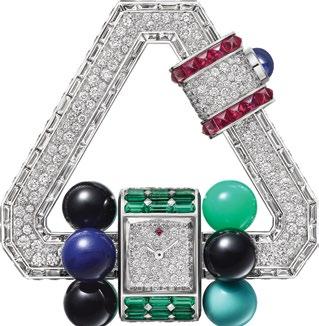

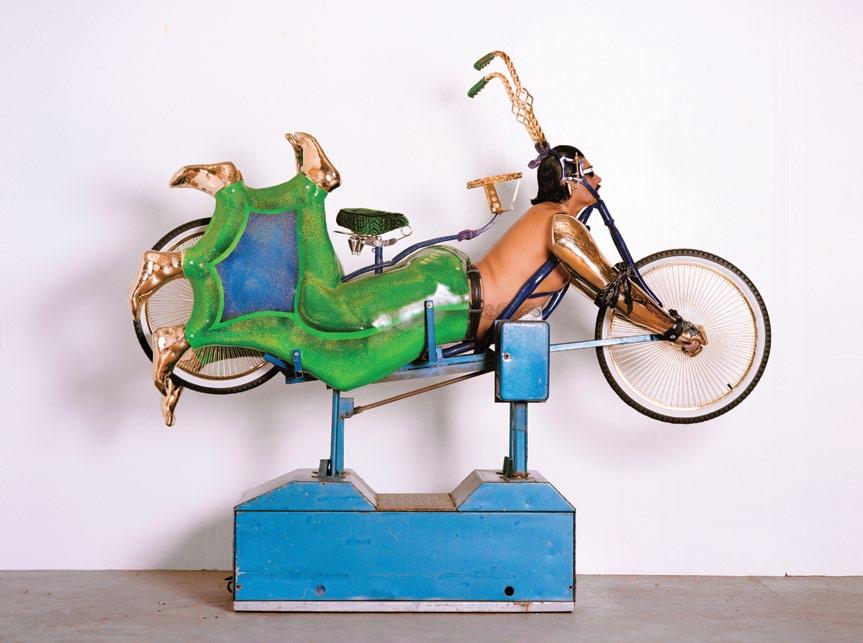
When jewelry designer Savannah Friedkin founded her eponymous brand this spring, she set her sights on two goals: environmental sustainability and personal significance.
By ALYSON KRUEGER by JESSE GLAZZARD
Savannah Friedkin has long felt a calling to design fine jewelry. “It’s a form of self-expression,” she muses. “I’ve never owned—or seen—a piece of jewelry that honors all of the unique facets of what makes me beautiful: the broken pieces, the twists and turns in my life.”
But as someone who grew up committed to conservation—her father, Dan Friedkin, is the chairman and CEO of Friedkin Group, which owns Auberge Resorts Collection and champions conservation efforts in both Texas and Tanzania—she struggled to find a fine jewelry company that reflected her values. “It was clear to me when I was looking for my path in fine jewelry that there were very few brands, if any, that were focused on sustainability,” she says. “When a brand did claim to be focused on sustainability, their claims weren’t very transparent—or, on occasion, even consisted of misinformation.”
So, in the spring of 2024, she launched her own namesake brand for people who love the planet. Friedkin follows strict guidelines. For one thing,

she only uses earth-friendly materials, including recycled gold and carbon-neutral lab-grown diamonds. “Our diamonds are 100 percent traceable,” she says. “I have personally seen where they are grown, cut, and set.” Each supplier and manufacturer the brand employs undergoes an independent audit to ensure they comply with green standards.
But the pieces can’t simply be beautiful. They must serve as vessels for deep personal meaning. Broken, the first collection Friedkin designed, is reflective of “the resilience inherent in women. I believe the broken within all of us can be beautiful—and should be celebrated,” she adds. The pieces feature a crack motif, a message to the wearer that “the negative space in each of us, the things left unseen, are often some of the most beautiful and interesting elements.”
Next came Emergence, a collection inspired by wild plants that grow in the cracks of buildings or sidewalks. It’s an image that the designer finds powerful: “It reminds me of when you’re going through a difficult time, in a situation you
never thought you would be in. You take one step forward day-by-day, finding your path over time and eventually learning to flourish.”
SAV, the third collection, taps into a brighter facet of the human experience. Put plainly, it’s about “the simple and fun,” notes the designer.
Friedkin hopes that the more people interact with her work—she currently has a pop-up shop traveling the United States that will make stops at Hotel Jerome in Aspen; the Mayflower Inn and Spa in Litchfield County, Connecticut; the Barn, SoulCycle’s base in Bridgehampton; and Bowie House in Fort Worth, Texas—the more she can inspire people to share her approach to sustainable (and meaningful) jewelry-making standards.
“I believe the industry is in the process of a major shift,” asserts Friedkin. In the end, she muses, what matters most is that that one’s treasured jewelry “has zero impact on the environment and only positive impacts on human beings.”
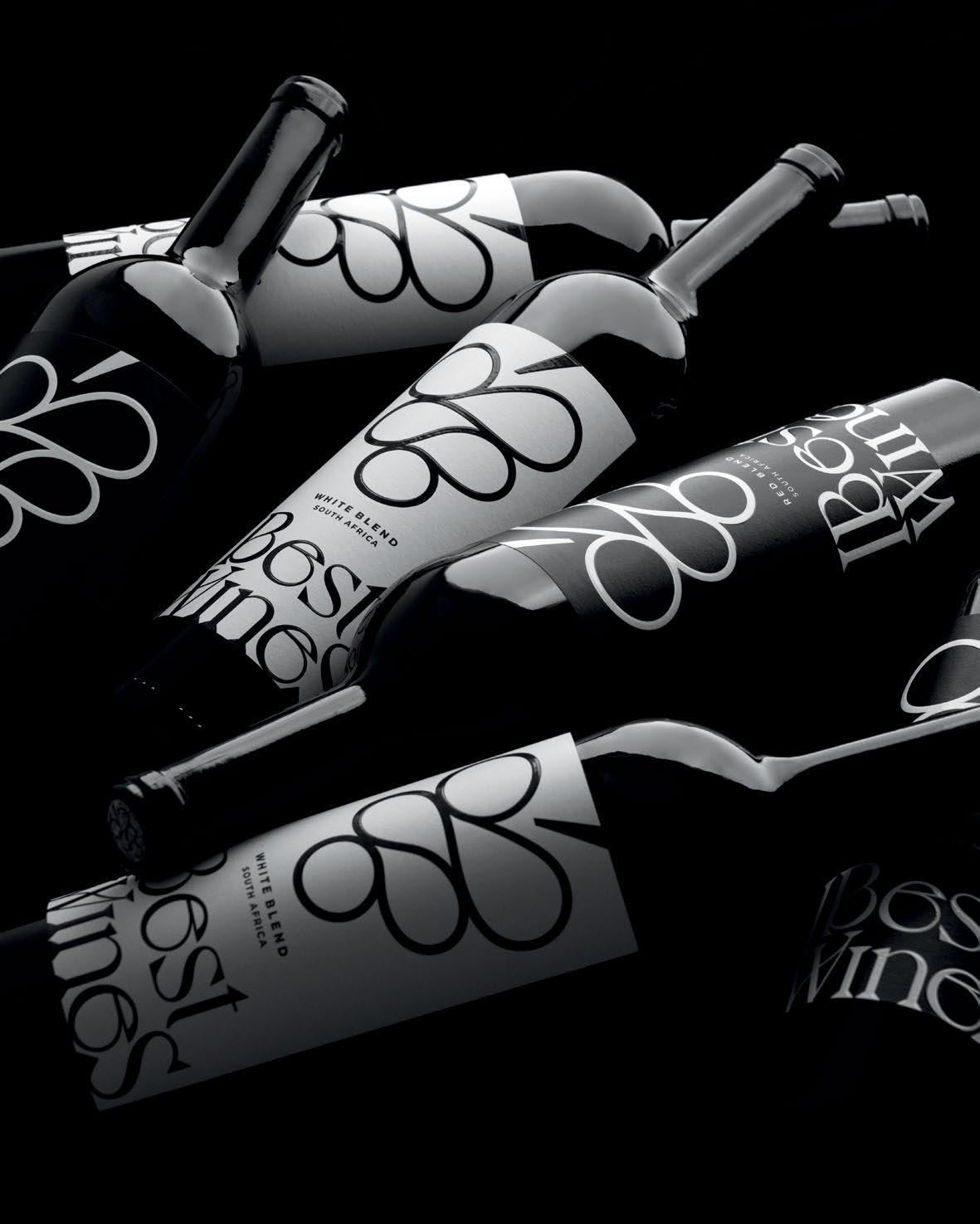
“CRAFTED
“When you go in and look at 10 years of work, you’re sort of confronted with what you’ve achieved,” says Jonathan Anderson, the creative director of the fashion label Loewe. He was speaking over a midday roundtable in Shanghai this past March, the day before the opening of “Crafted World,” a fashion and art proto-retrospective that rather jubilantly charts the history and aesthetic universe of the Spanish label. It is the house’s first major exhibition, and is expected to travel the world in 2024.
The unveiling of “Crafted World” signaled the next chapter in Loewe’s evolving artistic saga: Since 2016, the company’s foundation has presented an annual Craft Prize for emerging designers, and the brand underwrote the 2024 Costume Institute exhibition “Sleeping Beauties” at the Metropolitan Museum of Art. It also speaks to luxury fashion’s increasingly ubiquitous forays into exhibition-style activations. Louis Vuitton, for example, has its own foundation in Paris, and Dior has a gallery space, tucked beside its Avenue Montaigne flagship, that presents seasonal edits of archival pieces and paraphernalia.
While the exhibition begins at Loewe’s conception—1846, making it the oldest house in LVMH’s portfolio—much of the show is dedicated to the tenure of Anderson himself, who took the helm in 2013 (an unusually lengthy run in this line of work). “I’ve sold this to the press so many times—that every collection is different and is something brand-new,” Anderson said, “but when I see them all together in the room, it’s very interesting to me
that there is a language in the make of the clothing. There is a language to it all, somehow.” The exhibition’s emphasis on Anderson-era Loewe is a good thing—and, in the opinion of this writer, his sentiment on the subject is quite humble. His oeuvre may feature its fair share of veers and wiggles, but it has always been fluent in one dialect: market-friendly, highly artful eclecticism that emphasizes artisanal excellence in all its forms.
It’s also Anderson who has propelled the house beyond the gilded confines of high fashion and into the cultural mainstream. This has largely been done through cleverly positioned partnerships—for example, with renowned animator Hayao Miyazaki’s Studio Ghibli and the estate of Surrealist painter Maruja Mallo. The designer also costumed this summer’s Challengers, directed by Luca Guadagnino, and is releasing a few key pieces under the Loewe label. He inaugurated the aforementioned Craft Prize—the seventh edition of which debuted last May at the Palais de Tokyo in Paris—three years into his tenure at the brand.
Moreover, under the Irish designer’s leadership, Loewe has grown into a business worth more than a billion dollars—a degree of growth consistently underscored by the care and attention it takes to actually craft a product, versus churning it out in a factory. What other mass luxury designer in today’s market would sell a handmade leather purse in the shape of an elephant? (You can purchase multiple sizes at the “Crafted World” gift shop.)
“Loewe was very tight as a brand ... It had crippled itself somehow through the idea of being a luxury brand,” mused Anderson about the house’s uneven past. “But when I looked into the archive and thought about my own experience with Spanish culture, I realized there’s a lot of fun in it.”
Fun—good humor, an embrace of loud color, and even a hint of whimsy and kitsch—is at the heart of Anderson’s Loeweverse and, by extension, “Crafted World.” Upon entry, a stairwell tunnel layered with screens blares out the correct pronunciation of Loewe (“Lo-eh-vay”). Upon reaching the other end, visitors are “confronted” with an installation of polychrome chambers presenting visuals including, but hardly limited to, Rihanna’s 2023 Super Bowl halftime-show look, the brand’s signature leather-intarsia “Puzzle” bags, toolkits used by craftspeople in Loewe’s Madrid workshops, and rare pieces from Anderson’s collaboration with Studio Ghibli. Elsewhere, viewers catch glimpses of rarefied machinery, such as leather-thrashing arms that test bags’ durability.
What becomes clear through these vignettes, at varying scales and levels of technical sophistication, is Loewe’s commitment to creating for and continually adding dimensions to this titular “crafted world.” When asked about his approach to and relationship with that narrative, Anderson concluded, “There’s something that becomes quite twisted. Craft almost becomes a character, in and of itself.”

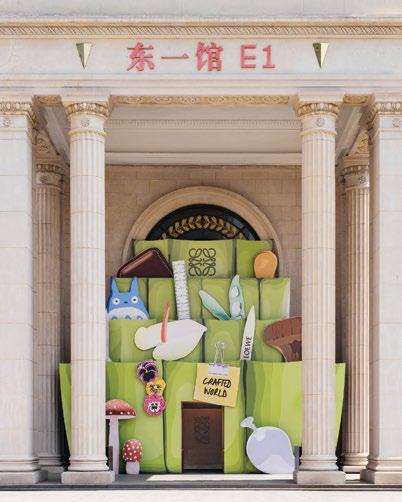
“THERE IS A LANGUAGE IN THE MAKE OF THE CLOTHING. THERE IS A LANGUAGE TO IT ALL, SOMEHOW.” —JONATHAN ANDERSON
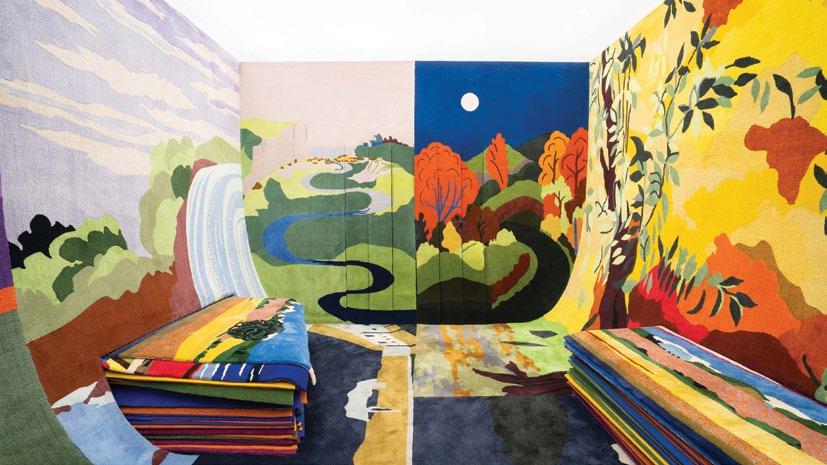


“LOEWE
HAD CRIPPLED ITSELF SOMEHOW THROUGH THE IDEA OF BEING A LUXURY BRAND. BUT WHEN I LOOKED INTO THE ARCHIVE AND THOUGHT ABOUT MY OWN EXPERIENCE WITH SPANISH CULTURE, I REALIZED THERE’S A LOT OF FUN IN IT.” —JONATHAN ANDERSON


“LO-WEH-VAY”
SEVEN YEARS SINCE ITS FOUNDERS CRAFTED THEIR FIRST BATCH OF TEQUILA FOR A FRIEND’S WEDDING, LALO REMAINS COMMITTED TO ITS SMALL-BATCH ROOTS—AND TO BEING THE DRINK THAT BRINGS FRIENDS TOGETHER.
BY JAYNE O’DYWER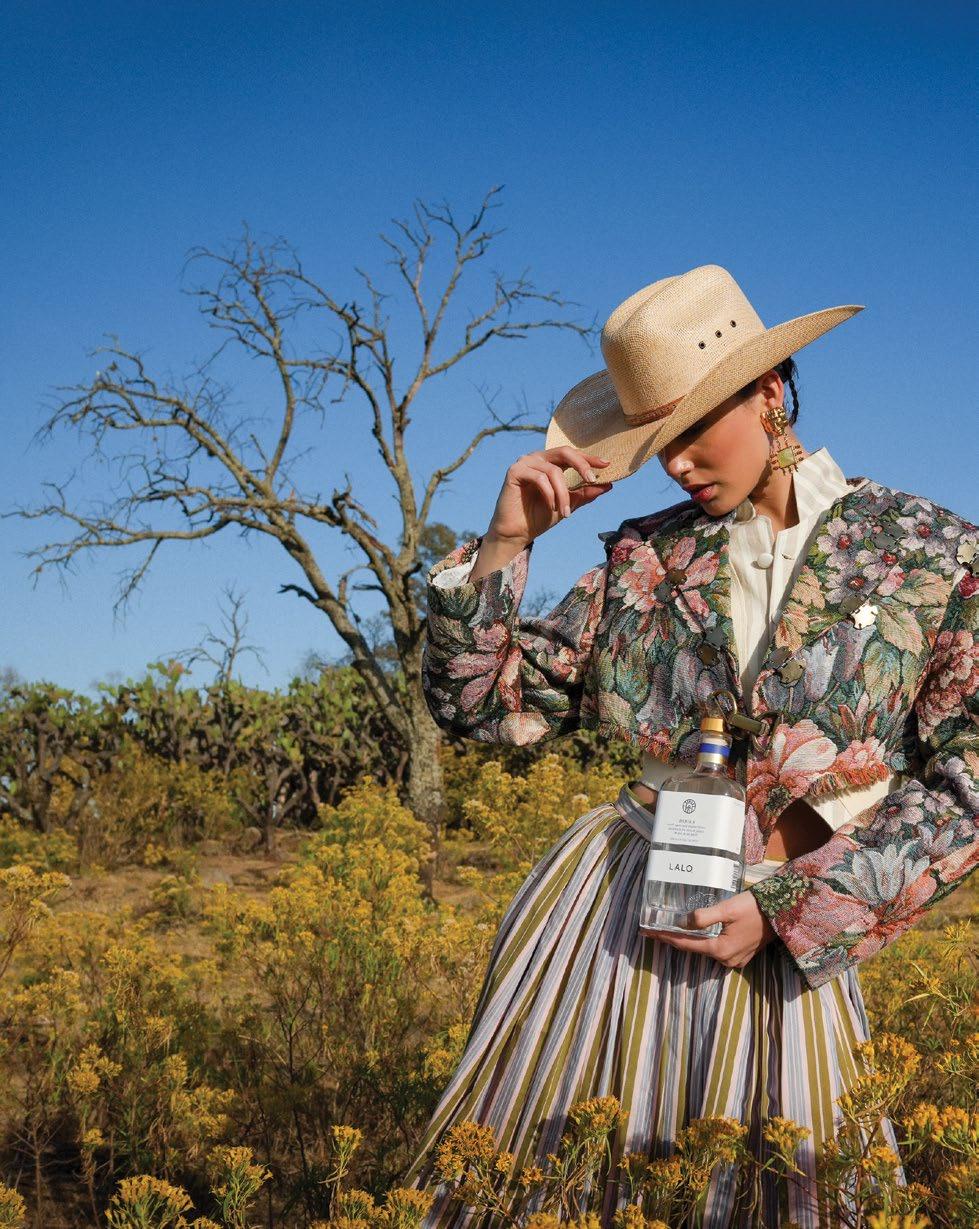
by
Photography Pablo AstorgaThe art of gift-giving is a delicate one. Both intensely personal and, at times, performative, the practice calls on the giver to encapsulate a relationship. In 2017, LALO tequila co-founders Lalo González and David R. Carballido found themselves walking this tightrope when they attended a friend’s wedding in Guadalajara.
Rather than buying an object for the newlyweds, the two men decided to make their contribution in another way—by crafting a small batch of tequila for guests to imbibe during the festivities, becoming part of the day’s rituals and celebrations. It was the perfect answer to a very simple question: What do you give a friend?
“Mexico really is what’s next. It used to be Berlin, but fast-forward to today, and Mexico has taken over that role as a pioneer of new things.”
“We were starting to create this effect of, ‘You need to be our friend in order to have LALO,’ because we were not a big company… It became, by accident, something so exclusive,” says Carballido.
This thoughtful inquiry doesn’t just continue to steer the duo’s company. It also grounds their latest campaign, “See New,” an invitation to enjoy the flavors of modern Mexico and a sign of the brand’s evolution from craft leader to mainstream premium. “If you want magic to happen in your life, you have to go down a different road every day,” reasons Creative Director Antonio Navas. “When you do that, you’re breaking with routine.” Inspired by the striking photography of Flor Garduño, the bold compositions of José Clemente Orozco, and the lively architecture of Luis Barragán, the campaign features models posing against the vibrant backdrops of Mexico City, Guadalajara, Los Altos de Jalisco, and Valle de Bravo. All the better to situate LALO in the vibrant culture from which it was produced.

“Mexico really is what’s next,” asserts Navas. “It used to be Berlin, but fast-forward to today, and Mexico has taken over that role as a pioneer of new things.”
For “See New,” the brand tapped Mexican fashion designer Patricio Campillo, who dressed the models in his Charro outfits, the spread collars and horsehead waistcoat buttons adding both referential and reverent flair. All campaign videos are scored with music from a Mexican composer. At the center is LALO, in a sleek glass bottle with a label that speaks to the brand’s ethos—pure, elegant, and fresh.
While the brand has evolved over the last five years, González and Carbadillo have maintained their commitment to the
standard they set for themselves back in 2017—spirits made with care, as if for a close friend. It’s a nod to the family tradition that González’s grandfather—Don Julio himself—created three generations ago: to make tequila not only a premium spirit but also one that many would choose to drink. LALO, which contains no additives, combines only three ingredients: agave, deep well water, and champagne yeast, distilled twice to secure its rich flavor. In a market that pushes increasingly diluted tequila, and celebrity branding, LALO remains committed to its original calling—to be a spirit by Mexicans for Mexicans. “We enjoy the beauties of Mexico on a daily basis,” muses Navas. “When you go to Mexico, that’s when you say, ‘Okay, now I get why people can’t stop talking about it.’”

IN THE WHIRLWIND YEAR SINCE STEVE O SMITH DEBUTED HIS THESIS COLLECTION, HIS DESIGNS HAVE MADE THE RED CARPET ROUNDS. UP NEXT? LEARNING TO SIT STILL.

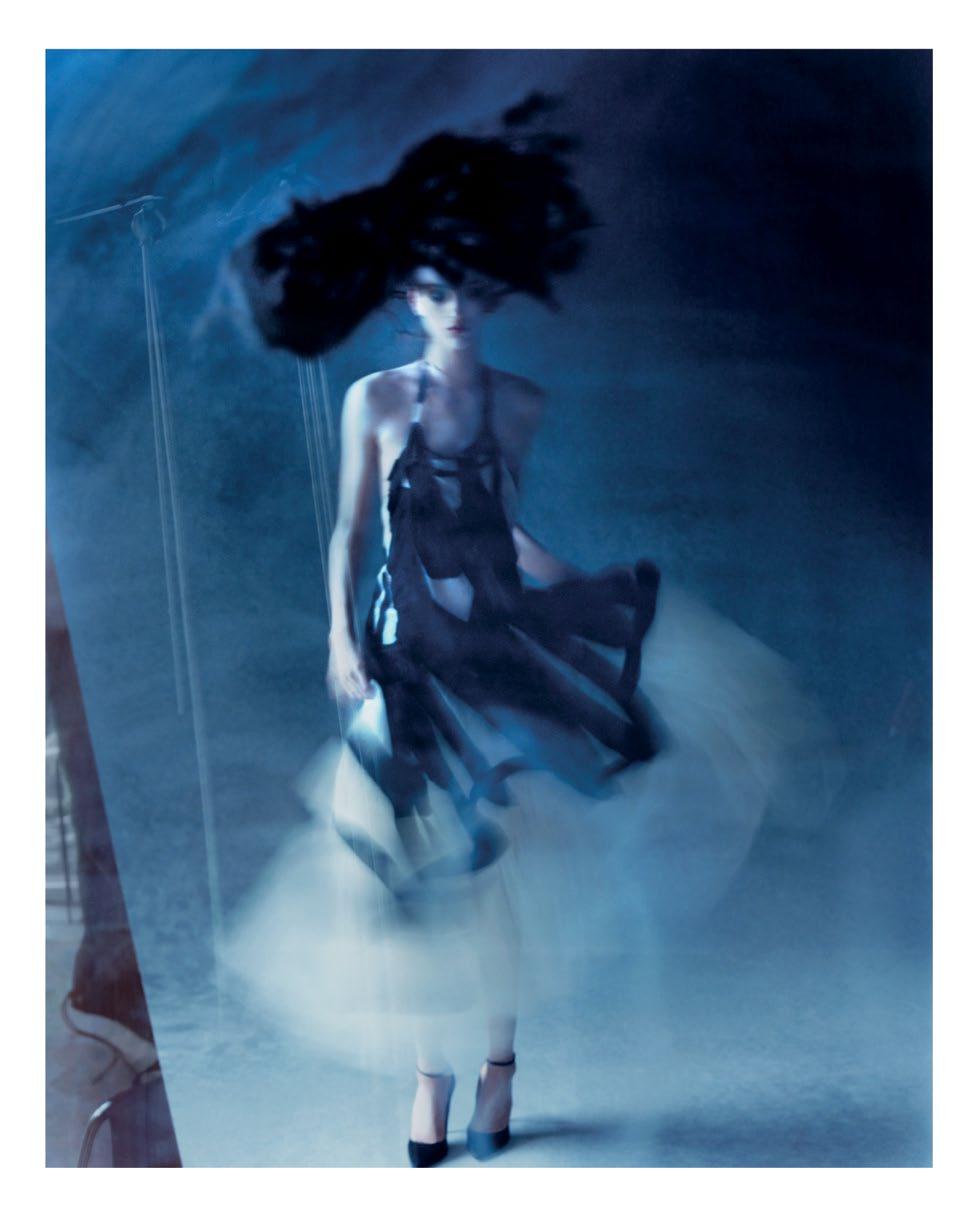
“FOR
BUT FOR ME, IT’S A WEAPON … I CAN DO WHATEVER I WANT, WHICH IS AMAZING AND LIBERATING.”—STEVE O SMITH
WHEN WE MEET, Steve O Smith is facing one of the biggest moments of his career. He’s zipping around his East London living room turned studio, chipping away at a dauntingly long to-do list. In a few days, his designs would make their Met Gala debut, appearing on actor Eddie Redmayne and his wife, Hannah Bagshawe. The space is suitably chaotic—a whirlwind of pins, paper, discarded fabrics, and tobacco dust. Lining the walls are images from his Fall/Winter 2024 lookbook, alongside his frenzied original sketches. “I do good work when I’m pissed off,” Smith lets out, gesturing toward his drawings. “I like to get into this state where it’s free-flowing, and I’m listening to music quite loudly and moving around. I’m always standing up—I never sit down to draw.”
It has been a transformative few years for Smith. After graduating from Central Saint Martins in 2022, the British designer, 32, has experienced a string of back-to-back pinch-me moments: His MA collection was swiftly spotted by stylist Harry Lambert, who called in his black-and-white figure suit for Harry Styles’s “Daylight” video. “It was quite shocking,” Smith remembers. (The same suit later made the fashion editorial rounds, appearing on the likes of Cate Blanchett.) But the designer’s most recent Fall/Winter 2024 collection— which was also his official debut—sees his work reach new heights of refinement. Crafted from black silk and organza, Smith’s pieces feel more like enchanted life drawings, scribbles lurching off the pages of his sketchbook and scrawling themselves onto the body. It tracks that his main inspirations for the collection were 20th-century caricatures and German Expressionism—namely George Grosz and his “sinister” drawings of the Weimar Republic.
“There’s something funny, a bit fucked-up about them,” he says, eagerly grabbing a book of the artist’s early sketches. He flicks through the pages, pausing to study a drawing of three angry soldiers. “There’s something borderline ludicrous about the entire concept, which is what keeps me entertained … It feels worryingly current.”
Smith was born in Amsterdam but brought up in the U.K. He studied fashion at the Rhode Island School of Design, where he learned basic craftsmanship, including how to fit, sew, and pattern cut. It was a sturdy yet traditional foundation, but when Smith returned to London to start his own line in 2017, it didn’t take long for him to hit a wall. “I’d been doing wholesale, but I wanted to go back to school because I felt like there was more potential,” he recalls. “And then the pandemic happened.” Burnt out from the “stressful and time-consuming” nature of wholesale, he began a master’s degree at Central Saint Martins— followed by a 10-week stint at the Royal Drawing School, where he rediscovered his childhood passion. “The tutors were like, ‘You’re doing something really interesting here, and you should try and translate that into what you’re making,’” he says, before laughing. “And so I did, with a lot of failures at first.”
Smith soon learned to surrender to his instincts. He flicks at a pile of papers on his worktable—hundreds of pages of drawings— and admits that he typically spends up to 12 hours a day doing rapid sketches, growing increasingly agitated in the process. “At a certain point, there’ll be an emotion in it,” he says. “The last few drawings I did, I was pressing so hard with the graphite stick that you could smell it. I was really attacking the
page.” He then applies this same process to his fabric-cutting, treating the material as an extension of the graphite. “I just start laying the fabric at the same speed that I was laying the marks down on paper, and then stitching them down.” The resulting designs, like his drawings, are pure id, alive with emotion and thrumming with energy.
The goal for the future, though, is to slow down. Smith admits that his natural state is to “move quickly forward,” but his main priority now is to give himself the space and time to nurture these more primal creative instincts. “I’m just able to draw and make the things I want to make, and I’m happy,” he says. “That’s partly from failing the first time around—I realized the things that I thought I wanted were not what I wanted at all.” His process may be slower and more intricate, but he sees it as a small price to pay. “For some people, creative freedom can be scary. But for me, it’s a weapon … I can do whatever I want, which is amazing and liberating.”
It leaves Smith with a blank canvas of possibility, an intimidating prospect for any designer. But for him, it’s a chance to dig deeper. With the chaos of the Met Gala under his belt, he’s planning a return to his sketchbooks and a “refinement” of the techniques he’s already mastered, particularly around form and gesture. That doesn’t mean he won’t be trying something new, though. The designer’s next collection, he notes elusively, will experiment with “tone”—a new territory—and a focus on color is on the horizon as well. But he doesn’t want to get ahead of himself. “Right now, I’m actually forcing myself to try and stay still, right where I’m at.”


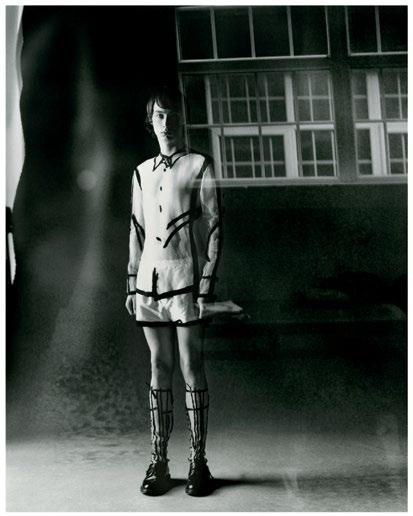


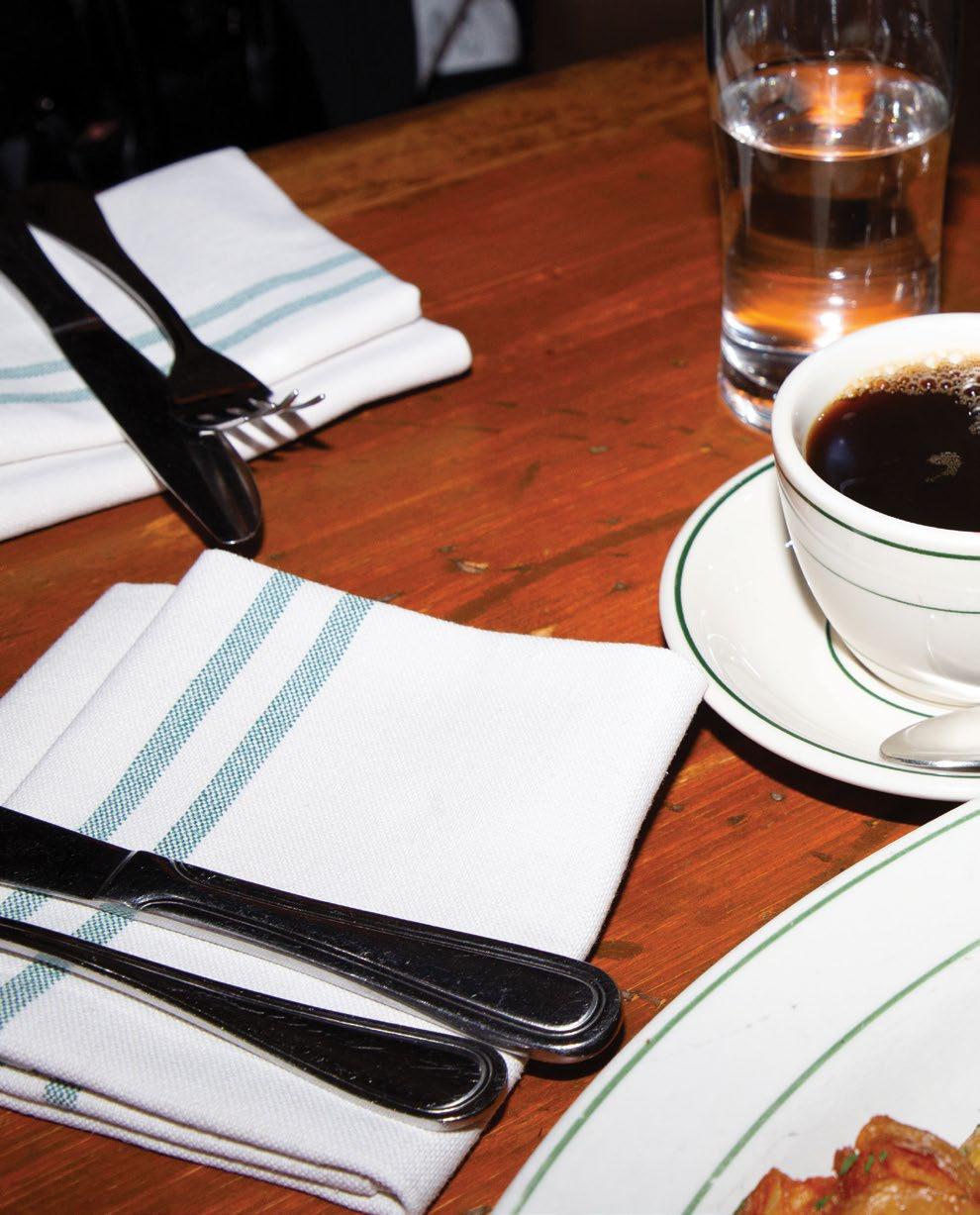 BY ANNIE ARMSTRONG
BY ANNIE ARMSTRONG
FIVE NEW YORKERS REFLECT ON HOW THEY ATTAINED THE CITY’S MOST COVETED ACCOLADE.

Becoming a regular at a New York restaurant is an art. To earn the experience of walking into one’s preferred establishment and being greeted by name, seated immediately, and offered “the usual” is a trophy that very few have the tact, savvy, and dedication to win.
There is no one path to this coveted prize. Consider the SoHo resident who routinely brings ice-cold bottles of water to the host stand at Balthazar in search of preferential treatment, the start-up founder who sends late-night pizzas to the staff at Tribeca hotspot the Blond every few weeks, or the keto-dieter who ascended to first-name basis with a Union Square farmers market vendor by buying “illegal” raw milk under the table. Every regular has their own process, but a few time-honored rules of thumb emerge: Visit at least once a week. Order consistently. Leave a healthy tip, of course.
These days, the dominance of apps like Resy threatens to snuff out regular culture. Reservations have become a cottage industry, with enterprising college students selling coveted tables for thousands of dollars on a burgeoning secondary market. But fear not—you can still bypass the host stand the old-fashioned way. In the pages that follow, five New Yorkers dish on the rituals and relics of the regular lifestyle.
ARTIST, 35
NEIGHBORHOOD: CHINATOWN
RESTAURANT OF CHOICE: DIMES, 49 CANAL STREET
“Dimes is like a portal. I come here to get my matcha oat milk latte and a peanut butter cookie once or twice a week.
I remember hearing that Sabrina De Sousa [Dimes’s co-owner] was starting a place in Chinatown back in 2013. What we now know as Dimes Deli was just Dimes back then, and it was really cute. Dimes probably grew into something they didn’t intend for it to become, but that’s like art, or like anything organic— if you keep watering something and giving it love, it will grow.
The fact that this area was crowned ‘Dimes Square’ is tongue-in-cheek. I’m a pretentious motherfucker, I’m an artist. I love shit like this—the blending of the mainstream and subcultures. Dimes is a really interesting case study in that way.”
PHOTOGRAPHER, 44
NEIGHBORHOOD: CHINATOWN
RESTAURANT OF CHOICE: HALAL CART, BROADWAY (CHANGING LOCATIONS)
“I’m not trying to congratulate myself here, but I just happened to walk by this guy’s cart as he was being robbed. I made a video of it, helped him communicate with the police, and gave him Band-Aids and some antibiotic ointment. This was maybe a year ago. I felt bad for him because I had seen him getting hassled before. He’s kind of a sitting duck, and his cart’s earnings are his family’s whole income. This one time I happened to be there when it escalated.
So now, he moved his cart to SoHo, and I see him every day. We wave and he flags me down, ‘My friend! Take a drink! Have some food!’ Once in a while I’ll take a seltzer to be a good sport. His food is great. I get chicken and rice.
But really for me, it’s just a microcosm of the great pleasure of New York. I spend so much time in transit that, on some level, I’m a regular all over town. This is one of those great indications of that.”
ARTIST, 46
NEIGHBORHOOD: BED-STUY
RESTAURANT OF CHOICE: GREAT N.Y. NOODLETOWN, 28 BOWERY
“My parents used to take me into Chinatown as a kid. As a teenager and later in my 20s, Noodletown was the late-night spot. As places changed and closed down, it went from a standard procedure, utilitarian restaurant to one of the best places around.
I go three or four times a month. If you have an adventurous friend, you can get the good stuff like soft-shell crab, and the crispy noodles are amazing.
If you’re by yourself, you get the noodle soup for eight bucks, and you’re in and out in 15 or 20 minutes. There’s a grouchy guy who knows me there, and a couple servers, but they leave you alone with your thoughts and your food. I get social anxiety sometimes, and it’s nice that they do not want to chit-chat at all. There’s this tension between sympathy and judgment sometimes when you eat alone, but that is not the situation at Noodletown.”
PAINTER, PHOTOGRAPHER, BARTENDER AT PAUL’S BABY GRAND, 74
NEIGHBORHOOD: EAST VILLAGE
RESTAURANT OF CHOICE: LUCIEN, 14 1ST AVENUE
“I’ve been coming here for 26 years, since it was a small, mom-and-pop French restaurant. You could always get a table, and there was no music. It has changed a lot since then. Zac, Lucien’s son, modernized it when he took it over and made it a very cool place. And I’m cool, so that’s why I’m here.
When I eat at Lucien, I usually have octopus and the French soup. It’s based on the Marseille soupe de poisson traditionnelle.
I worked here for a short time as a bartender, but I didn’t last long. I got fired by Zac’s mum. But it’s my local place, and I’m a Francophile. The food is awesome; it has never changed. Otherwise, it wouldn’t be in business.
I usually come twice a week. I’m a creature of habit; I never leave this eight-block radius. The only time I go Uptown is to go to Bemelmans Bar. When friends say to me, ‘Let’s go someplace besides your usual places,’ I ask, ‘Where?’ and they say, ‘Oh, a place on 17th Street.’ I’ll say, ‘No, I’m not going Uptown.’”
FASHION DESIGNER, “I FOUNDED THE BUSINESS 42 YEARS AGO, WHICH MAKES ME 39.”
NEIGHBORHOOD: TRIBECA RESTAURANT OF CHOICE: PASTIS, 52 GANSEVOORT STREET
“I’m at Pastis as much as twice a week. I always like to sit in a booth if I’m not with a larger group. I used to go to the old Pastis too —I loved it there, and I was sad when it closed.
I go to Balthazar, Pastis, and Minetta Tavern, and they’re all excellent. But I like the Pastis steak the best—it’s more like a hanger steak, and I like the big slab of butter on it. I also love to go for breakfast—it’s always very chill —but I probably go there for lunch the most. It’s easy for me to get there from my office.
I’ve been friends with Keith McNally [the restaurateur behind the original Pastis and partner in the new location] for a long time. I’ve known him since he was manager of One Fifth. These past few years I’ve gotten closer with him, and I certainly read his Instagram! He’s fearless. Very fearless.
Restaurants are better when they’re more personal. When I go to a restaurant and it’s impersonal, I don’t feel like going back.”


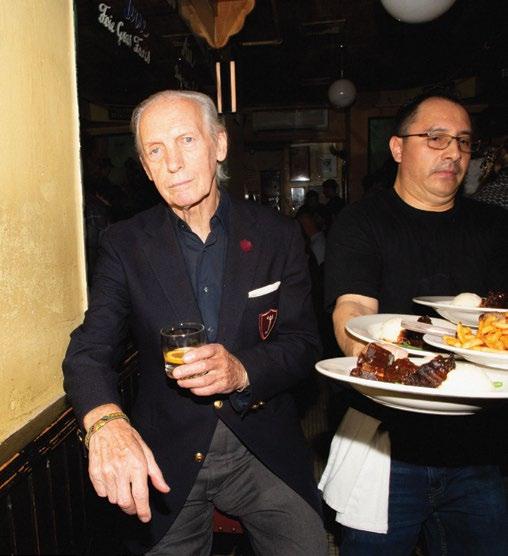
4 5 1 2


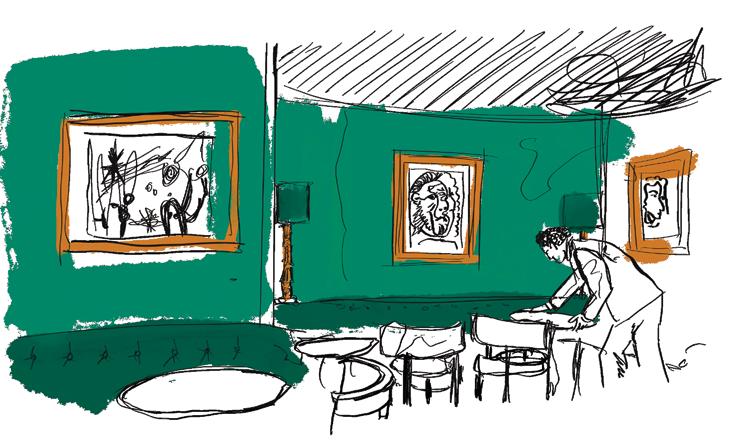
Podcasting It-boys Nate Freeman and Benjamin Godsill have had their fair share of martinis and sashimi on the concentric art fair, gallery opening, and biennale circuits. Here, they share an insider’s list of establishments—from the down and dirty to the white glove—that feed the art world.
When we started the podcast Nota Bene in 2021, our plan was simple: Hit “record” and gab about the global contemporary art world. We wanted to pull back the curtain (just a little) on an insider’s dialogue, the kind of hushed conversation that bubbles up between a dealer and a gadabout during a vernissage. It would be flush with market insights and art historical intel, but also witty and gossipy, cutting and incisive, unfiltered and unsparing—“the podcast version,” we called it, “of a boozy lunch at Sant Ambroeus.”
What we didn’t realize was that so much of the art world’s chatter would actually be about lunch.
This checks out. Where the art world eats isn’t just a part of the narrative, it is the narrative. The 600-person fundraising luncheons, gala dinners, billionaire breakfast meetings, post-opening cocktail buyouts—you can’t talk about artists and their dealers without talking about where they break bread.
So Nota Bene quickly became as much about food as art. In a typical episode, fair and biennale prattle quickly descends into unapologetically name-droppy litanies of chef-owners and menu items, or gut reactions to seating charts and canapes. There’s lingo: The secret phone number to bypass a booked-solid Resy page is called a “batphone.” When bigwigs are seated in Siberia, we point it out. This blend of the culinary and the contemporary arts has found its audience—our listeners (the jet setters and aesthetes) often admit to falling in love with the art world in part for its kinship with the finer things.
For CULTURED ’s Art and Food issue, we have compiled the ultimate insider’s list of our favorite art-world haunts along with some advice for where to drop your black card. Check, please!
veal Kronenhalle-style with roesti is the standard. Pro tip: sub out spaetzli to soak up the sauce. And if the mistkratzerli (roast baby chicken) is on offer it’s a must—if a certain, extraordinarily tasteful American collecting couple haven’t pre-ordered the entire allocation for the week, that is.

SETTING: This palace of crustacean into turbo mode during the magical earlyDecember week that is Art Basel Miami Beach. While new-school spots like Carbone and Delilah lure in the buzz-seekers and cryptoadjacent clients, real heads know the ideal is this Miami landmark, now in its 111th season.
SCENE: There are limited reservations now thanks to Covid, but the bulk of the restaurant is reserved for walk-ins, who usually face an hourplus wait. Slipping the maître d’ a couple cheeky Benjamins may help speed things along, but you still need to follow the protocol. Sitting at the bar, sipping a cocktail, and watching billionaire collectors waiting for a table and hearing their names called throughout the entire restaurant—it’s worth the price of admission.
ORDER: Seven select claws per person, chopped salad, hash browns, creamed spinach, full stop. It’s a big menu, but that’s all you need. Art Basel CEO Noah Horowitz made us get the fried chicken once though, out of pure curiosity—it was pretty good!
SETTING: Ensconced on Piccadilly, just steps away from the Ritz hotel, this grand, hundredyear-old building wears its history as a luxury car showroom and bank branch lightly, and for the past quarter-century has been a bastion of understated opulence at all hours of the day. Lucien Freud ate at the same table nearly every night until his death.
SCENE: Traders from the financial markets mix with collectors meeting their Christie’s handlers and ladies who lunch, from breakfast till supper. During major auction weeks or when the Frieze circus is in town, it’s chockablock full with major dealers and art-market makers. While there is no dress code listed on the website, we wouldn’t dare go here without a jacket and tie—Savile Row is just around the corner in case your wardrobe veers a bit too nouveau. Or if you’re from LA.
ORDER: The food is a bit beside the point here, but we’ve had good success with the oysters and other crustaceans, the serviceable beef tartare, and a surprisingly good burger.
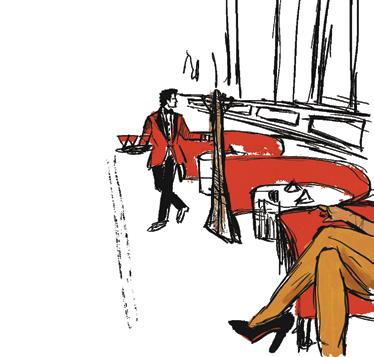
KRONENHALLE, ZURICH
SETTING: Celebrating its centennial year, this epic dining room sports an art collection worthy of the Kunsthaus up the street: Picasso, Matisse, Rauschenberg, Bonnard, and many others. Don’t skip the attached bar, with its lamps designed by Giacometti.
SCENE: Old school Swiss collectors and dealers are often camped out, so make sure to say “ hallo ” to Tobias (Mueller), Maja (Hoffmann), and Victor (Gisler). The stop-and-chats go into overdrive during Zurich Art Weekend, right before the O.G. Art Basel (just an hour away by train), when the dining room is packed with a who’s who of the art-loving jet set.
ORDER: Think heavy and Swiss. The sliced
SETTING: Founded in the ’60s as a Gallic snails-and-steaks joint deep in the heart of postwar Berlin, Paris Bar immediately became a celeb magnet—and then an art-star magnet—in the ’80s and ’90s, when Cologne and Berlin became the hottest gallery towns in Europe.
SCENE: In the ’80s: Kippenberger, Oehlen, Polke, Lüpertz. In the 2000s: Bruno Brunnet, the proprietor of Contemporary Fine Art, with Dash Snow, Cosima von Bonin, Peter Doig. Now: any of the young dealers making their mark on Berlin, and the artists that worship Paris Bar.
ORDER : Steak frites. Martinis.
SETTING: The oldest restaurant in Hollywood, a longtime home to exiled New York novelists trying to make a buck in Tinseltown. It eventually became a place where A-listers could stay under the radar by slinking into red leather booths and behind door-sized menus. Naturally, the exploding gallery circuit in LA has adopted the spot as its canteen of choice.
SCENE: Out-of-town New York dealers chasing memories of Old Hollywood, artists on the roster of galleries like Regen Projects, Karma, and Lisson.
ORDER: Nate went to Musso’s with Kenneth Anger once, and Anger ordered the lamb chops with mint jelly. So, that.
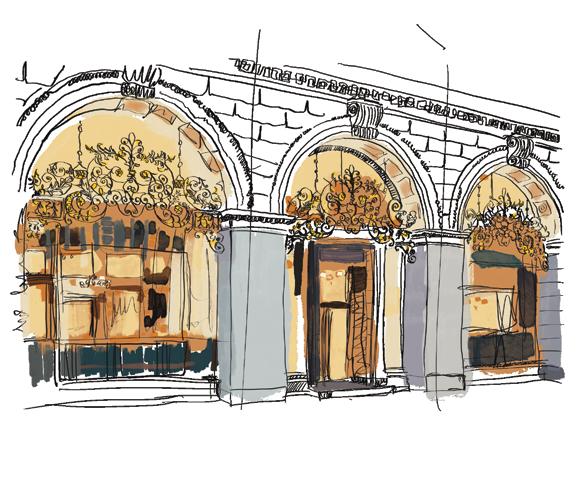
SETTING: No downtown restaurant encapsulates the go-go ’80s art scene quite like Indochine on Lafayette Street. Hell, the opening party was thrown in honor of Julian Schnabel.
SCENE: Still the gold standard for a megagallery buyout. Recent dinners there include bashes for Jamian Juliano-Villani and the epic Paul McCarthy/Albert Oehlen joint show at Gagosian. Pretty much impossible to walk into on a Saturday and not know a soul.
ORDER: Spring rolls, spicy beef salad. People like the lychee saketini—it’s not our thing, but it’s a classic!
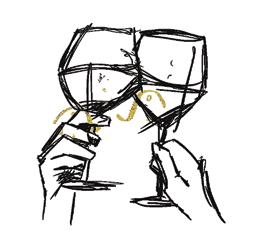
SETTING: Started by Fergus Henderson, Trevor Gulliver, and Jon Spiteri in the mid-’90s, it’s ground zero of nose-to-tail cooking. Bourdain really, really liked this place.
SCENE: If Sadie Coles hasn’t rented out the place for a private dinner, she’s probably eating at a corner table with some of her artists.
ORDER: Bone marrow. All the wines. If you’re lucky, Gulliver will pour you a glass himself.
SETTING: The original post-opening drinks spot for the Ferus Gallery gang, where dealer Irving Blum introduced Angelenos to New York Pop art figures—Andy Warhol, Roy Lichtenstein—while also giving first shows to a murderer’s row of local young talent: Ed Ruscha, Larry Bell, Billy Al Bengston, Ed Moses, etc. Not to mention the fact that Edward Kienholz made an artwork, The Beanery, 1965, that’s a life-size replica of Barney’s Beanery. It’s in the permanent collection of the Stedelijk.
SCENE: It’s leaned into more of a sports bar vibe in recent decades, and was discovered by GenZers post-Covid who felt the need to TikTok their way through the dive. But it’s also just a decent spot to grab a beer in the middle of the day and take in the history.
ORDER: Pub grub. Wings.

SETTING: Founder Michael Chow is an artist, and his Beverly Hills restaurant has some of the most spectacular decor you will ever see, courtesy of Chow himself. Jeffrey Deitch has called his enterprise a “total work of art.”
SCENE: Sure, the billionaires and movie stars
are there on a regular basis; all you need is a Getty Images search to tell you that. But it’s the night of Larry Gagosian’s annual pre-Oscars Mr Chow dinner—that happens to play host to what seems like every movie star and billionaire, not to mention the entire Los Angeles art scene—that we look forward to the most. It’s probably the best dinner of the year.
ORDER: Crispy beef, Mr Chow spareribs, Peking duck. The food here is extremely good. Be very wary of someone trying to be contrarian. They are wrong.
SETTING: Step back in time to a place where it feels like the handover never happened. One of the most beautiful curved wooden bars in all the world, with a luxurious leather armrest to lean on while leafing through the FT and hoisting a frosted silver tankard full of the bar’s signature beer.
SCENE: British expats from the worlds of finance and media who are longing for their club back in London flock to this elegant spot in the lobby of the Mandarin Oriental hotel nightly. When Art Basel Hong Kong rolls into town, it becomes a bacchanalia of jet-lagged Euro and American dealer types trying to remember what day it is and which “museum” has a reserve on that one work.
ORDER: It’s a bar—have a drink. They do have finger bowls of salty snacks that rival Bemelmans Bar. If you are trying life on life’s terms, the nonalcoholic Gunner is an ancient house concoction of ginger beer and grenadine that packs a sugary, restorative punch. The tankard Benjamin stole in 2018 is the only souvenir he’s ever thrown in the Rimowa that he is happy to still have.
When Art Basel Hong Kong rolls into town, the place becomes a bacchanalia of jetlagged Euro and American dealer types trying to remember what day it is and which “museum” has a reserve on that one work.
SETTING: It’s got the bones of the 1888 pub that’s been there for centuries, and the sheen of an owner with a day job selling $5 million paintings out of a white cube.
SCENE: Iwan and Manuela Wirth, co-founders of Artfarm and the global art-dealing enterprise Hauser & Wirth, reopened this pub in Mayfair in 2022, after a full refurbish of the classic space. Its resemblance to any other semi-posh Mount Street spot dissipates when you realize a lot of artists have work on the walls, and maybe one or two of them are drinking a Guinness at the bar as well.
ORDER: For god’s sake, beer. Maybe a lamb scrumpet if you have too many—the meat is from Durslade Farm, also owned by Artfarm.
SETTING: While their husbands, the aforementioned Fergus and Spiteri, opened St. John, Melanie Arnold and Margot Henderson transformed a burgeoning catering business into Rochelle Canteen. From the start, Chef Arnold has overseen the kitchen in an impossibly charming place tucked behind an old Victorian schoolhouse.
SCENE: Lunchtime-only vibes from the arguably greater half of London’s most acclaimed chef couple. Less offal than at St. John, but just the right amount of guttural cooking. East Side artists and the dealers who show them come in for what’s become an essential midday meal.
ORDER: It’s seasonal, so ask your server, but all the greens are excellent. You’ll regret whatever main you get because there’s always another one that’s just as good.
SETTING: A classic Echo Park dive bar that was long a post-concert spot for bands playing at the Echo across the street. At some point it got spiffed up a bit and became a wine bar, albeit a scruffy one. Owner Nick Fisher happened to be childhood friends with artist Calvin Marcus, and when he was offered a chance to buy the place, the longtime bartender commissioned some work for the place from his artist pals and made it the East Side’s go-to post-opening watering hole.
SCENE: Some guy playing the old piano, plenty of people smoking out back, crowds spilling to the tables on the sidewalk—and probably a good percentage of the city’s artist population on any
given night. Another data point: El Prado showed up in the story that coined the term “vibe shift.”
ORDER: Ask Nick, a master winemaker himself, about what’s pouring well. And get a hot dog.
SETTING: Sure, it’s a sushi place co-owned by Larry Gagosian, in the building that houses one of the gallery’s New York outposts, and the entrance is through the Gagosian Shop. Yet, it’s so much more than a canteen for the megalith’s staffers. Chef Masa makes it a destination-worthy sashimi bar, and it’s a happening lunch spot for people from all parts of the gallery scene and the art world at large.

SCENE: Benjamin has gone after an evening sale at Sotheby’s or an opening at the Guggenheim, and a lot of people from both had the same spot in mind. That being said, when Larry is sitting in the center booth, the whole room revolves around him, with friends coming up to pay their respects and check in with the boss.
ORDER: The rolls are outstanding, but don’t sleep on the duck fried rice with foie gras.

SETTING: A crowd-pleasing blockbuster spot from Estela chef Ignacio Mattos, who made a place that’s perfect for the big-budget buyout, or just a glass of wine and arancini at the bar.
SCENE: Chelsea dealers who wanted to stay on the West Side but come a bit downtown, Tribeca dealers meeting uptown collectors at a place that is a bit more grown-up than Walker’s. (We also love Walker’s!)
ORDER: Skip the cacio e pepe for a rich pasta with bottarga, and do not miss the fennel salad—it’s one of the world’s greatest.
SETTING: An open-air room in the heart of Roma with an iconic blue and black fish-skeleton mural that has been on your Instagram feed dozens of times. Gabriela Cámara founded Contramar in a former warehouse at the age of 22, an unheard-of age in an industry where restaurateurs spend decades paying their dues before going off on their own. Vogue later called Camera’s decision to open Contramar “one of the great confidence moves in the history of restaurants.”
SCENE: Large tables of impeccably dressed locals mix it up with visiting hipsters for lunches that start at 1 p.m. and often don’t end until 6. If you’re not a regular, good luck getting a lastminute table during the week of Zona Maco, but if you’re striking out, try hitting up your Sotheby’s contact—they usually book out the whole restaurant for their clients the afternoon before the fair opens. Even when it’s not Maco, it’s said to be bad business for a CDMX art dealer to not have their Friday lunch at Contramar.
ORDER: Everything. Benjamin has never had a bad seafood dish here. Nate was astonished when the Internet-famous tostadas de atún were not just a viral TikTok dish but one of the most insane tuna dishes in the history of the fish. The pescado a la talla—get it half verde and half roja—is killer. Oh and that one garlic shrimp dish—tacos salteados de camarón. Make sure you leave room for the meringue with fresh strawberries to soak up the loads of mezcal you will no doubt imbibe.
SETTING: An unimpeachably on-point cafe in the perfect intersection in the Marais. Translation: manna for Francophilic art people. SCENE: You will see people you know and half expect to be there, people you don’t know who look like they would absolutely be there, the occasional movie star, and not John Galliano. ORDER: Cigarettes with a side of something to drink.
Emily Colucci, Johanna Fateman, and Siddhartha Mitter represent three different approaches to art criticism. Here, they compare notes on the state— and the promise—of the discipline.
BY JULIA HALPERIN PHOTOGRAPHY BY MARISA LANGLEYAre art critics going the way of the town crier, the ice cutter, and the milkman?
More than a decade ago, critic Deborah Solomon estimated that there were fewer than 10 full-time art critics at major newspapers in the United States. Since then, that number seems to have dwindled further (as has the number of major newspapers).
What’s clear, and has been for some time, is that the future of art criticism will not look like its past. It will exist on new platforms, be funded in new ways, and be written by a new generation.
To envision what this evolution might look like, CULTURED assembled three of today’s sharpest practitioners for a roundtable discussion on a recent spring afternoon in Manhattan. Each writer is in a different place in their career and has a distinct relationship to their craft. Since co-founding the blog Filthy Dreams in 2013, Emily Colucci has developed a cult following for her wry and eclectic takes on contemporary art, film, books, and music. Siddhartha Mitter cut his teeth as a culture reporter for WNYC public radio before joining the Village Voice and now writing long-form features for The New York Times. Johanna Fateman made her name in the art world as a critic for The New Yorker and Artforum—but has recently found herself questioning her place in the field.
Together, these writers paint a picture of a discipline undergoing deep, sometimes painful, transformation. What they share is a commitment to leaving it better off than they found it.
If there is a traditional path to art criticism, none of you took it. You didn’t go to journalism school or study art history. Siddhartha, you are a PhD dropout who studied social science. Johanna, you went to art school and then cofounded the band Le Tigre. Emily, you studied humanities and social thought. Is there something you learned from your original field that might seem unrelated to art criticism, but ended up informing it?
SIDDHARTHA MITTER: Nothing goes to waste. I studied development, a term used until the late ’90s to think about how economies grow or don’t grow. I spent time in West Africa during the ’90s as a researcher, so when African contemporary art emerges in the art world, I have a sense of the political and economic history of the countries it’s coming from. But most of all, it directs me that much more towards race, gender, class, and empire. How would an economist look at this? How would a sociologist, an anthropologist?
Johanna, how does having gone to art school inform your work as a writer?
JOHANNA FATEMAN: I was a painting major at the School of Visual Arts. There are certainly technical, formal things that I can talk about. But more important was my career with my band, which I consider my art—how much it takes to realize something, how difficult it is to collaborate with people, how failures are generative.
Emily, how does your interdisciplinary humanities education shape your work?
EMILY COLUCCI: My origin story begins my freshman year at New York University, when I took a course with Marvin Taylor called something like “Punk to Postmodernism, the Downtown New York Scene.” We read Kathy Acker and looked at David Wojnarowicz. [After] growing up in suburban Pittsburgh, my eyes were opened— there’s a whole world where we can question what language is, or the role of the artist in activism.
Would you describe yourself as an art critic?
COLUCCI: I don’t know. I guess so. I like to think of Filthy Dreams as a hobby. There are barely any people with hobbies anymore. Everybody has to monetize everything.
Siddhartha, you said you don’t love the term art critic.
MITTER: I’ll take art writer, I’ll take culture journalist. I don’t like to use critic for myself because of the whole authority thing. More of the pieces I do are interview-driven. The “critic” hat doesn’t feel quite right for me. I can rock it, but it’s not my favorite.
“In the same way that we should imagine what a world would look like that doesn’t need prisons or police, we should imagine a world that doesn’t need press trips.”
—SIDDHARTHA MITTER
Criticism plays very different roles in your day-to-day lives and livelihoods. Emily, you made a conscious decision to keep your art writing separate from your day job.
COLUCCI: I don’t think I’ve ever had the option for it to be a day job. The only money I ever got for Filthy Dreams was the Warhol Foundation Arts Writers Grant in 2016. They no longer do the blog category, and I like to think I played a little part in that decision. Other than that, Filthy Dreams has never made money. There are no advertisers, no funders. For a long time, it was just on a free WordPress site, and then I gave in to ego and got a .org address. But having that separate from my freelance consulting writing job gives me the freedom to do whatever I want. And that, to me, is everything.
Siddhartha, you are writing for the ultimate establishment outlet: The New York Times. How do you feel being on the inside, but also still freelance?
MITTER: Well, it means that my pay is bad, whereas most pay in the field is humiliating. My tendency is to do pieces that involve a lot of work and a lot of time for the same word rate. So anybody with any sense who examined my situation would be like, “You’re completely nuts.” And indeed, it is catastrophic. But I don’t have children—if the ship goes down, it’s just me on board. Given the current state of the world, there is also unquantifiable value in putting a little something useful into the culture. That’s where the Times comes in. It’s an enormous platform. If you write even 300 words in the Times, somebody might write to you about it from Australia or Paraguay.
Johanna, you were heavily associated with two institutions that you’re not working with anymore: The New Yorker and Artforum The New Yorker cut back on publishing “Goings on About Town” listings and short reviews in print last summer, and you joined the boycott of Artforum last fall. How has your relationship with the field changed?
FATEMAN: It’s devastating. I don’t really think of myself as an art critic professionally [anymore]. There was this window of time where I could arguably say that I was supporting myself with art criticism. That’s definitely over. I write one review a month [for 4Columns], which just feels like I’m not even in the game.
Maybe it’s positive because it makes it undeniable that it’s unsustainable. So it’s back to first principles: Why did I do this in the first place? What made me passionate about this? And how can I bring that to something else? This has been an incredible time of my life. I’ve learned so much, and I’ve become a writer. But I feel like it may very well be over. It sounds so depressing, but I don’t feel depressed about it.
I just finished writing a little book for “Cookie Jar” [a series of pamphlets published by the Warhol Foundation]. My band, which was active from 1999 to 2005, reunited last summer. My piece is a tour diary that’s using the travelog to ruminate on the state of art criticism. That has given me a way to integrate the two tracks of my life.
When I was an editor at Artnet News, I found that reviews did not drive traffic. I believe there is value in them, but I had a hard time making that case to people who only cared about numbers. If there’s a dwindling audience for criticism, why do it?
COLUCCI: I’m entertaining myself. I get a thrill out of articulating somebody’s work in words. I think it is an art form, even though a lot of the art world just sees it as free PR. The nice thing about having my own website is I don’t really care who reads it. I do most of my stuff on Filthy Dreams because the financial realities are so bad anyway. What is the difference between getting $100 for a

piece that I’m not that happy about and getting nothing for something that I am thrilled about?
MITTER: I have a pretty clear framework of who it’s for. Ideally, it’s some combination of three different constituencies. One is artists and arts workers who are in the story. Another is the public. The third is the record.
Almost any piece I research, I end up reading something that was in the Times 10 years ago, 20 years ago. The great optimism is that you’re serving all those [constituencies] with every word. It’s not one sentence for the insiders, one sentence for the public.
FATEMAN: When I was writing for The New Yorker, I felt like I was writing to a general reader. Like, I want to know what four things I should see in Chelsea this weekend Artforum was more for the art world—so that was a place for me to be more provocative, and to write for the record.
MITTER: I’m always looking up old Artforum pieces.
FATEMAN: Same. I’m not boycotting the archive.
I want to talk about the phenomenon of the negative review. People are constantly lamenting that it’s a lost form.
“The negative review has an important place in the ecosystem.”
—EMILY COLUCCI
But when a pan is published, the writer often gets a lot of blowback. Have you written a pan?
COLUCCI: Well, you know I have.
FATEMAN: I have written negative reviews. But there’s something about desperate hot takes, which don’t contribute in good faith to any kind of discourse, that debases the entire profession. I think they also tend to be tied to reactionary politics on some deeper level. So that’s not my jam—I don’t need attention that much.
Maybe this goes back to being in a band or being in
art school, but I do feel like we’re all in this together. Artists, writers—we want to make our conversations better. I wrote what I felt was a pretty negative review of Anicka Yi’s paintings show [at Gladstone Gallery in 2022]. And she shared it on her social media.
She could have written to me and been like, “What the fuck was that?” She didn’t. Maybe she’s glad that someone was able to do that without resorting to racist, sexist slurs or cheap shots. I did write it knowing this person is in my community. I am accountable in some way.
COLUCCI: I want to defend the negative review because I think it has an important place in the ecosystem. Someone has to say, Hey, this actually isn’t as good as everybody is saying. It holds institutions to account—not everything they do is amazing.
MITTER: And you can have a bad show of good work.
COLUCCI: That’s often what I find myself writing about. Like the piece I did recently about the Whitney Biennial’s early press release text that was just this impenetrable artspeak. I’ve noticed, now, that it’s a little simpler. Where’s my consulting fee?
The Hannah Gadsby show at the Brooklyn Museum in 2023, “It’s Pablo-matic,” was an example of some critics taking real joy in being mean and others engaging in good faith.
COLUCCI: I didn’t like the Hannah Gadsby show, but I didn’t pile on. There was a sense of, How dare the stand-up comedian come in and have an opinion on Picasso? If that’s the kind of elitist art criticism you want, fine. It’s not what I like to do.
The artists presenting work in mainstream institutions have also become a lot less white more quickly than the reviewers have. And white critics may be less comfortable critically reviewing work by non-white artists. How do you think about that? Are white critics genuinely less equipped to engage with that work in a critical way?
FATEMAN: The Times had not one but three white critics review the Whitney Biennial. I thought that said a lot.
COLUCCI: I do more reading and research when I’m writing about an artist whose experience is different from mine, but I wouldn’t have a problem doing a negative review.
MITTER: I would like to write about more white artists. I’ve always thought I’d like to do a “40 under 40 white artists” list. I think it’s super important to hear from interesting white artists who are dealing with culture and society and themselves. Send them to me. I want to profile them.
Various initiatives seek to train young critics and, specifically, critics of color. But Siddhartha, you question whether
that is responsible.
MITTER: It’s like sending a kid to football camp with great coaches and great facilities. You produce a really great football player, but then what? They’re still not going to make the league because the problem in this industry is artificial scarcity. I love programs that bring up baby critics of all different backgrounds. We need those talents. But if the platforms existed, those talents would learn by doing. We need new platforms.
What do you think about the Substack model?
COLUCCI: I don’t like it. There are a couple of reasons why. One, it’s not google-able. You don’t have the random person finding you, and that is part of the joy of Filthy Dreams for me. One of our most-read articles is a review I did of the show Euphoria, because I have something in the title about a micropenis. On Substack, who am I talking to? Just the people who subscribe? I want to talk to the person googling around for a micropenis. The other problem I have is that these platforms disappear. I own my website. It’s never going to disappear.
MITTER: You’re doing golden age web culture, and it’s beautiful. Substack isn’t beautiful.
“There was this window of time where I could arguably say that I was supporting myself with art criticism. That’s definitely over … Maybe it’s positive because it makes it undeniable that it’s unsustainable.”
—JOHANNA FATEMAN
MITTER: I’ve done a small number of gallery-funded things under very particular circumstances. I tell them, “I’m going to be recusing myself from writing about your shows for a number of years for the Times, which has a policy.” I like the conflict of interest rules. They just are really hard to manage in light of the resource allocation in the field. I get offered press trips all the time—I’m against them.
Why?
MITTER: They’re compromising, and they’re bullshit. Given the scarcities of the field, are they a necessary evil? No, they’re not even necessary. In the same way that we should imagine what a world would look like that doesn’t need prisons or police, we should imagine a world that doesn’t need press trips.
I would be remiss if I didn’t ask what you’re thinking about A.I. as it relates to art writing. Does it stress you out?
FATEMAN: I’ve put, “Write a review of X in the style of Johanna Fateman” [into ChatGPT]. I ended up with a prompt that was something like, “What might Johanna Fateman say about Picasso?” It had an argument for the radical queer imagery of Les Demoiselles d’Avignon. I was like, This is a really hot take. But I’m not worried about it because there are too many other things to worry about first.
MITTER: Let’s write about what A.I. hasn’t noticed yet.
Are there alternative models to support art criticism that you think could work?
FATEMAN: I want listings. I would love it if [the gallery guide app] See Saw or another app built out robust curated listings and reviews.
If the small galleries are gonna survive, we have to start finding ways to drive traffic to them. People are starting to understand that the era of unlimited free content is on the wane. They may be willing to pay $5 a month so they have a resource to enjoy their city.
MITTER: New models might not be that far out of reach. They’ve emerged in journalism for social justice issues, like the Marshall Project. The arts field is awash in money. If you took a 2 percent levy on all the galas in a given season, you could fund a kickass publication for years.
Another
media model I’m
curious to get your view on
is
the gallery-funded model—the Gagosian Quarterly magazines of the world.
FATEMAN: We need independent magazines, and that’s the opposite. I’m not above contributing to publications like that if it’s on a topic that makes sense. That might be a way for writers to make money, but it is not a replacement for outlets that are disappearing. It’s not criticism.
COLUCCI: It’s marketing.
If I gave you $10 million to enrich art criticism right now, how would you spend it?
FATEMAN: The thing that’s amazing about New York right now is the amount of talent floating around. The most brilliant writers in the city are trying to get a job writing grants.
MITTER: I would put my optimistic and perhaps delusional bet on the public. I would not spend that $10 million on something for insiders. I would orient it towards regions [outside major cities]. I think some really great things could happen.

ART COLLECTING IS, ABOVE ALL, AN ACT OF FAITH. IT REQUIRES FAITH IN THE VISION OF AN INDIVIDUAL ARTIST, FAITH IN THE ENDURING VALUE OF LIVING WITH ART, AND FAITH IN THE COLLECTOR’S ABILITY TO PRESERVE THEIR ACQUISITIONS FOR POSTERITY. THE 10 INDIVIDUALS ON CULTURED’S SEVENTH ANNUAL YOUNG COLLECTORS LIST SHOW US WHAT COMES AFTER THAT LEAP OF FAITH. WHETHER THEY ARE THE FIRST IN THEIR FAMILY TO COLLECT OR PART OF A LONG LINE OF PATRONS, THESE ART LOVERS ARE COMMITTED TO SUPPORTING AND GROWING ALONGSIDE ARTISTS OF THEIR GENERATION. THEY ARE PUSHING MUSEUMS TO OFFER A MORE EXPANSIVE, ENGAGING, AND TRUER VIEW OF THE ART WORLD—AND PUSHING THEMSELVES TO REMAIN CONTINUOUSLY OPEN TO NEW DISCOVERIES.

It’s a rare moment in a collector’s journey when, at long last, their collection comes full circle. That’s the position that Jen Rubio— co-founder and CEO of the buzzy luggage brand Away—and her husband Stewart Butterfield—co-founder and, until recently, CEO of Slack—found themselves in not long ago, when they purchased a large-scale work from Pop art titan Ed Ruscha. One of Rubio’s first acquisitions, given to her by Butterfield, was a Ruscha lithograph. “Coming full circle like this feels so incredible, so meaningful,” she coos.
Collecting with meaning could be Rubio’s motto. Since she first immersed herself in the art world, her collection has ballooned in size and scope—boasting contemporary stars like Simone Leigh, Joan Mitchell, Mickalene
Thomas, Marina Perez Simão, Claire Tabouret, and Salman Toor.
The couple have doubled down on this commitment by selecting the New Mexico desert as the location for their future foundation, a vast sculpture park. It’s still early days, but the duo intends to commission objects that will “live in the massive open space in perpetuity, engaging with the geography over a very long time, hopefully well beyond us,” says Rubio.
Rubio has found another way to approach art with a sense of purpose. The youngest member of the Whitney Museum board, Rubio took the step—as one of her first actions following her appointment—of endowing an associate curator position focused on works by Latinx artists. She also spearheaded the Free Friday Nights initiative, enabling the museum to open its doors each week free of charge. In the year since the initiative’s inception, she says, the average visitor age has dropped. “They’re a more diverse group, too. My goal is to make the institution a vital part of growing up in New York. The barrier to entry is not just the cost—it’s making people feel welcome.”
“MY GOAL IS TO MAKE THE WHITNEY MUSEUM A VITAL PART OF GROWING UP IN NEW YORK. THE BARRIER TO ENTRY IS NOT JUST THE COST—IT’S MAKING PEOPLE FEEL WELCOME.”

For Los Angeles–born, New York–based collector Abby Smidt, art’s purpose is to inspire new generations. Perhaps that’s because her own connection took hold as an elementary school student, when she won a national competition that landed her abstract, Paul Klee–inspired work-on-paper in the Smithsonian. “It’s still hanging in my parents’ house,” she shares.
Following her undergraduate studies in contemporary art history at the University of Pennsylvania, Smidt moved to New York,
where she worked at Sotheby’s and Artsy before starting her master’s in art business at the Sotheby’s Institute, which she’s currently completing. Though she grew up surrounded by art, her own collecting began about three years ago and picked up speed after a studio visit with LA painter Gwen O’Neil. “Her work kicked off my interest in visiting artists’ studios and getting to know the artists,” says Smidt. “I know most of the artists I collect and I love their work, but I also love their stories and their processes. Gwen was one of the first I really connected with.”
Since then, Smidt has acquired works by Grace Carney, who had her first NYC solo show at PPOW earlier this year; Brice Guilbert, whose large-scale canvas has pride-of-place in Smidt’s NYC apartment; as well as Nicolas Shake, Lily Stockman, Angela Heisch, and Ed Ruscha. “I’m definitely attracted to light, pastel, happy colors, and artists I can relate to,” says Smidt. “I have to see a work in person to fall in love with it.”
“MUSEUMS AND ART IN GENERAL HAVE THE POWER TO ENRICH OUR INTERESTS AND OFFER A GLIMPSE INTO VARIOUS WORLDS. I THINK IT’S SO IMPORTANT THAT YOUNG PEOPLE VISIT MUSEUMS IN THE CITIES IN WHICH THEY LIVE AND AROUND THE WORLD. I HOPE ONE DAY TO BE INVOLVED IN FURTHERING THAT.”
Smidt interned at LACMA during high school, and is now on a young collectors committee there. She also sits on the Young Collectors Council at the Guggenheim and holds a special admiration for museum directors. “They help shape the city and bring everyone together,” she says. In terms of the contribution she wants to make to the art world, Smidt is clear: “It’s so important to get young people to go to museums around the world and in the cities where they live. I would love to be involved in furthering that.”

Gwen Tilghman is descended from one of 19th-century Europe’s most revered art-collecting families. The Rothschild banking dynasty’s vast holdings—which, over the years, have boasted historic works of Renaissance art, priceless jewelry, regal furnishings, and rare manuscripts—may have given rise to the infamous term le goût Rothschild, but this young American collector isn’t resting on those gilded laurels.
“I’m more of a minimalist,” she muses from her office at Volt Global, the New York–based investment fund she founded last year. Tilghman prefers to keep an uncluttered, whitewalled home that lets the works in her collection do the talking. “I tend to gravitate toward bright colors and abstract shapes,” she says, “and I’m a big fan of nature.”
So far on her collecting journey, Tilghman has scooped up color-dripping, eye-popping works by rising artists Markus Amm, Alejandra Seeber, Patricia Treib, Ryan Wallace, and Zak Kitnick—plus “three Daniel Fuller photographs showing abstracted ocean views and sunsets that almost look like Rothkos.” Recently, she bought a textured canvas by Marina Rheingantz, and donated another piece by the Brazilian artist to the ICA Miami (where her uncle, on the Rothschild side, sits on the Donors Circle). But it’s her first purchase, a painting by Sam Moyer, with its undulating fields of blue, that she considers the centerpiece of her collection. “It reminds me of a Loïc Raguénès wave painting,” she says, “with a dash of Cy Twombly.”
If there’s any family influence behind Tilghman’s collecting philosophy, it comes from her mother—also on the Rothschild side—who instilled in her children a reverence for contemporary art. “She was a lifelong collector— contemporary names, versus the classics,” Tilghman says. Her vast collection featured works by George Condo, Jean-Michel Basquiat, and Andy Warhol, as well as “two beautiful Francesco Clemente paintings.” Most of those works went to auction following her mother’s death in 2020, but Tilghman kept a few as cherished mementos, including a Warhol print
“EMPOWERING WOMEN IS SOMETHING I TRY TO CULTIVATE IN MY ART COLLECTION, TOO. I FIND MYSELF SEEKING OUT ART BY WOMEN THAT SPEAK TO ME.”
of General George Custer and an expressionistic flower painting by Donald Baechler.
Tilghman’s gallery circuit includes White Cube, Sean Kelly Gallery, Clearing, and, when she’s in London, Kate MacGarry. She leans on a few well-positioned friends to help her edge out the competition when necessary. Some of those insiders hail from her college days at Yale—but while her friends were students in the university’s elite art program, Tilghman pursued engineering and economics.
“Those are underrepresented fields for women,” she says. “I remember teaching girls to code and helping them to expand their horizons … Women empowering women, especially in finance—I’m one of the few woman investors who has started a fund—has been a central part of my life.” She pauses to reflect. “It’s something I try to cultivate in my art collection, too. I find myself seeking out art by women who speak to me.”

The logic behind Noora Raj Brown’s collection is simple. “The older you get, the more you discover your own taste,” she says. “I believe in buying art you feel you can’t live without.”
Raj Brown and her husband, Ryan Brown, began collecting nearly a decade ago while living in New York’s West Village. “The first piece we bought together was a Matt Bilfield. My husband picked it—it’s very Pop, colorful, and playful,” says the Goop executive vice president. While Brown favors the bright and bold, Raj Brown opts for a minimalist aesthetic. “The first work I bought personally was a
Christopher Wool—a beautiful artist proof,” she recalls.
A lot has changed since these early acquisitions—the pair traded New York for Los Angeles and had their first child. Nevertheless, their collection, which now lines the walls of a sun-filled Pacific Palisades abode, remains a celebration of distinctive visions. “It’s easy for people who know us to guess who chose what,” Raj Brown says with a laugh.
These interwoven visual languages are a testament to a collecting philosophy that reflects both individual tastes and the passing of time. One of Raj Brown’s favorite works is a Stanley Whitney that hangs in her daughter’s nursery. “I loved the idea of starting her collection early,” she muses. “Even though Whitney’s work has such deep meaning, it felt like something a child could attach to. It’s a piece that will take on different meanings the older she gets.”
Beyond Goop, family life, and collecting, Raj Brown is a devoted philanthropist. She’s a founder of the voter engagement organization I Am a Voter, and a board member of the
Hammer Museum. Raj Brown is particularly active with Hammer Projects, which supports emerging artists. “An incredible collector once explained to me the importance of meeting artists that you grow with,” she recalls. A custom mural by artist Caroline Lizarraga in the family’s dining room underscores these relationships. “Caroline and I are in the same life stage with young kids. I love that as her career grows, I can support her in different ways,” she says.
Above all, collecting serves as a continuous source of inspiration. “I believe in the power of surrounding yourself with beauty,” Raj Brown concludes. “In my job, I am constantly pulling inspiration and references from all over. I love living in a space where I get that by walking in the door.”
“I BELIEVE IN THE POWER OF SURROUNDING YOURSELF WITH BEAUTY.”
“Art is meant to be shared, not coveted,” says Chelsea Mehra. Recently, the young collector and founder of venture capital firm RUCA Capital has taken that sentiment further than most—in 2023 she established the RUCA Foundation, an arts organization and private museum. Mehra, who grew up just outside of DC, chose historic Georgetown to house the fledgling institution, which showcases works from her expansive contemporary collection and will soon be made accessible to the public. These days, as the foundation’s executive director, she spearheads programming efforts and the collection’s curation.
Strolling through Mehra’s Art Deco apartment overlooking New York’s Central Park, one finds works by Robert Longo, Issy Wood, and Ed Ruscha. An Anna Weyant hangs in the 30-year-old’s dining room. She tells me, offhandedly, that she won it in a bet with friends at the Armory Show. “My focus has always been to support today’s most compelling living artists,” she says. “I prefer to know that my patronage is directly impacting an artist during their lifetime.”
Although her tastes are firmly situated in the present, the collector—who sits on MoMA’s Young Patrons Council and is also a patron of the National Gallery of Art, Whitney Museum, and LACMA—took inspiration for the RUCA Foundation from the great art patrons of the past, from the Medicis to the Fricks. “Collecting art is one of the oldest forms of storytelling,” she explains. “I want to build a world-class institutional collection that will exhibit and preserve some of the most important masterworks of our time.”
To date, the collection boasts works by heavyweights like Cecily Brown and Katherine Bernhardt. The latter painting—acquired from the legendary collection of Rosa and Carlos de la Cruz, role models of Mehra’s—is a favorite. But Mehra understands that building a top-notch collection can’t be rushed. “It can take months, sometimes years, to truly understand an artist’s practice,” she notes. “I am extremely disciplined about acquiring pieces that fit my vision.”
Mehra hopes that the RUCA Foundation’s impact will extend beyond contemporary art. “I was raised with the idea of sangha, which in Sanskrit refers to a culture held intact by a like-minded community,” she says. “I feel a responsibility, as a steward of many cultural assets, to try and tell the story of humanity.”
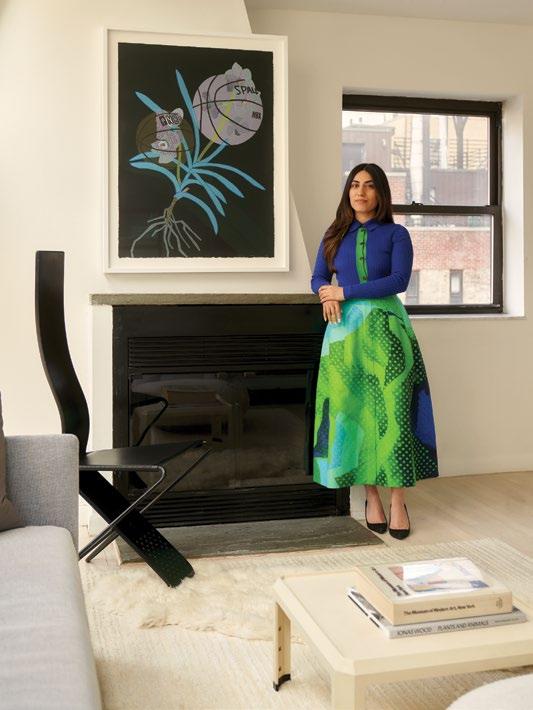
“I FEEL A RESPONSIBILITY, AS A STEWARD OF MANY CULTURAL ASSETS, TO TRY AND TELL THE STORY OF HUMANITY.”


Daniel English loves John Giorno. Not only does the 43-year-old collector make nightly calls to his very own Dial-A-Poem, which rests atop a Jerome Byron plinth, he also has a Giorno idiom tattooed on his left inner bicep (“Space Forgets You”). “I don’t know what he meant by it, but to me the idea is empowering. You can leave a space and it forgets you, so you don’t have to take it too seriously,” English says. “But also—if you don’t do something to make an impact, space will forget you.”
Today, English—who was raised outside of Detroit and is based between New York and Arlington, Virginia—moves through the art world’s insular spaces with ease. But he didn’t discover his love for contemporary art until he read Gerhard Richter’s The Daily Practice of Painting in college—a light bulb moment he remembers well. “I have a journal entry from college where I wrote about how enamored I was with art because it helped broaden my perspective and see the world differently. I found that powerful,” he recalls. It took a few years (during which he worked for several tech start-ups and founded his own investment firm) before art called to him in earnest.
“AS SOMEONE WHO DIDN’T STUDY ART HISTORY OR GROW UP IN A FAMILY THAT COLLECTED ART, GETTING STARTED WAS VERY INTIMIDATING.”
“As someone who didn’t study art history or grow up in a family that collected art, it was very intimidating,” says English of his early forays into collecting two years ago. But a sharp eye, honed during his years in real estate investing, as well as the guidance of veteran advisor Rick Cappellazzo, have enabled him to amass a collection that includes works by Lynne Mapp Drexler, Karyn Lyons, Wendy Park, Hayley Tompkins, Jane Dickson, Titus McBeath, and Henry Swanson. He is also preparing to serve as a founding member of the Met’s newly minted Vanguard Council, which he says “will provide support for innovative, visionary, and cutting-edge projects” at the museum.
The appointment is part of a larger effort, undertaken with help from Cappellazzo, to make the practice of collecting feel more accessible. “At first, I was terrified of galleries and I didn’t understand how to navigate it all,” he says. “But [in my work,] it’s not like I just see a building and then go buy it. There’s a whole infrastructure of advisors, specialists, researchers—I realized I could tap into those same resources in the art world.”
New York collectors Andy Gao and Peter Wei shudder at the mere mention of art storage. “We want to look at everything!” Gao exclaims. The couple recently traded their Tribeca apartment for new digs in Hudson Yards. The neighborhood’s main draw? More wall space. “The third bedroom is our viewing room,” Wei chimes in.
In less than five years, the couple has assembled a star-studded collection with works by such sought-after names as Loie Hollowell, Yoshitomo Nara, and Les Lalanne. A Tracey Emin painting, Holding Myself, 2023, hangs in their bedroom. A polychrome Huang Yuxing canvas anchors the living room.
In many ways, collecting and real estate go hand in hand for the pair. As agents and owners of Home Ambassadors, a boutique real estate brokerage based in New York, they have stared down their fair share of bare white walls. “Years ago, I had a client who wanted help decorating her apartment in Tribeca,” Wei recalls. He suggested Costa Rican artist Federico Herrero, whose work he’d learned about from a friend. The client acquired a work—and, not so long after, so did Gao and Wei.
“WE GO TO SO MANY FAIRS THAT WE’VE EVEN BEEN MISTAKEN FOR ADVISORS.”
—ANDY GAO
That first purchase led to many more. These days, “we’re always buying,” confesses Gao. Recent acquisitions include the work of Sahara Longe, Ellen Antico, Hilda Palafox, Holly Hendry, Mark Yang, and Julia Jo. In a few short years, art has very literally reshaped their lives. “We go to so many fairs that we’ve even been mistaken for advisors,” Gao continues.
As their collection grows, the pair expects their approach to patronage to expand as well. Recently, they joined the Brooklyn

Museum’s Contemporary Art Committee; a foundation may also be on the horizon. For the time being, however, their home remains their most influential platform. “We host a lot of events for friends in the industry,” Gao says. “Sometimes our real estate clients will see art in our apartment, and then decide they want a work by the same artist.”
Every acquisition is a conversation. “There is no veto,” Wei notes. Works by women and artists of the Asian diaspora have emerged at the heart of their collection. “Artists who were previously underrepresented in the art world are a major theme,” Wei says. With every fair and museum show, the couple gets more confident in their shared eye. “We only want our first-choice works now,” Gao concludes. “We’re already running out of space again.”
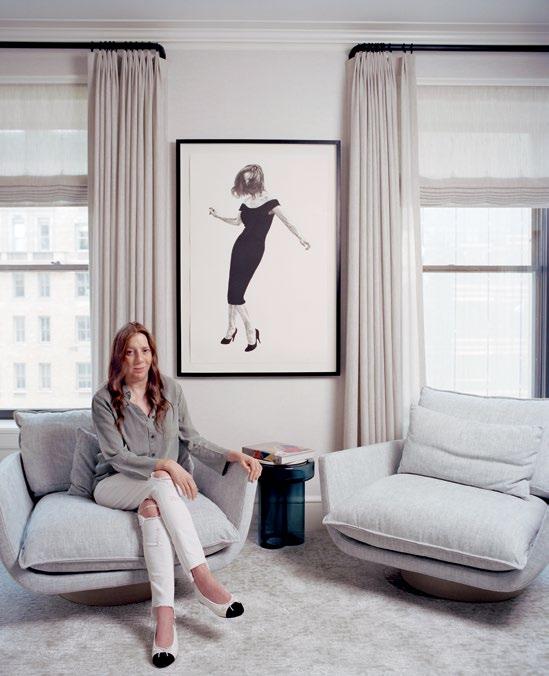
Many children grow up with family snapshots on their walls. Lacey Tisch grew up looking at a series of four portraits of her mother by none other than Andy Warhol.
The daughter of Andrew Tisch, the co-chairman of the board at Loews Corporation, and Susan Tisch Allen, Lacey has collecting in her blood. But it took encounters with two very different works of art—Paul Downs’s gleaming Swarovski-adorned mixed-media work Chanel Number 5 and a print of Ansel Adams’s black-and-white photograph Snow Oak
Silence —to inspire her to build a collection of her own.
Tisch is the co-founder of wellness company Sage + Sound, an Upper East Side destination offering lymphatic massages, non-toxic nail care, classes, and more. Her dedication to health and well-being dovetails seamlessly with her collecting philosophy. The entrepreneur has always been drawn “to things that make me feel a lightness,” she says. “I choose art that makes me feel a certain way, that is reflective of the work I do.”
Tisch sees the pieces she has acquired over the years as the embodiment of her personal evolution. With an approach to collecting that’s both intuitive and joyful, she remains fascinated by “how art represents a moment in time.” She is speaking with me from her New York residence, one of the two homes for a collection that toys with texture, pattern, reflection, and transparency. (Tisch splits her time between Manhattan and the Hamptons.) Here, the Los Angeles–based artist Mungo
“I CHOOSE ART THAT MAKES ME FEEL A CERTAIN WAY, THAT IS REFLECTIVE OF THE WORK I DO.”
Thomson’s Person of the Year, a mirrored composition based on the famous Time magazine cover, shares space with an atmospheric photograph by the American artist James Welling of Philip Johnson’s iconic Glass House. Other treasures include a commissioned work from the Italian artist Paola Pivi’s “Pearls” series and the dot-filled Alchimie 390 by Argentinian artist Julio Le Parc.
Tisch describes her East End abode, where she keeps work by Daniel Arsham and a collaborative chair by the Campana Brothers and KAWS, as “more fun and kitschy … it’s where we feel more laid-back.” Travel adds another dimension to Tisch’s collection. Everywhere she visits, from small islands to major cities, she buys something to commemorate the trip. Her most recent acquisition was L’incubo di Kubrick by Damiano Spelta from Rossana Orlandi’s eponymous gallery in Milan. Up next are excursions to Singapore, the Maldives, and Dublin, which will likely lead to even more intriguing encounters that find their way into Tisch’s constellation of a collection.
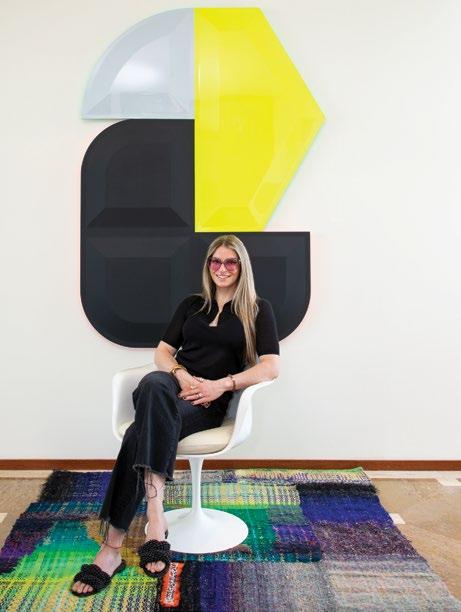
“I was born into art,” says Samara Furlong. Growing up amidst her philanthropist grandparents’ collection—which wasn’t childproofed—Furlong’s early memories include playing on a Mark di Suvero swing, watching her grandfather, a real estate developer, play the trumpet in front of a Bob Thompson painting, and listening to her grandmother, a dancer, tell stories about the little girl who lived inside a Joseph Cornell box.
This early exposure sparked Furlong’s belief in the importance of art and its role in our lives. For her, it’s less about the works (although she has plenty—by the likes of Lauren Quin, LaKela Brown, Jo Messer, Jonah Freeman,
Nikita Gale, and Cynthia Talmadge, no less) and more about the relationships that such pieces foster. “When you spend time with artists, their work takes on a different meaning,” Furlong says.
Furlong was living in New York when the pandemic hit, and returned to the Detroit area, where she grew up, during lockdown. The founder of Voyeur Ventures—an advisory, curatorial, and experiential service—quickly established herself as a fixture in the art scene, joining the Museum Committee at Cranbrook Art Museum and the Friends of Modern and Contemporary Art board at the Detroit Institute of Arts. She also began to assemble a strong lineup of work by local artists, including Sara Nickleson, Shaina Kasztelan, Paula Schubatis, James Collins, Suzy Poling, and Reeha Lim.
The collector’s passion for art and its ability to deepen the bonds of community was the driving force behind launching a residency, Buffalo Prescott. The nonprofit space, originally a Swedish tool and die shop on the east side of Detroit, soft-launched in May with five resident artists and a slate of programming (talks, workshops, crits) in the works.
“ART IS A WAY TO ENHANCE LIFE THROUGH HISTORY AND BEAUTY—TO CONTINUE FINDING NEW INSPIRATION AND MODES OF EXPRESSION.”
“Everyone thinks that when you have a building full of artist studios there are lots of conversations about the art, but there needs to be infrastructure for that,” Furlong explains. Every artist who participates in the residency will be asked to teach workshops. Fundraisers will be pancake breakfasts for the whole family rather than black-tie galas.
Of course, the tendency to view art as a family affair is innate for Furlong. She recently commissioned the Detroit-based designer Chris Schanck to create a custom table for her art-filled living room, which doubles as her 2-year-old daughter’s playroom. “My grandparents taught me that art is not separate from life,” Furlong says. “It is a way to enhance life through history and beauty—to continue finding new inspiration and modes of expression.”

It started on impulse. Eight years ago, Patrick Finnegan attended a charity auction for SoHo Arts Club in Lower Manhattan and walked away with his first piece of art, a painting by Con$umr. It remained the entirety of his collection until five years ago, when he officially started acquiring works. Since then, he’s quickly scooped up pieces by artists like Anna Weyant, Seth Becker, Jorge Galindo, Daniel Correa Mejía, Alexander James, and so many more. He’s also managed to become a client of celebrity advisor Ralph DeLuca, whom he credits with helping to refine his eye and cultivate gallery relationships.
It’s a distant world from Williamstown, Massachusetts, where Finnegan grew up visiting the Clark Art Institute and MASS MoCA—but a seed was planted in those early years. “My first encounter in the art world was through my parents’ relationship with an incredible painter named Stephen Hannock,” Finnegan explains. “Though we aren’t particularly close, I recall learning about him from a young age.”
The speed with which Finnegan has found his way into the most polished of blue-chip circles should be no surprise. A wunderkind of sorts, Finnegan moved to New York without a high school or college degree, getting his start in venture capital before he was old enough to order a martini. He established his name as a go-to Gen-Z expert, advising global corporations on how to reach his peers. Now, he spends his days running an early-stage investment firm, Second Sight Ventures. Personal engagement has been an important part of Finnegan’s career—and his approach
“I ACQUIRE PIECES THAT RESONATE WITH ME, BOTH ON AN EMOTIONAL AND VISUAL LEVEL. ESTABLISHING A PERSONAL CONNECTION WITH ARTISTS ADDS A DEEPER LAYER OF INTIMACY TO THE COLLECTION.”
to collecting. “I acquire pieces that resonate with me, both on an emotional and visual level,” he says. “Establishing a personal connection with artists adds a deeper layer of intimacy to the collection.”
Though Finnegan has already been able to collect artists like Ed Ruscha and Marcel Dzama, his sights are set on the future as he grows his collection, with Cecily Brown, Nicolas Party, George Condo, Jean-Michel Basquiat, and Danielle Mckinney on his most-wanted list.

Photography by ANTON GOTTLOB Styling by STUDIO& ALL CLOTHING AND ACCESSORIES BY PRADA
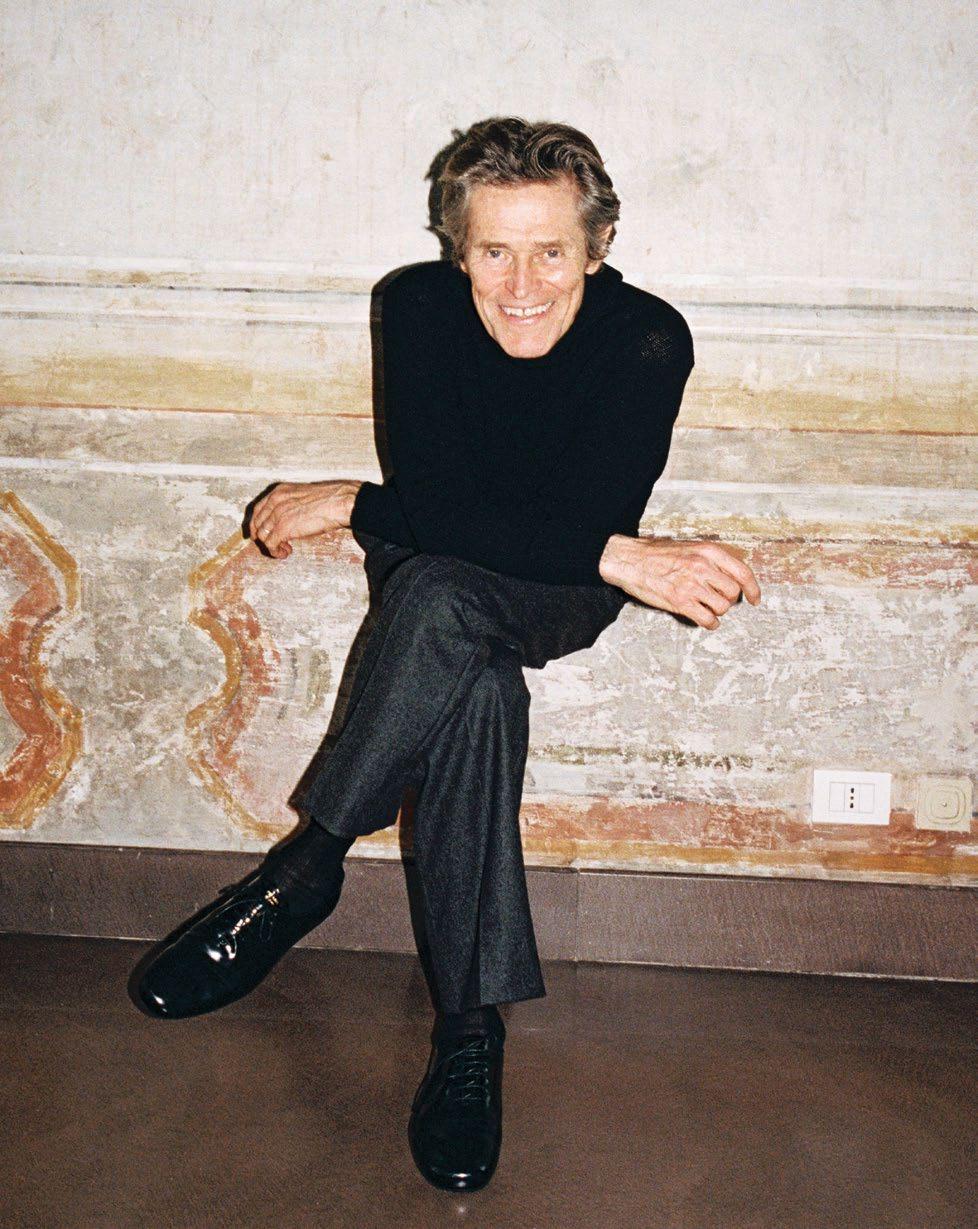
“The biggest bonding thing for me is the sense of humor. Willem has the right kind—we both love absolutely dirty jokes. So important.”—Marina Abramovi
ć
We’re used to seeing Willem Dafoe’s face blown up 90 feet wide at the movies. Marina Abramović looms just as large in the art historical canon for confrontational performances as daring and indelible as those of her Hollywood counterpart. But the two know one another on a much more intimate scale: Abramović first encountered Dafoe through his performances at the theater below her Manhattan apartment. Dafoe, for his part, felt a sense of kinship with the artist’s work—its riskiness and force—before he even met her. The two became steady collaborators in the mid-aughts, most recently starring opposite each other in Abramović’s operatic debut, The Seven Deaths of Maria Callas, which premiered in 2020 at Munich’s Bayerische Staatsoper.
These days, the pair cross paths when they can—swapping dirty jokes and catching one another’s shows and premieres in cities across the world. But rather than resting on their laurels, Dafoe, 68, and Abramović, 77, still share a gnawing hunger to create. Based in Rome, Dafoe currently has nine films in production and appears in Yorgos Lanthimos’s heady thriller Kinds of Kindness, which released this month, while Abramović is at work on “a Balkan erotic epic.” The reason for their shared relentlessness is plain: They simply can’t stop.
Marina Abramović: I’m in Detroit, where Houdini was born.
Willem Dafoe: That’s not true—I grew up where Houdini is from. He was born in Budapest, but he grew up in my hometown! Appleton, Wisconsin.
Abramović: I dedicated my entire life to Houdini last night.
Dafoe: Apparently not, because he wasn’t born there.
Abramović: You have your version, I have mine. [Harry Houdini died in Detroit.]
Dafoe: Okay, they want to know the last time we were together. It was last fall in London, at the presentation of Seven Deaths. You had your retrospective at the Royal Academy [of Arts].
Abramović: Yes. That was an important moment for me—I was the first woman in 255 years to get a major retrospective there, and I was so happy for you to see it. And then you know, there was the opera. We made Seven Deaths together, but you were always off shooting movies in strange places —a Canada jungle, Tasmania, I don’t know—so you never got to see it. Finally, you came to London. I have more news for you, Willem. Seven Deaths was nominated for the Laurence Olivier Award for opera. Of course, the guy who won has done opera for 35 years. I’ve only made one in my life.
Dafoe: Scusa—dopo perché ho un’intervista! Ho detto già. Grazie. Sorry, Marina—go ahead.
Abramović: The Italians love you, don’t they? What were our first impressions of each other?
Dafoe: This time, you go first.
Abramović: When I moved to New York, I lived on the fourth floor of the same building that houses [experimental theater company] the Wooster Group, where you performed a lot. I would see many of the shows, and if I ever had a party in my apartment, I would go downstairs in secret and steal chairs from the theater. I knew you from your film work first, then from seeing you in that theater, which was very different. Then, of course, you’re an entirely different Willem in person. How I can explain this? You’re so normal.
Dafoe: Oh, thank you.
“You have to enter a place of wonder as often as possible. It’s not easy, because we want security, but you’ve got to trick yourself into opening that door.”
—Willem Dafoe
Abramović: There’s no bullshit, you’re a real human.
Dafoe: I knew of you by reputation—I’d seen videos of the early work. But I got to know you personally through my wife, who has known you for many years. We finally got to work together on Life and Death [of Marina Abramović ] and Seven Deaths... We work together on death, I guess.

“Now I’m less interested in accomplishing things—I’m more interested in enjoying my life. You’re more open when you’re less concerned with yourself.”
—Willem Dafoe


“It’s never the role that attracts me; it’s always the situation. It’s the possibility of, for lack of a better word, adventure. You’ve got to fight habit—it can dull the senses.” —Willem Dafoe
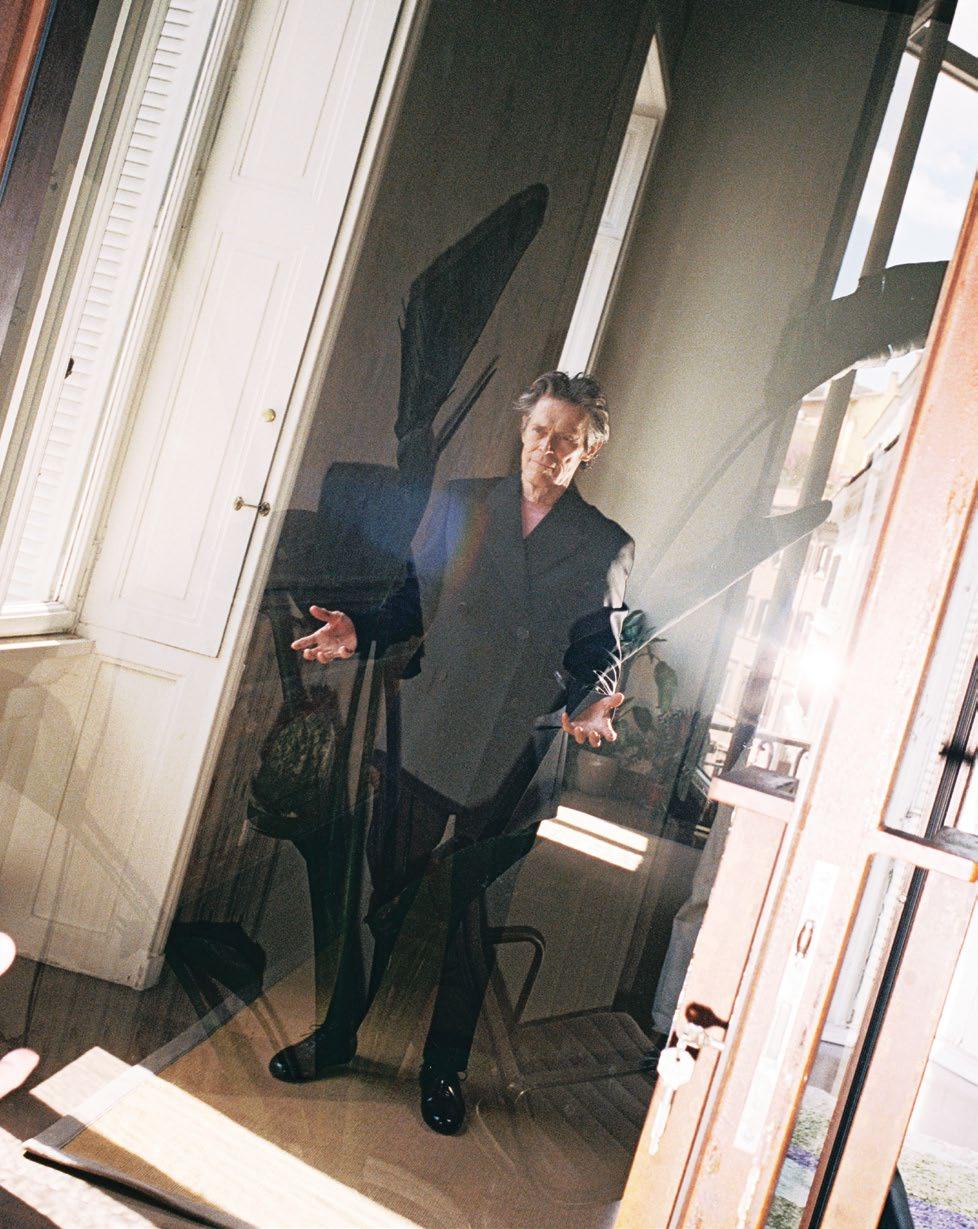
“My question for you is the same one I have for myself: When do we stop?” —Marina Abramović
Abramović: The biggest bonding thing for me is the sense of humor. You have the right kind—we both love absolutely dirty jokes. So important.
Dafoe: Yours is sharper than mine, I must say. Every time we get together—and we made an exception today, because it wasn’t appropriate —we cannot catch up until you’ve told your favorite joke of the moment.
Abramović: Let me tell just one. Two Serbian women are chatting, and the first one says, “You know, your husband is cheating.” The second replies, “Of course—I know who he’s cheating with, I just don’t know with what.”
Dafoe: Excellent. That’s pretty tame for you.
Abramović: I’m polite today. We’ve worked together for a long time. Why do you think our partnership has lasted?
Dafoe: I’m happy to do anything with you, because I have a lot of respect for you. You’re the perfect mixture of hard work and play. I always felt that I was drawn to your work even before I knew it. I like the event, the risk, that sense of putting your money where your mouth is. Or rather, you put your body where your heart is. So, I’m just happy to be in your company. That’s pretty much true for anybody I collaborate with. If you’re in a state of stimulation and curiosity when you’re with them, that’s a good place to start. Then, no matter what you make—good or bad—it’s rooted in pleasure, in an urge to communicate your experiences and create new ones together.
Abramović: I have to add a few things. When I started doing performance, theater was the enemy for me. I was like, “This is so fake. The blood is ketchup, and that knife is not a knife.” You’re playing somebody else, you’re rehearsing, it’s not real. But when I saw you perform I learned this is not true. When you really embody the character, you actually become them. It’s fascinating to see. When we made Seven Deaths [the film version] together, I discovered how to enter a pre-death state of mind, the peace without terror. Your help was so incredibly important to me. Another thing I like about you: your incredible generosity. A performance artist and a Hollywood star are very different creatures. You’re working with producers, big budgets, all this mumbo jumbo. In art, there’s never any money, there’s never any attention. For you to go from all that luxury to working with a poorer artist, I thought you’d be unhappy. But you really wanted to work with me, and we made this film with the smallest budget possible. I will never forget this.
Dafoe: My pleasure. Has your relationship with your work changed over time?
Abramović: Dramatically. If someone had told me 10 years ago that I’d do an opera, I’d say they were completely mad. But I’m so secure in my own medium—I’ve been doing this 55 years now
—so I’m interested in change. Right now, I’m working on this crazy project for the Manchester [International] Festival, called Balkan Erotic Epic I’ve studied eroticism from Albania, Bulgaria, and my own Serbia since 2011. I’m really deep into this whole thing. In Balkan cultures, the sexual organs allowed people to connect to divine energy. There’s a ritual from the 14th century that I want to tell you about, Willem. If there were heavy rains in a village that threatened the crops, all the women would go out to the fields, lift their skirts, and show their vaginas to the gods. It would scare them, and they’d stop the rain.
Dafoe: How do I follow that? I think we can end the interview right there. At the stage I’m in now, I have a different kind of ambition. When you’re young, you really have to stake your claim, and then go try to accomplish it. Now, I’m less interested in accomplishing things—I’m more interested in enjoying my life, my interests. It’s always been that way, but I had a different kind of ego before. I think that can block you from entertaining ideas that don’t originate with you. You’re more open when you’re less concerned about yourself.
Abramović: Also, the roles you’re taking lately are so incredibly interesting. Amazing diversity.
Dafoe: It’s never the role that attracts me; it’s always the situation. It’s the possibility of, for lack of a better word, adventure. You’ve got to fight habit—it can dull the senses. Going to a place that I don’t know, that invites a different way of seeing and thinking, that excites me. Everything is a miracle. When you think of the many functions that you have nothing to do with but that brighten your life—your sight, your ability to put words to your feelings—it’s an incredible thing, being alive. You have to enter a place of wonder as often as possible. It’s not easy, because we want security, but you’ve got to trick yourself into opening that door. I’ve constructed several devices to trick myself that way. We’ve done it together, in fact.
Abramović: Yes. In our collaborations, we hardly ever need to talk—the understanding is immediately there. When you talk about miracles, there’s also the miracle of chemistry between two people. I’d like to find a place for you in my Balkan Erotic Epic, but what can I do? You’re not from the Balkans.
Dafoe: I’ve got Albanian friends, does that count?
Abramović: [Laughs] No. This is such a crazy project, Willem. It’s going to be outrageous. I’ll tell you about it later.
Dafoe: Can’t wait. Is there one question you’ve always wanted to ask me?
Abramović: My question for you is the same one I have for myself: When do we stop? Why are we so hungry? I’m 77 my dear, much older than you. My parents already have Alzheimer’s, so they’re
half-dead, they don’t move around, their pensions are used up. I can’t imagine becoming that—I can’t imagine a time when I’ll stop working. How about you?
Dafoe: I can’t imagine it either. Of course, what we do is not regular work. Mine is integrated deeply into my life now, and I’ve always worked with my partners, with family and friends. I don’t have the kinds of divisions that others might, so I can’t imagine that part of my life dropping away. Maybe we’re just donkeys, and work is the carrot being dangled in front of us. It’s worked out pretty well for us so far. I still love so many things, so I don’t know why I would stop working, because that’s the way I get to enact some of that love.
Abramović: We really have enormous energy, you and I. I have no idea where I get it. You know, I have to get a knee replacement which is kind of a shitty thing. I have pain and I walk with a stick. But I wake up in the morning and I don’t even care—there’s something else that moves me. How incredible that we’ve both been blessed with this. And partners we love, too.
Dafoe: We got the whole package.
Abramović: [Laughs] Yes, we both have a very nice package.

by
GIULIO ORDONSELLIPhotography Assistance by TONY DONATO
Styling Assistance by NICOLETTA LILLI
Digi Tech by ELISA MARCHEGIANI
Production by MAI PRODUCTIONS

“Maybe
we’re just donkeys, and work is the carrot being dangled in front of us. It’s worked out pretty well for us so far.” —Willem Dafoe
GroomingThe loamy funk that emerges from the earth after rain falls on dry ground is called petrichor. This substance stems from the spontaneous release of aerosols and oils trapped in soil that bursts upwards, champagne-like, when it meets water.
The term has its roots in the Greek words petra (stone) and ichor (the golden fluid that ran through the veins of Greek gods and goddesses). Some researchers believe that humanity’s reliance on rain throughout history has cultivated an innate love of the aroma.
Petrichor is also what 070 Shake has named her newest project, which she just put the finishing touches on in Malibu. “It’s going to feel like a breath of fresh air,” the singer says of the forthcoming album, her third. “Petrichor is a feeling —the perfect word to describe this body of music.”
Shake—who was given the name Danielle Balbuena at birth—associates the scent with her childhood in New Jersey. Her mother loved it, and would draw her awareness to its emergence every time the skies opened. The musician hopes that, when Petrichor is released this fall, people will welcome it like a burst of rain in a drought: “I hope they’re willing to take it in, to be thirsty and invigorated by it.”
Music has always been a technology for healing to Shake. “It’s a medicine in itself,” the artist muses. “It heals the unseen, the brokenness in people. It’s one of the most powerful things we have.” She credits music with saving her life on numerous occasions. “I know we’ve heard this before, but it’s true,”
she asserts. “As a kid, it was the only thing that was talking to me … It still saves me to this day.” (She points to Kid Cudi and his aching, cynical lyrics as a particularly effective salve.)
Soaking up Cudi, Jay-Z, and the neo-soul staples her sister played on repeat, Shake began layering poems over tracks found on YouTube as a teenager. Her early experiments found an audience on SoundCloud and landed her a contract with kingmaking label G.O.O.D. Music. A tour opening for the 1975, a debut EP with cult currency, and a feature on Kanye West’s 2018 album Ye followed. Soon enough, Shake’s hypnotic and haunting vocals were everywhere. Her first album Modus Vivendi —“a way of life” in Latin— crystallized her status as a voice for a lost, lovesick generation perpetually “in their feelings.” But throughout Shake’s rise, the artist herself has remained a mystery, her face often hidden by her hair, her vocals digitally obfuscated, her public appearances sporadic.
With Petrichor, Shake is ready to be heard more clearly. The album is, in many respects, her most vulnerable—“less synth, more guitar, and less autotune,” she explains. To establish an unfiltered connection with her listeners, Shake tapped two longtime collaborators—composer Johan Lenox and writer/producer Dave Hamelin, who worked on her previous albums—to strip down the sound.
That aural transparency won’t afford her fanbase more access to the person behind the music, however: Shake’s presence
remains ethereal. Lately, she’s been using the moniker “Dani Moon” on her Instagram profile, even as she continues to release music under 070 Shake. And despite her youth—Shake is 27—she insulates herself from social media as much as she can, revealing little about her personal life save for the occasional homage to her partner, actor Lily Rose-Depp. “I don’t feel like I’m supposed to share my life with the world in that way. Everyone else is oversharing,” she says. “That’s completely fine for them,” she’s quick to add, but notes that her own carefully drawn boundaries represent an effort at selfpreservation. The musician has also been living in Los Angeles, closer to nature, in a way that allows her to “see the world for what it is.”
This inner compass and unclouded lens were molded early in life by a connection to something greater than herself. Shake often references her religious upbringing and a pastor uncle who produced worship songs for church. “Being in touch with God from such a young age made me a deeper feeler,” she reasons. Sitting in service and watching her uncle command the pulpit, the artist was mesmerized by the clarity and expansiveness that washed over her. “[Those moments] gave me a more grounded perspective,” she says. “I can see things from a bird’s-eye view.” The musician steadies this zoomed-out frame of mind with a surgical precision, scanning each lyric before she releases a body of work. “I’m very particular,” Shake asserts. “It’s like food—if I’m a chef, I wanna use the best ingredients. I wanna make sure that it’s good for people.”


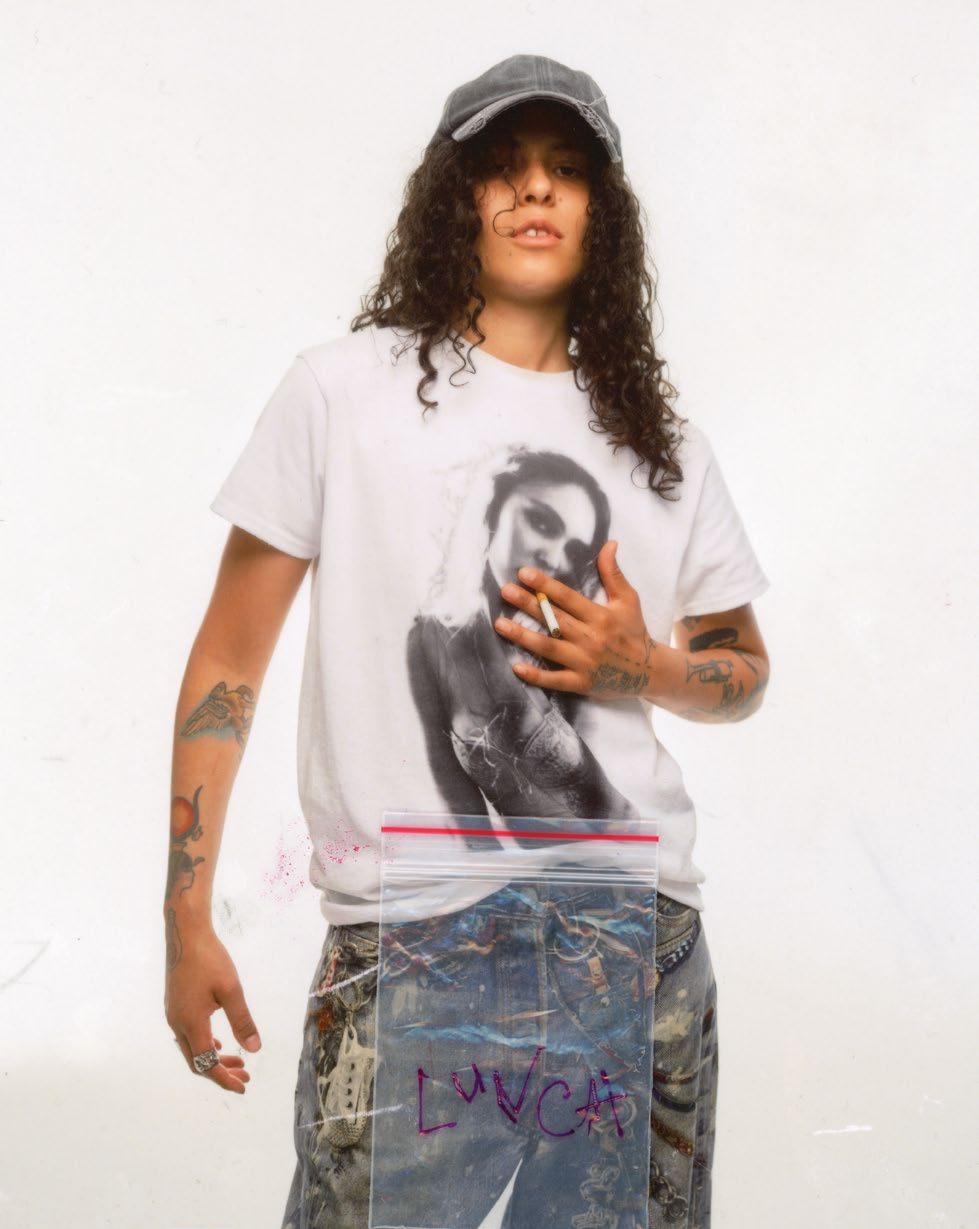
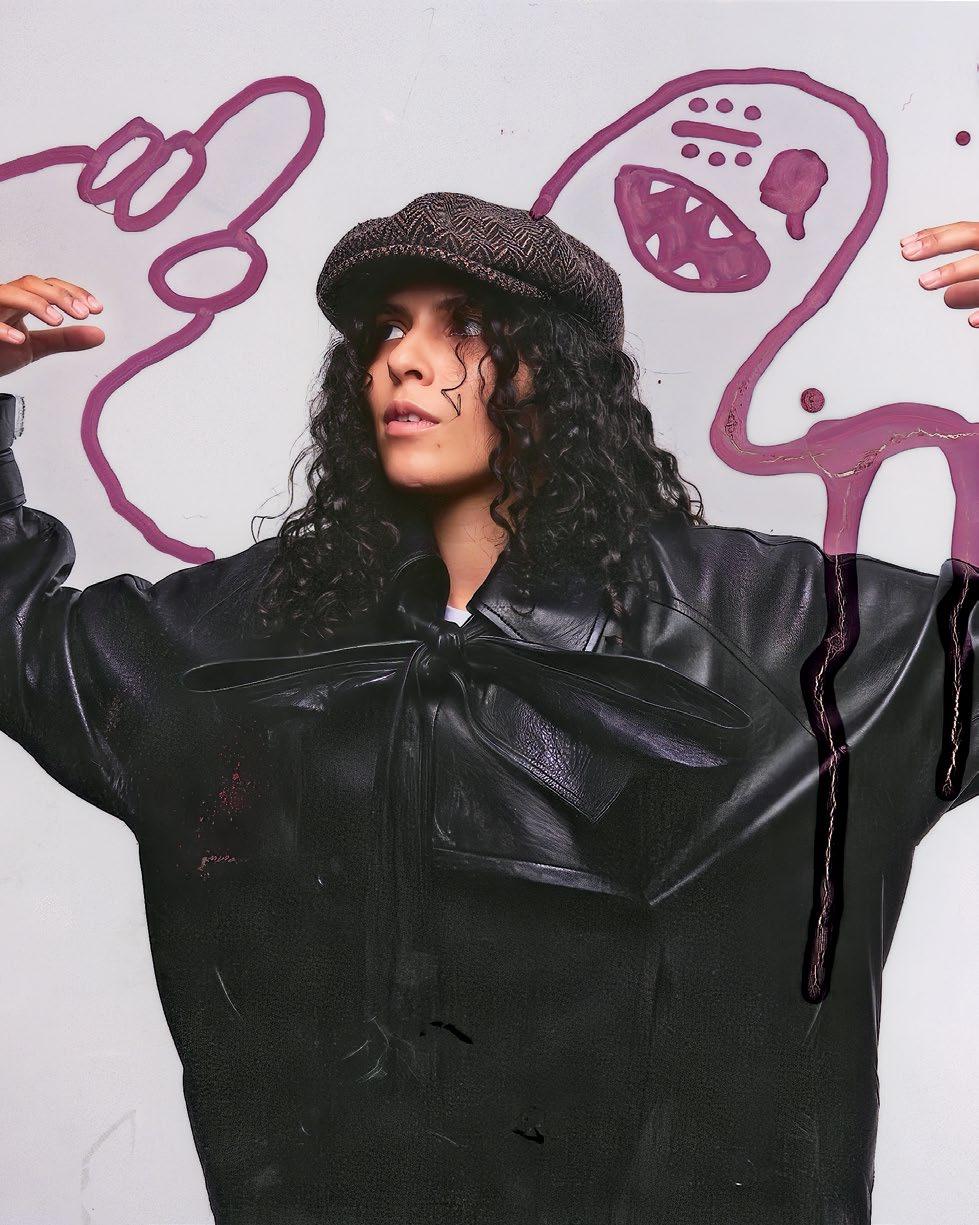
“I DON’T FEEL LIKE I’M SUPPOSED TO SHARE MY LIFE

“I HOPE PEOPLE ARE WILLING TO TAKE THIS ALBUM IN, TO BE THIRSTY AND INVIGORATED BY IT.”

MakeupbyLEOCHAPARRO
HairbyTAKUYASUGAWARAatWSMusingBUMBLE&BUMBLE
RetouchingbyANTHONYGOBLE
ProductionbyDYLANBRACKPOOL
ProductionAssistancebySAMMYBASS SetDesignbyFRANCESCAWADSWORTH
IN 1972, STEPHEN SHORE DROVE ACROSS AMERICA. A NEVER-BEFORE-SEEN SELECTION OF HIS FLASHSOAKED PHOTOGRAPHS PAYS HOMAGE TO THE MEALS HE ATE ALONG THE WAY.

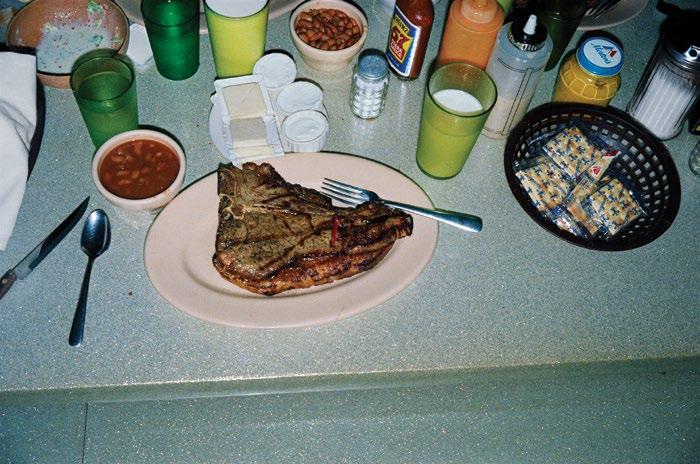
Stephen Shore has published a whopping 25 monographs over his five-decade career, but American Surfaces —captured on a road trip from New York to Amarillo, Texas, in 1972 and ’73—might be his magnum opus. The series, some 320 stills of the meals Shore ate on the drive, is an inquiry into America’s soul—probing the heartland by way of its stomach. The road trip may be over, but Shore’s work is not done. Just over a halfcentury later, the photographer has found himself returning to American Surfaces —digging through boxes of 35 mm film and digitizing forgotten shots. It’s a mammoth undertaking for any artist, let alone one so prolific and impactful. For this issue, the photographer shares his favorite unseen frames, a tantalizing array of culinary delights.
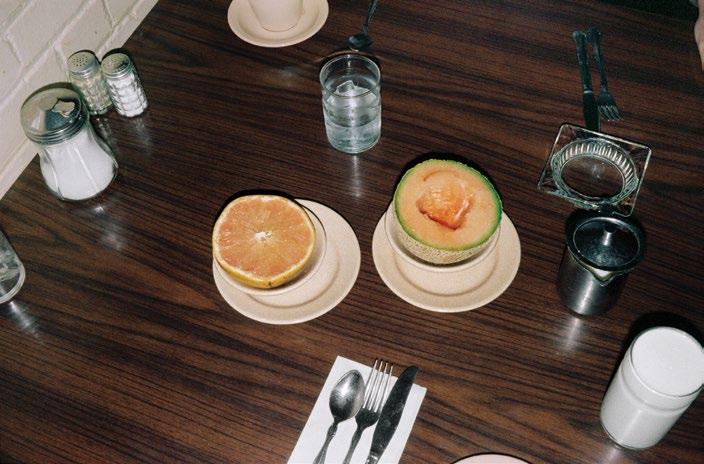


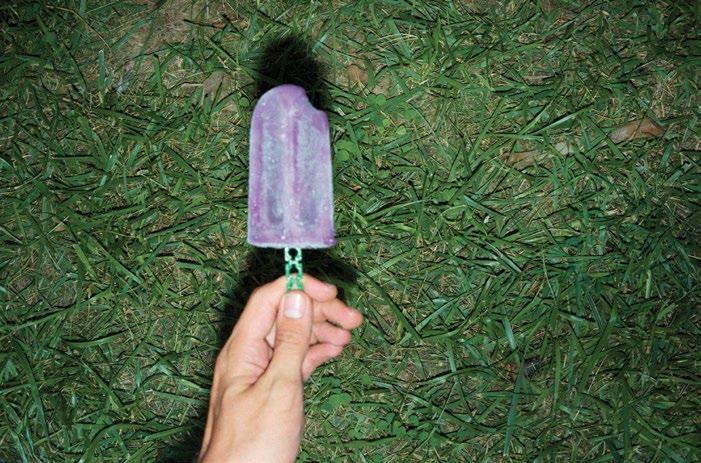 Untitled, 1972. © Stephen Shore. Photography courtesy of 303 Gallery, New York.
Untitled, 1972. © Stephen Shore. Photography courtesy of 303 Gallery, New York.


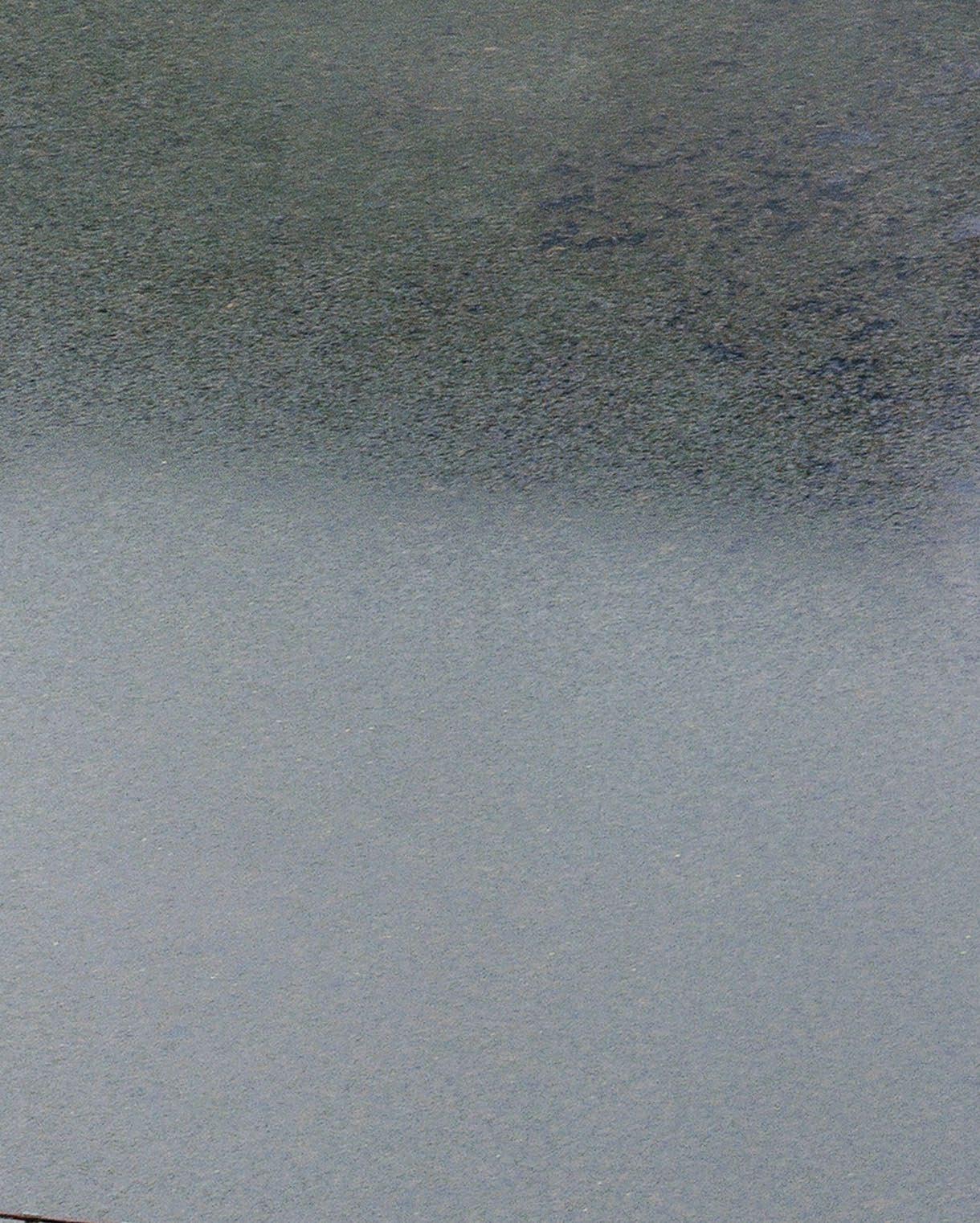
CHANEL’S 2023/2024 MÉTIERS D’ART COLLECTION FOUND ITS SPARK IN THE VIBRANT POP OF GREAT BRITAIN, ITS SATURATED HUES REFLECTING AGAINST MANCHESTER’S COBBLESTONES IN LAST DECEMBER’S SHOW. FOR CULTURED’S SUMMER ISSUE, PHOTOGRAPHER JOHN YUYI CONJURES A SURREALIST DREAMSCAPE FROM AN ALTOGETHER DIFFERENT LOCALE. WITH TOKYO’S DENSE VISUAL CANVAS AS HER BACKDROP AND JAPANESE ACTOR AND MODEL SERENA MOTOLA AS HER PROTAGONIST, THE TAIWANESE IMAGE-MAKER GIVES THE FRENCH HOUSE’S TWEEDS THE STREET TREATMENT, WHERE THEY STAND OUT AMID THE ELECTRIC SCENT OF PETRICHOR AND RAIN-SLICKED PAVEMENT.


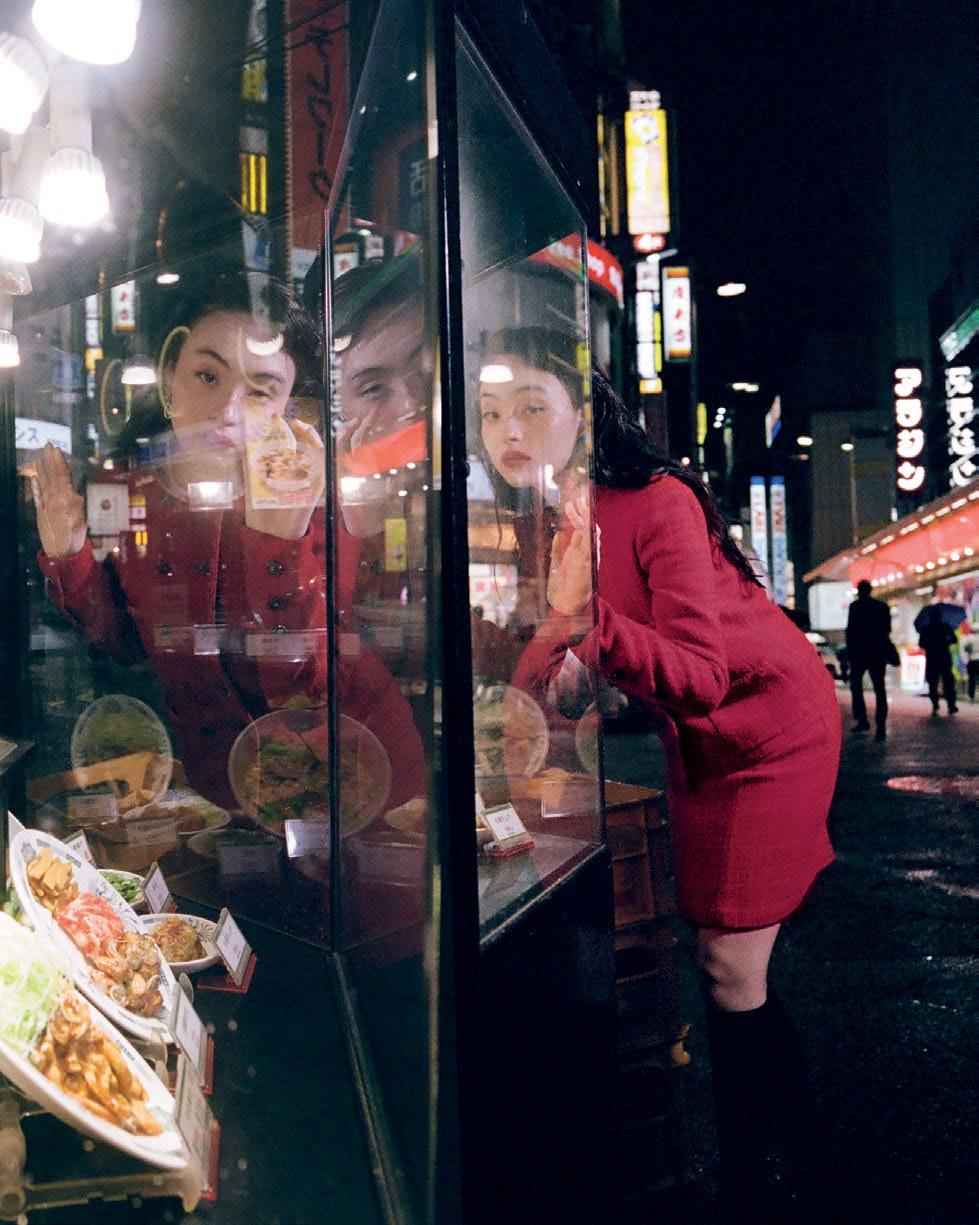






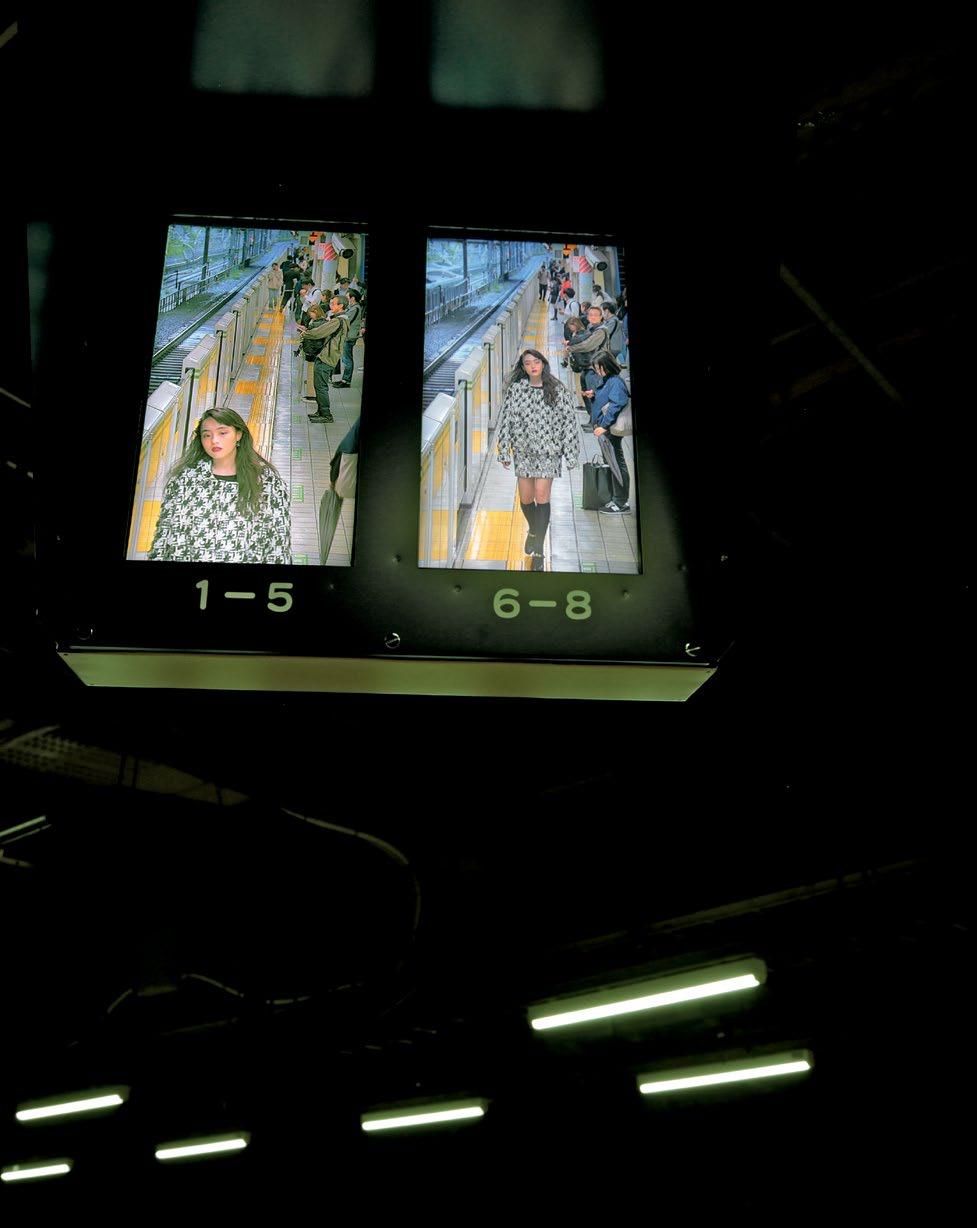
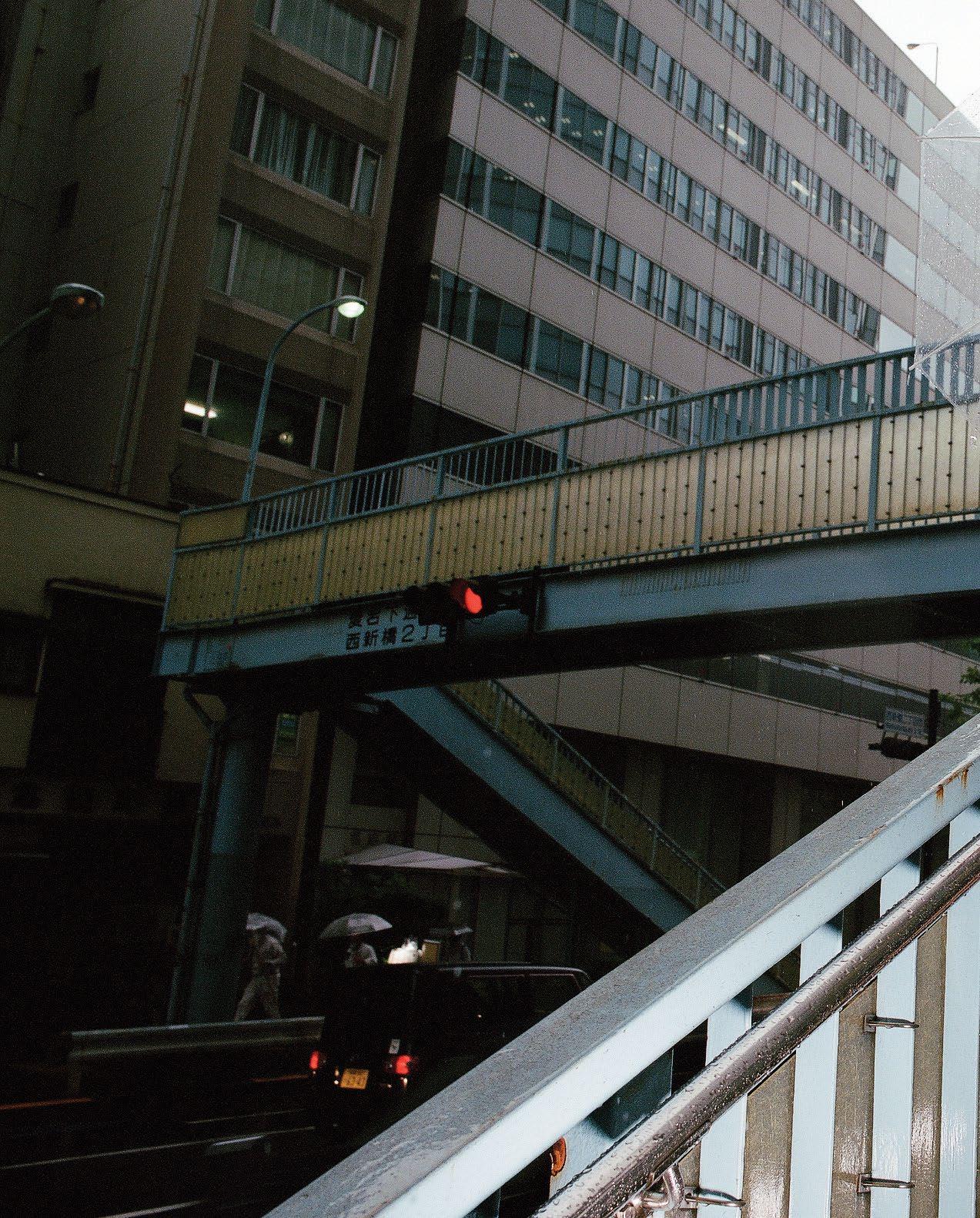




Production Coordination by
Production Assistance by SINCLAIR BRYANT
Modeled by SERENA MOTOLA Makeup by RIE SHIRAISHI Hair by SHINGO SHIBATA Photography Assistance by CHIARA CROSERIO Fashion Assistance by MAKI KIMURA Lighting Tech by MAKOTO KAMIYA Production by TAKA ARAKAWA at BABYLON SHION KIMURA
After taking on the outdoor adventurer and the suburban dad, the sartorial set has recently turned its focus to the weathered and unstudied perfection of the culinary uniform. For the Art and Food issue, one writer sits down with six exemplary chefs to discuss why they wear what they wear when working behind the line.
It’s no secret that the kitchen’s cultural cachet is at a (stiff, meringue-white) peak. In a world where much of life happens online, restaurants offer an increasingly vital reason to gather and dress. If New Yorker cartoons are any barometer for the cultural proclivities of the moment, a fairly recent one articulates our growing appetite for back-of-house subcultures. A sketch published after The Bear ’s release in 2022 depicted a post-coital scene—a man, slightly concerned, asking a
woman, “What was all that ‘Yes, Chef’ stuff about?”
A symptom of the attention increasingly heaped on chefs is an interest—owed in part to the swagger of their culinary forebears like Julia Child and Anthony Bourdain—in the less technical aspects of a chef’s life, like their tattoos and gear. French brigadestyle “chef whites” may not be on the runways, but kitchen mainstays like clogs, Stan Ray and Carhartt workpants, and canvas overshirts
have infiltrated the sartorial lexicon of a crowd that appreciates the heritage, quality, and pragmatism of these tried-and-true pieces, even if they fail to employ them for their true purpose. In a fashion landscape defined by waste, there’s something appealing about stocking one’s closet with an enduring uniform that evokes an active yet aesthetic life.
To give the originators of such trends their due, CULTURED asked seven chefs to reflect on their go-to uni-
forms. After all, in the high-stakes, high-speed culture of the kitchen, clothing becomes an extension of a chef’s body, and their trusted tools —prized knives, bench scrapers, seasoned wooden spoons—become badges of honor tended to with pride. While they work in varied culinary contexts, the chefs in the following pages share a knack for seeking out and refining what works. It’s an approach that we could all learn from—in the kitchen or otherwise.
What pieces of clothing or accessories are most important to you in the kitchen?
Margot Henderson: An apron! I can hardly cook without an apron on. I prefer navy blue in a stiff fabric with a pocket.
Fergus Henderson: An apron and Blundstones.
Would you say you wear a uniform of some kind when you’re cooking?
Margot: Yes definitely—trainers, an apron, and a stripey T-shirt. I do love a chef’s jacket as well: cotton, white, crisp. It feels fresh and strong, and it probably helps my cooking as it straightens me up and makes me smarter, neater, and more efficient.
Fergus: A uniform is a security blanket; it gives structure to things.
Favorite kitchen footwear?
Margot: I have completely fallen in love with Salomon trainers.
Headgear: Yea or nay?
Margot: Yea. If I don’t have my bandanna, I’ll use a piece of string.
Fergus: It’s too hot. I need to let my head breathe!
How do you see chef style influencing what non-chefs wear?
Margot: Workwear is very much in fashion now—clothes that can be worn as armor, clothes that can be worked in and that move easily, that can be gently broken in. Dover Street Market has a great range from Labour and Wait.
Fergus: It’s everywhere—not to say that aprons are being worn at airports.
Favorite kitchen tool, at home or at work?
Margot: At home, my wok; at Rochelle, my knives. Knives everywhere—I do love my knives.
Fergus: A mortar and pestle at home; a knife at work.
Photography by JASON LOWE
What pieces of clothing or accessories are most important to you in the kitchen?
Sadie Mae Burns: In Paris, I discovered the joy of a stiff, protective—even sexy—apron. Most of the New York kitchens I worked in would order these flimsy, dinky white aprons. The straps never tied around my neck correctly and they made me feel dumpy—especially when wearing an ill-fitting porter shirt, the ubiquitous “New York cook’s uniform.” Now, I feel incomplete without one. (We order from Bragard, mostly classic dark blues and stripes—some even have an adjustable strap; a delight!)
Anthony Ha: A crisp T-shirt. I buy mine in bulk from Front Street General, our favorite vintage store in Dumbo. They’re imported from Japan, so they are a bit splurgy, but I’m hooked. I’ve also been cooking in old camo pants recently—digital or Desert Storm preferred.
Would you say you wear a uniform of some kind when you’re cooking?
Burns: We mainly work events or travel to different kitchens, so we typically wear our own clothing. For me, loose pants and a button-up— ideally old school Brooks Brothers— feels the best. This is my outside-ofwork uniform as well.
Ha: White or black T-shirt, baseball hat, Sven wooden clogs.
Headgear: Yea or nay?
Burns: I lean nay—I prefer a tight bun. You’ll never catch me in a baseball hat.
Ha: I wear a baseball hat every day of my life (Sadie is trying to break this habit). This makes me DOH-ready at all moments, I guess? I go through favorites, swapping them out from time to time and always looking for the next one to add to the arsenal. Usually they’re from our friend Josh P. Matthews’s brand, Comma.
Favorite kitchen tool, at home or at work?
Burns: A plastic bench scraper. I work with sticky, floury dough a lot. Cleaning and scraping is the worst, and I dread it every time.
Ha: Edlund stainless steel tongs. I’ve had my pair for years; they’re the only pair of tongs I use. I bring them to every event. I’ve hacked them by ripping off the lock mechanism on the top, so they never lock themselves by accident. In a busy service they’re ideal.
Photography by POUPAY JUTHARAT





What pieces of clothing or accessories are most important to you in the kitchen?
My Levi’s 501 jeans. I have been wearing them since I was 11. I also never take off my two bracelets, which I’ve worn for the past 20 years.
Would you say you wear a uniform of some kind when you’re cooking?
My friend designed a chef’s shirt for me, so that is my new uniform. Headgear when it feels right.
Favorite kitchen footwear? My Birks.
How do you see chef style influencing what non-chefs wear?
Chefs have direct contact with diners in most restaurants nowadays. Years ago, diners would not even see who was cooking your food. Now, our individual styles come through in a dining experience, and that definitely affects and inspires people.
Favorite kitchen tool?
I love knives, but my favorite utensil is a spoon. I need it for practically everything I do.

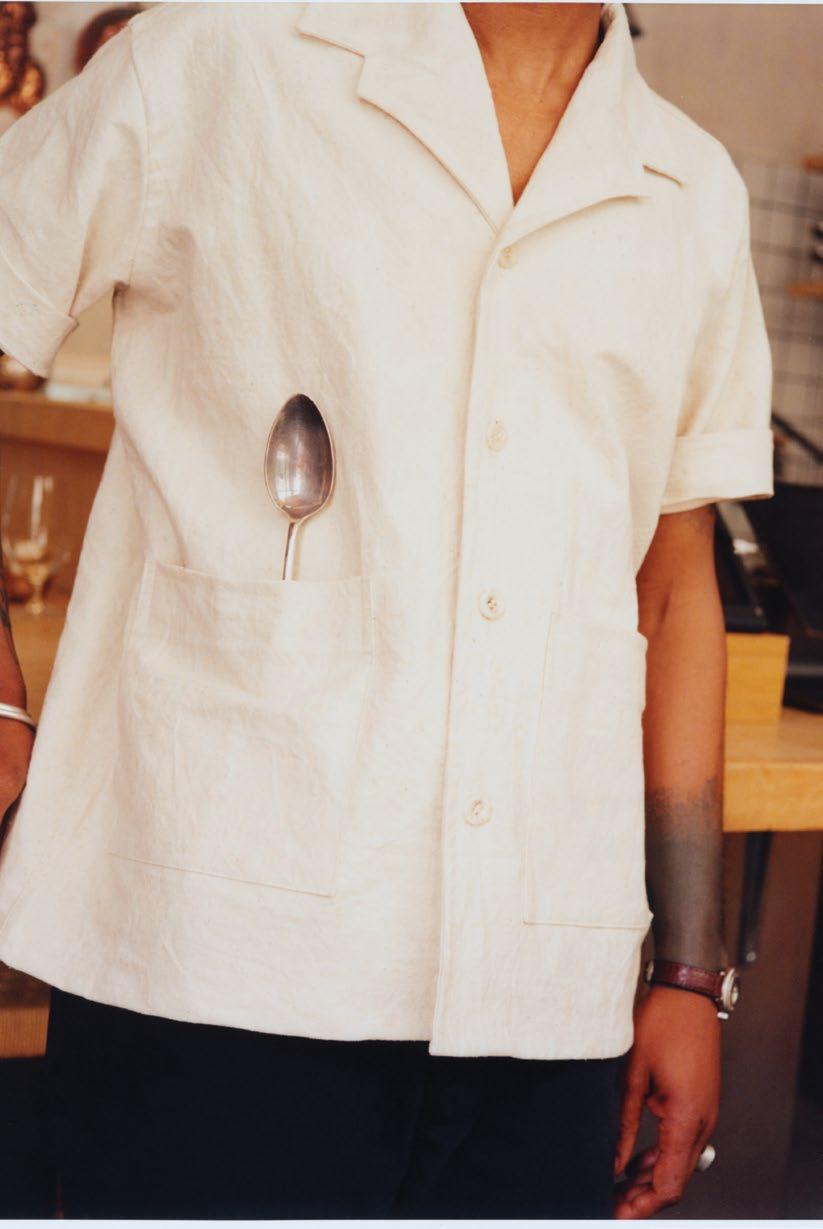 Photography by CLÉMENTINE PASSET
Photography by CLÉMENTINE PASSET


What pieces of clothing or accessories are most important to you in the kitchen?
My eyeliner, lip liner, and lipstick. I’m also really obsessed with my red paisley bandanna from Front Street General.
Would you say you wear a uniform of some kind when you’re cooking?
When I’m cooking I always have to feel like me. I love to wear my favorite CFGNY Deconstructed Work Pants 1. They have so many pockets and are so sturdy. I will wear these with a white, ribbed tank. I love to wear bike shorts when it’s appropriate, usually when I’m cooking outdoors and it’s summer. I like to feel like a THOT amongst the open flames. My work clothes, if I’m able to keep them clean enough, can almost always transition into the streets.
Favorite kitchen footwear?
Blundstones, Dansko clogs, black Adidas shell-toes, or Salomon Speedcross 3s.
How do you see chef style influencing what non-chefs wear?
I love how worn my clothes become over time from my job. I love every oil stain, every hole, because it represents an experience, which makes me feel more attached to my clothing. I see a lot of new clothes being sold with artificial markings and stains to recreate certain lifestyles, which tells that me chefs, as well as other trade jobs, have heavy influence on the fashion game.
Favorite kitchen tool, at home or at work?
Mortar and pestle forever. Cambodian food is based on a lot of paste-making, and I generally use this tool to produce my curry pastes and spicy sauces. Really, most things should be smashed.
Photography by POUPAY JUTHARAT

NATE FREEMAN AND BENJAMIN GODSILL, CO-HOSTS OF THE PODCAST NOTA BENE, SIT DOWN WITH THE CHEF-RESTAURATEURS BEHIND THREE ESTABLISHMENTS THAT HAVE EARNED THE ART SCENE’S ENDURING TRUST.
Among the great bistros and boîtes the world over, a few loom especially large in the art world for the outsized roles they play in the lives of artists, dealers, collectors, and writers. For CULTURED ’s first Art and Food issue, we spoke with a few of the masterminds behind these establishments to chat about what makes a good art restaurant, what artists and chefs have in common, and how to stay classic amid an ever-changing cultural landscape. We dive deep with Jon Shook and Vinny Dotolo of the Los Angeles mainstays Son of a Gun and Jon & Vinny’s, who have catered hundreds of gallery dinners and galas. Lynn Wagenknecht, founder of the legendary Tribeca establishment the Odeon, walks us through the golden days of Warhol, Basquiat, and Schnabel (and also dishes on whether the late, great Richard Serra was ever really banned from the spot). We also go long on a restaurant particularly dear to our hearts: the East Village staple Lucien, run by the eponymous founder’s son, Zac Bahaj.

When the Odeon opened in 1980, it was famous for its steak frites, impeccable service, and the clusters of great artists that could be found crowding its iconic red booths. Today? Same, same, and same.
If you are anything like us, you heard about the Odeon long before you first set foot in its perfect dining room. Those of us not lucky enough to have been of night-crawling age in the preGiuliani era likely first encountered this legendary establishment through the cover illustration of Jay McInerney’s 1984 novel Bright Lights, Big City. (The protagonist of this hedonist epic, a young nightlife enthusiast, hoovers up copious amounts of Bolivian Marching Powder in the restaurant’s downstairs toilets). Or perhaps that first glimpse came via more wholesome fare—a flash of the restaurant’s now-iconic neon sign came in the opening credits of Saturday Night Live. However you first came to know it, you quickly learned of its reputation as a meeting point for the first name set (Iman, Andy, JeanMichel, etc.) and like us, lusted to dance between the tables with them. Then, one day, there you were: looking out across that iconic bar next to the dining room, hoping your debit card wouldn’t be declined when they rang up your second martini. You realized, like we did, that the music never stopped—that the Odeon, like New York itself, is forever.
The restaurant took up residence in the former Towers Cafeteria space in 1980, long before Tribeca morphed into a gathering place for the four-figure stroller set. Back then, it was a triangle of empty streets full of abandoned textile and dry goods warehouses populated
by a few intrepid artists. The rapidly gentrifying SoHo was above, and the Financial District, gearing up for the go-go ’80s, was below. It’s here that brothers Keith and Brian McNally and Lynn Wagenknecht found the former steam-tablestyle cafeteria available to rent for a song. The neighborhood had been a manufacturing hub since 1933, but by the mid-’80s, even Western Union had moved out of its iconic building. The trio didn’t have to change much: “There was some terrible linoleum that was covering the beautiful wood on the walls,” recalls Wagenknecht, but the timeless glowing-orb light fixtures?
The speckled terrazzo floor? The take-a-check machine? It was all already there, by some miracle, at Towers Cafeteria.
It was a hit from the start —with actors, models, writers, musicians, and comedians, of course— but perhaps, most saliently and enduringly, it was a hit with artists.
It was a hit from the start—with actors, models, writers, musicians, and comedians, of course— but perhaps most saliently and enduringly, it was a hit with artists. In the early days, icons like Lawrence Weiner, David Salle, Julian Schnabel, Richard Serra, and Eric Fischl held down the fort, accompanied by the likes of Keith Haring,
Andy Warhol, and Robert Mapplethorpe. Legend has it, and Wagenknecht confirms, that in his younger and more volatile years, Serra had to be 86ed for his antics at the Odeon more than once, but he always returned with an apology. Eventually, he landed his own corner booth and became a cherished mainstay. In the pre-Covid years, before the Odeon offered any kind of delivery or takeout service, Serra and his wife Clara Weyergraf were given special treatment—their lunches sent over to the artist’s studio, or the couple’s home around the corner.
More than 40 years later, the Odeon hasn’t gone anywhere. The fervor has only amplified as the gallery scene shifted back downtown, and lunchtime always has its share of art-world dynamos. We often bump into Joe Cole and Pascal Spengemann from Broadway, and the likes of Andrew Kreps and Ellie Rines hopping tables. Dinner at the Odeon turns the act of the stop-and-chat into an Olympic sport: Nate Lowman can be seen holding down a table with his brood, while SoiL Thornton is spotted supping with their LA dealer Mills Morán. The budding star gallerist Alexander Shulan is a regular too, with a rotating cast of characters in tow, and on some evenings, Glenn Ligon holds court with his own crew. It’s hard to get from your table to the bathroom without being waylaid to discuss the latest market gossip or kvetch about the price of hotels in Basel.
And that’s just the art folks. The of-the-moment maestros from the worlds of music, film, fashion, and publishing are there too. It’s the New York you always thought existed somewhere, right where it always was.



NOTA BENE: When we come to LA, one of our first stops is always Son of a Gun for a spicy chicken sandwich. More often than not, we bump into someone else from the art world there. Oftentimes, it’s not even an LA person. You also have done all sorts of catered dinners for galleries and artists. How did you guys get so locked-in with the world of art?
VINNY DOTOLO: Our introduction would probably have to be Earl McGrath, who was a dealer out here a long time ago. This is going back 22 years. Earl was the first person in the art world who really embraced us and hired us. It was literally just Jon and I catering then, so we would show up to people’s houses, with supplies from the grocery shop or farmers market, and write menus off the cuff. It was a lot of fun. Slowly, it morphed into someone getting our phone number, then the next and the next. The biggest gallery that took to us early on was probably Blum & Poe. They were supporters before we had any restaurants.
I think people loved that Jon and I were out here, just doing it ourselves, and then when we opened Animal, it sparked a whole new world of interest. At the end of the day, the food is made with a lot of integrity and good ingredients. People who have good taste in art have good taste in film, music, and food. It all blends together at some point.
JON SHOOK: The art world’s a lot smaller than people realize. They travel a lot, so they have a sense of quality from doing that, and we try to provide that quality. A lot of Hollywood people also collect art, so we stayed in that little cyclone in our early stages—being passed around by Earl, Blum & Poe, Regen Projects, Gagosian, and importantly by Benedikt and Lauren Taschen.
NOTA BENE: You’ve done all these great events. Is there one that stands out where you were like, “This is a crazy art world thing, and we’re cooking for it”?
DOTOLO: My favorite art experience, which doesn’t have much to do with artists, was the first
time we cooked for Wolfgang Puck at Gagosian in Beverly Hills. It was like 11 p.m. when he showed up. He was there in his chef jacket walking around. I met him briefly. The next morning, Vinnie and I had to get up at 4 a.m. and catch a plane to Seattle to guest judge on Top Chef. We showed up at the house where they were shooting, and who opened the door? Wolfgang Puck. I was like, “How in the fuck did this guy beat us here?” One thing I wish we did in the early days—if we were smarter, we would have—is take a picture everywhere we went while we were catering. We would have all these great stories—cooking in the middle of the desert for Diplo, that kind of thing. To have met all these interesting people from cooking has been mind-blowing.
“People who have good taste in art have good taste in film, music, and food. It all blends together at some point.”
—Vinny Dotolo
NOTA BENE: Over the past 20-plus years, LA has been where a lot of the most interesting things are happening and the most dynamic people are living and working. Maybe there’s a parallel in the food scene. What is it about LA that makes it such creatively fertile ground?
DOTOLO: The city has an openness to it that other places don’t. In LA, people are used to dreamers, they’re used to people with crazy fucking ideas. You never know who you’re going to meet that might make that idea come alive, and that’s one of the coolest things about [the city]. People are willing to hear your ideas and try to understand them, whatever angle you’re coming from.
SHOOK: I agree with Vinny. There’s so many dreams that have come true for people out here, from Walt Disney to guys like us and everything in-between.
NOTA BENE: We see an almost spiritual connection between practitioners in the food space and those in the arts. What do you think this bond between people in the arts and chefs is about?
DOTOLO: There’s a nature of giving in art, and food is one of the most sincere forms of that. Both cooking and art are extremely selfish and egotistical, too. There’s so much ego in creating. What’s funny about Jon & Vinny’s is it’s not actually centered around us. Animal and Son of a Gun were much more rooted in our egos and our ideas about what we wanted to give people. Every couple of months at Animal, someone would sit down, look at the menu, and immediately get up and leave, like, This is so not for me. It’s like when you walk into a show and you’re like, I don’t even need to look at these paintings. They’re not for me. There’s a lot of exposure in it, too. In restaurants, you expose who you are all the time. Anyone can come in and judge you without knowing shit about you.
SHOOK: You’ve got to be dedicated to your craft. Regardless of whatever the art form is, there are no overnight success stories; even the people who might have spent so much time and dedication learning that craft. We’re very lucky to have the success we’ve had, but people rarely [hear] the story about the early days—the fallback plan for Animal was that, if we couldn’t afford our apartment at the same time, we would move into Animal. I always say that if you can pay your bills doing your craft, you’re successful. That to me is the common thread between all of us in this space.
“I always say that if you can pay your bills doing your craft, you’re successful.” —Jon Shook
Walk into Lucien, a French bistro that has sat on the corner of First Street and First Avenue since the ’90s, and the first thing you’ll notice—after the ballet of servers weaving through chic clientele while balancing ramekins of onion soup and paper cones of steaming hot fries—are the number of photographs on the walls. The pictures feature countless illustrious notables who happen to be regulars—Ryan Gosling, Daniel Radcliffe, Lady Gaga, Bono, even Ralph Nader. But the pictures treat artists, art dealers, and curators as the real celebrities. Situated among images of Dash Snow and Richard Prince, there’s an epic shot of Rudolf Stingel and Spencer Sweeney sandwiching Urs Fischer in a booth and ripping off the buttons of his shirt. There are also writers: Eileen Myles, Christopher Hitchens, and the art critic Carlo McCormick. Michael Stipe is up there, and so is Jim Jarmusch.
Two photos are particularly memorable. One shows Jonas Mekas—the godfather of avant-garde cinema in America, who co-founded Anthology Film Archives in a former courthouse a block away—lifting his glass for a toast surrounded by friends (including his art dealer, James Fuentes). Another features Ai Weiwei, sitting by art dealer Nicholas Logsdail, who founded Lisson Gallery in 1967, and his son Alex (the gallery’s current CEO). It was taken in the fall of 2016— days before the election—during one of Ai’s first trips to the States after Chinese authorities revoked and then reinstated his passport. One of his first stops in town, Alex Logsdail remembers, was Lucien. It was the spot. Nate knows this because he happened to be sitting solo at the bar that fateful night. Ai generously invited the young writer to join his table, and a feast ensued.
The cuisine is decidedly old school, and the menu very rarely changes. No one has a problem with this. The food is perfect.
Both of us have eaten at Lucien thousands of times —it’s through these endless stories of nights spent dining with art community luminaries that a clear picture of the place emerges. Founded in 1998 by Lucien Bahaj, who cut his teeth in kitchens across the South of France, the restaurant immediately became a beacon for artists, many of whom Bahaj had befriended through previous gigs at Indochine and Canal Bar. Bahaj would settle at a table in the front of the restaurant, invite guests to join him, and put the food and drink on his tab, asking for nothing but conversation in return. By the mid-2000s, the neighborhood was teeming with galleries new to the scene: Participant Inc., Reena Spaulings Fine Art, Miguel Abreu, Canada, Rivington Arms, and so many others—some still around and some gone. When the New Museum opened its new tower on the Bowery in 2007, Lucien was the post-show boîte of choice, with suppers stretching late into the night. The artists, however, are there all the time. Walk in for an early drink at 4 p.m., and you might see Sarah Morris, or Sam McKinniss, or Performa founder RoseLee Goldberg, who commandeers the booth by the window every time.
There’s a reason everyone has come back to Lucien over the decades, even after dalliances with other establishments. You could go to the newly opened, impossible-to-get-into joint where, odds are, you’ll run into a few collectors or
artists who also want to check out the new kid in town (and be seen landing a table that requires serious hoop-jumping). You could be forgiven for sneaking off for a steak at one of those SoHo spots famous for their filets—three-hour waits for bar seats and tables snapped up on Resy a month in advance.
Lucien doesn’t have Resy. It hardly even has a website. You could call to make a reservation, but there’s a better way to get your name in the book: Walk into the restaurant in the afternoon and make a reservation in person. We’ve booked tables months in advance. Or, you can show up and hope there’s an open table or bar seat— perhaps next to an art dealer fresh off a flight from Stockholm, bag tucked beneath a chair. This happened to Nate a few weeks back.
The cuisine too, is decidedly old school, and the menu rarely changes. (A burger was introduced at one point, and it remains off-menu.) No one has a problem with this. The food is perfect. Meals begin with oysters, paté, snails, and an ingenious spin on shrimp cocktail, cocktail de crevettes grillées à la Marocaine—the shelled things are spiced up and fired on the grill, like they are in Saint-Tropez, in the style of a Moroccan chef who brought the recipe up via the Balearic Sea. Mains are split into three categories (“Sea,” “Land,” “Air”) and from the kitchen pours an endless stream of steaks au poivre, lobster fra diavolo linguine, poulet, and lapin á la moutarde
We recently had lunch with the current proprietor, Lucien’s son Zac Bahaj, who has a wise policy of abstaining from interviews. But anyone can feel like part of the art world at Lucien. All you have to do is sit down and look at pictures on the walls.

Tyler Mitchell returns to his roots this summer with his first Atlanta exhibition, “Idyllic Space,” at the High Museum.
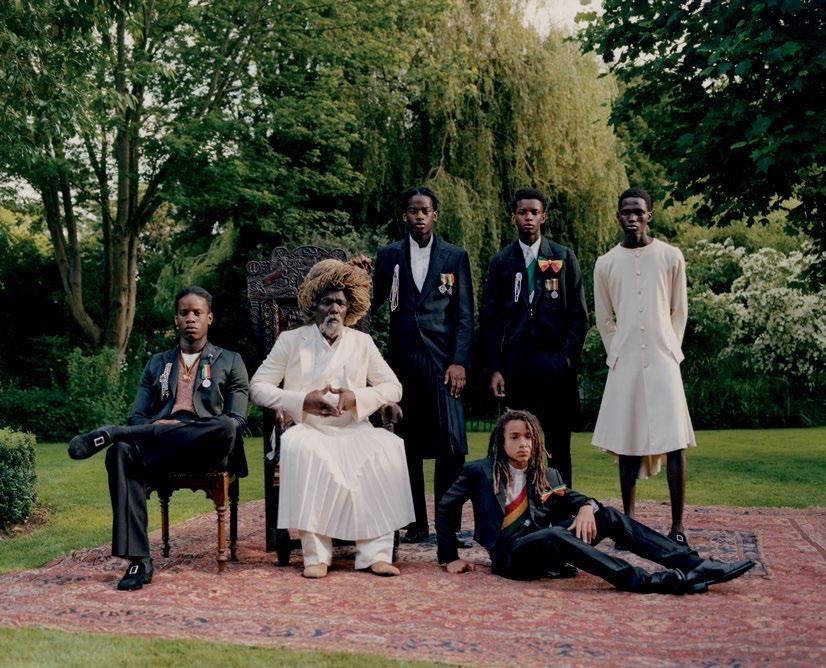
Untitled (Elder and Sons), 2021
“This is a staged family portrait. It was first created as a collaborative photographic project with the British-Jamaican fashion designer, Grace Wales Bonner. It mixes these ideas of classical, elegant, and formal dressing with Black identity, as well as Jamaican and Ethiopian identity because of the pins and brooches that adorn the suits. You see the colors of the Rastafarians and Ethiopians who had a deep connection by way of [former emperor of Ethiopia] Haile Selassie in the ’60s.”
Tyler Mitchell isn’t keen to be boxed in. At just 29 years old, why would he be? But the artist’s laundry list of accomplishments is hardly proportionate to his age. The Atlanta native was a year out of NYU when he became the first Black photographer to shoot the cover of Vogue, with Beyoncé as his subject. Then there were campaigns for Loewe and Louis Vuitton, a piece acquired by the Smithsonian, a debut monograph that made waves around the world. He’s a go-to in the commercial realm and a rising voice in the fine art sphere, but won’t quite commit to either. “A great photographer simply addresses the concerns of our time in visually compelling ways,” he says, brushing off the pressure to pick a lane. “Photography as a medium almost wants to be everything and everywhere, and in our time, it is!”
This year, the full breadth of Mitchell’s practice will be front and center in his most significant institutional presentation to date. On view at the High Museum through December, “Idyllic Space” brings together over 30 photographic works, evidence of the artist’s forays into fashion, and a new sculptural piece that harkens back to his upbringing in Atlanta. “I aim to expand our perception of the American South,” he says of the work. “In some of the pictures, I’ve depicted Black families in bucolic, sublime, and sometimes unusual landscapes—like sand dunes—to reflect the diverse environments where Black life has flourished.”
Ahead of the show’s opening, the artist gave CULTURED a glimpse at his selected works, weaving through-lines among the pieces in his expansive oeuvre. Investigations of masculinity, American ideals, Black kinship, and domesticity peek through, but when asked precisely what it is that defines a Tyler Mitchell photograph, his answer is hardly complex: “Simply put, the fact that I made it!”

Untitled (Brother of Suburbia), 2021
“As an artist, my overall project is to explore the concepts of the ‘idyllic’ and the ‘pastoral,’ and to question who these ideas have historically been reserved for … I try to cast subjects that excite me across both my commissioned and personal projects. I look for subjects who possess a poetic quality or a sense of timelessness. This has always drawn me.”


Untitled (Trust), 2018
“This photo was an intuitive moment of trust. It plays with the idea of fashion and dress, as one is in a red dress, one in a blue dress, and in both compositions, the clothes and the moment become a metaphor—an interweaving of the body.”
Ancestors, 2021
“I became very interested in making work that presents or expands these representations and ideas of Black life. It’s called Ancestors because on the mantelpiece of the fireplace in their front room sit real framed photographs of all of their ancestors. A lot of Black homes across America become this sort of public/ private gallery where we situate objects that mean a lot to us. It’s also where we situate photographs that tell a story of who we are and who we want to become.”

Untitled (The Ceremony), 2020
Albany, Georgia, 2021
“Albany, Georgia is a work I made thinking about home. It explores family existing within the Southern landscape, expanding visions of that landscape and contending with the traditional history of leisure, connectedness. This picture challenges all those ideas, re-situates them both in the American South in Georgia and for Black Southern families.”
“I’m very interested in the presentation and representation of ceremonies in Black culture. This idea of a very young wedding taking place on the steps of a very joyous and grand and classical Brooklyn building essentially takes up this genre of ceremony in Black life as a moment of pride. What you also see in the foreground is a young photographer about to make a formal portrait of the married couple. I’m also interested in photographing what is being photographed, making images of Black people [who are] making images of and for themselves.”


The American luxury brand is out to tell its own story with more ambition than ever before.



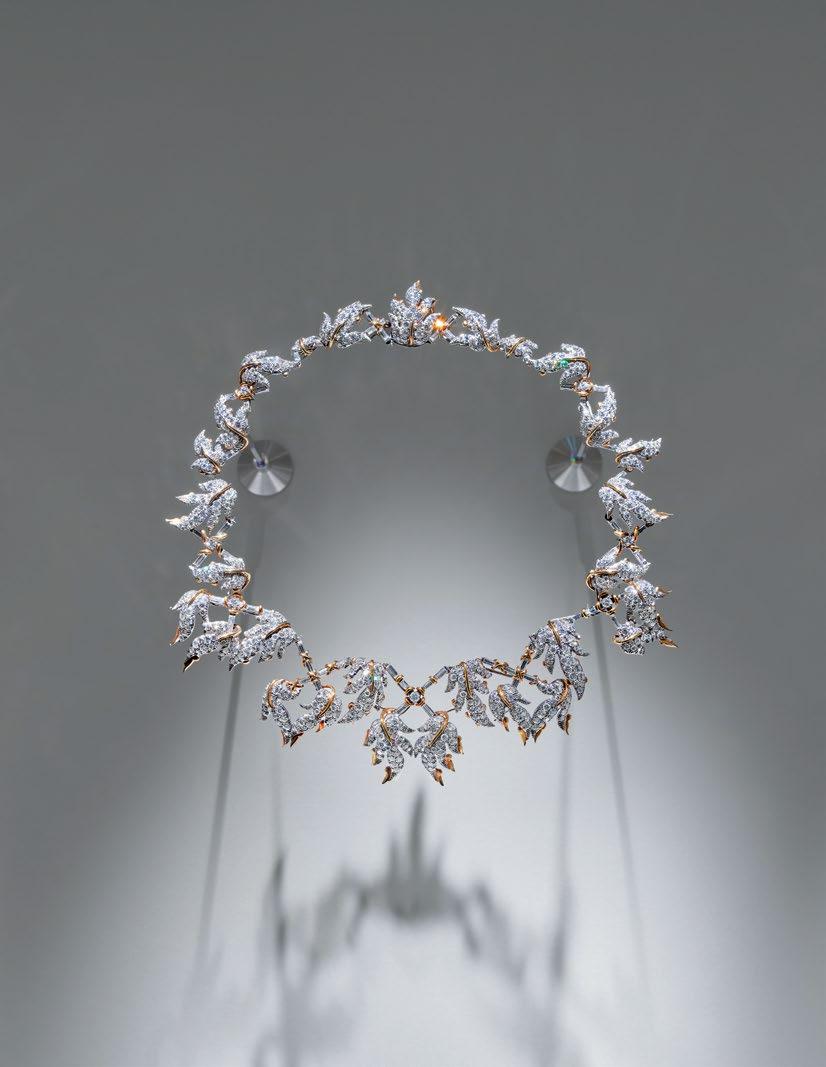

In the three and a half years since LVMH acquired Tiffany & Co., one of America’s rare heritage luxury brands, it has been on a mission to claim its rightful place in global cultural history. It’s pulling out all the stops to make it happen.
The jewelry brand’s debut, in 2021, of a robin’s-egg blue Jean-Michel Basquiat— acquired by LVMH and featured in a complementary campaign starring Beyonce and Jay-Z—shot the zeitgeist in the heart. Tiffany & Co. went on to install the trophy painting high above eye level at the brand’s Fifth Avenue flagship, where it is on view alongside 40 other artworks by the likes of James Turrell, Anish Kapoor, and Daniel Arsham.
This strategy seems to be working. There are now lines to have breakfast at Tiffany & Co.—and not the brown-paper-bag kind Audrey Hepburn enjoyed while peering through the windows. Meanwhile, at the spring art fairs in New York, Elsa Peretti bone cuffs proliferated on It-girl wrists.
What Tiffany & Co. is doing here is educating—first, by sharing with a new
generation its enduring alliances with art and design innovation, and second, by becoming its own historian and developing high-wattage exhibitions about the brand from its glittering archive. “Tiffany Wonder,” a show that opened this spring in Tokyo, exemplifies the latter mode of storytelling.
Why Japan? Perhaps you need a refresher on the history of Louis Comfort Tiffany. The brand’s new leader Alexandre Arnault, executive vice president of product, communications, and industrial, is happy to oblige. “Tokyo is a very special place to us, as it is a source of infinite inspiration,” he explains. “Everyone from George Paulding Farnham and Louis Comfort Tiffany to 20th-century creators like Elsa Peretti were deeply inspired by the unique artistry and intricate craftsmanship of Japanese design. Tokyo is ingrained in our DNA—our first salon opened in Tokyo in 1972.”
Held in an OMA-designed skyperch better known as Tokyo Node Gallery, the exhibition is bursting with treasures very few in Japan have likely seen, despite the brand’s almost two-century-long dialogue with the country’s design ecosystem. The show offers a trip through Tiffany & Co.’s greatest hits, from the first little blue box to a rotation of pieces by design visionary Jean Schlumberger to the Blue Book, the first mail-order catalog to offer Americans jewelry by post.
There is also heftier—and shinier—fare, like the 128.54-carat Tiffany Diamond, which the brand’s chief gemologist Victoria Reynolds describes as “the house’s true north.” Also on view is Louis Comfort Tiffany’s auction-record-breaking Medusa necklace, with its Beaux-Arts charm, opal heart, and amethyst tendrils, which sold for $3.7 million in 2021. Strung together in the show, these works form an impressive timeline.

“Tiffany Wonder” immerses the visitor in the world that made Tiffany & Co. a household name, a Truman Capote novella turned cinematic icon, America’s trophy-maker.

“IT’S A BALANCING ACT BETWEEN THE EXPECTED AND UNEXPECTED, BETWEEN TRADITION AND INNOVATION, BETWEEN HERITAGE AND MODERNITY.

Spread across 10 rooms, the exhibition immerses the visitor in the world that made Tiffany & Co. a household name, a Truman Capote novella turned cinematic icon, America’s trophy-maker. As Arnault puts it, “‘Tiffany Wonder’ reveals the importance of brand storytelling. The exhibition offers a means of engaging with the world of Tiffany in a context that is separate from a Tiffany store. It’s designed to foster genuine, meaningful connections with the brand that can only be experienced in person.”
Firsthand experiences have become a luxury in their own right—and more essential than ever to heritage brands like Tiffany & Co., where quality is a tactile sensation and visual
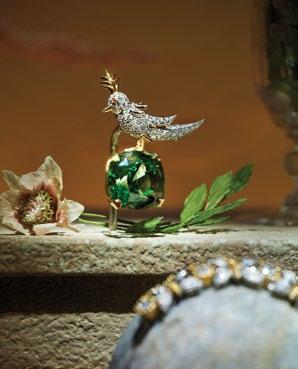
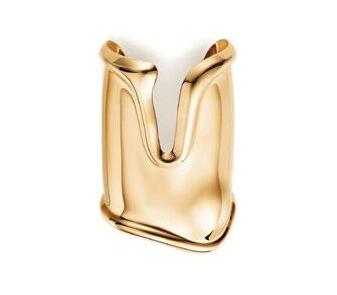
“Tokyo is a very special place to us, as it is a source of infinite inspiration. The city is ingrained in our DNA.”—ALEXANDRE ARNAULT
feast. “Tiffany Wonder” walks that line, gracefully showing finely rendered objects rather than telling with rhetoric or gimmicks. “It’s a balancing act between the expected and unexpected, between tradition and innovation, between heritage and modernity,” Arnault explains. “These dualities inform our legacy and allow us to push forward as we maintain our position as a pioneer in the worlds of design and craftsmanship.”
As with any renewed investment in a long-term relationship, it is tempting to daydream about future possibilities. Imagine what emerging Japanese designers might do when Tiffany & Co. calls them up, now that they know how instrumental their cultural touchstones have been to the brand’s evolution. Diamonds and stones everywhere await their beautiful fate. “Tiffany Wonder” delivers on its name.


PHOTOGRAPHY COURTESY OF AGNES DENES AND LESLIE TONKONOW ARTWORKS + PROJECTS


 JohnMcGrail, Wheatfield – A Confrontation: Battery Park Landfill, Downtown Manhattan – With Agnes Denes Standing in the Field, 1982.
JohnMcGrail, Wheatfield – A Confrontation: Battery Park Landfill, Downtown Manhattan – With Agnes Denes Standing in the Field, 1982.

ON A WARM APRIL DAY, sitting in front of a computer in her SoHo studio, Agnes Denes is in a reflective mood. Every square inch of the red-brick space, which she has inhabited since 1980, is covered with books and papers. The 93-year-old artist is preparing to revisit—and reinvent—her most famous work, Wheatfield—A Confrontation, the two-acre amber “Shangri-La” she planted and harvested over four months in Lower Manhattan in 1982. The influential project will have a second life in Bozeman, Montana, this summer, marking the first time Denes has reimagined her magnum opus in another American landscape.
“The reception that Wheatfield gets now is different from what it received when I made it,” says Denes, two miles from the tilth she once created. “People looked at this little woman, running back and forth in a field. ‘What is she doing? Who is she?’ Now, it’s different. Now, there is a kind of worship.”
Wheatfield does command a certain reverence, particularly among conceptual art devotees. Still a seminal public sculpture more than 40 years on, the work was as much a confrontation of “High Civilization,” Denes explained in a collection of writings, as it was “a small paradise, one’s childhood, a hot summer afternoon in the country, peace, forgotten values, simple pleasures.”
The intervention is immortalized in the majestic image, captured by Life magazine photographer John McGrail, that so many of us associate with Denes today: the artist in her urban wheatscape holding a staff, part Moses, part Captain Ahab. Now considered a foun-
ding mother of environmental art, alongside pioneers Cecilia Vicuña, Christo, and Jeanne-Claude, Denes paved the way for the likes of Maya Lin and Olafur Eliasson, whose practices confront conservation and the climate crisis.
With the help of the Public Art Fund, two assistants, and two or three volunteers (for whom she famously made sandwiches every night because she couldn’t pay them), Denes transformed the landfill that is now Battery Park City into an agrarian nirvana. Two hundred truckloads of dirt provided the necessary 10 inches of fertile topsoil, while Denes built an irrigation system, cleared rocks and boulders by hand, and sprayed for fungus, tending a field that culminated in a harvest of over 1,000 pounds of wheat.
This summer, the recently founded Montana nonprofit Tinworks Art invited Denes to revisit the premise with Wheatfield—An Inspiration. The seed is in the ground. The two-and-a-half acre site (one and a half of which will be dedicated to the crop) in a rapidly developing, mixed-use section of Bozeman is a far cry from the work’s original location. What made Wheatfield so remarkable—and indelible all
“IF YOU LOOK BACK 100 YEARS, YOU SEE TREMENDOUS CHANGE. IMAGINE WHAT WILL HAPPEN IN 1,000 YEARS. I WANT THE FUTURE TO LOOK BACK AND SEE WHO WE WERE.” —AGNES DENES
these years later—was the booming of agriculture just blocks from Wall Street and the World Trade Center. Denes described the contrast as “an effrontery that made it the powerful paradox I had sought for the calling to account.” Why, then, would she want to revisit the project in an entirely different landscape? For one thing, Denes is adamant that her career is far from complete, and some of her best ideas yet unrealized. Today’s audiences, she believes, need an intervention like Wheatfield more than ever.
In Bozeman, a crop of Bobcat winter wheat— a strain recently developed by Montana State University to help regional farmers—carries the same, if not weightier, economic and cultural connotations its predecessor did in 1982. Southwestern Montana is grappling with the economic shake-up of the tech industry, California transplants, and a luxury real estate surge. Post-pandemic, the median home price in Bozeman approached $1 million, prompting new questions about land use, preservation, and power.
“Bozeman is a booming micropolis,” says Jenny Moore, Tinworks’s inaugural director, who led the Chinati Foundation in Marfa, Texas, for nine years. “I’m just learning how rich the soil is and that there is a housing crisis, and the important agricultural force that Montana has been.”
Denes is encouraging citywide participation in the artwork, making packets of spring wheat seeds available to the public. This fall, small mills for processing the community’s wheat harvest will pop up at Tinworks. If Denes’s sculpture yields a bountiful crop, the art center’s neighbor, Wild Crumb Bakery, will turn the resulting flour into bread, so the conceptual work becomes a source of sustenance. “Wheatfield is often described as being Land art, but Agnes made a very important distinction to me when describing her work,” Moore says. Land artists like Nancy Holt or Robert Smithson superimpose their art or their will on the land, “while Agnes works with the land.”
Unlike some of the female conceptual and Land artists of her era who are only now recei-
ving overdue attention, Denes has shown around the globe throughout her career. In 2015, she planted 12 acres of wheat against the backdrop of Milan’s skyscrapers in the city’s Porta Nuova neighborhood. In 2019, her New York retrospective “Absolutes and Intermediates” opened to critical acclaim at the Shed. The exhibition introduced viewers to the full scope of Denes’s oeuvre, which extends beyond environmental art into sculptural conceptualism. The protean work on view ranged from a 17-foot-tall futuristic pyramid made of thousands of glowing, 3-D-printed blocks to her 1969 obituary-meets-memorial Human Dust, which displays statistics about an unnamed artist’s life alongside a glass bowl containing 1/85th of his calcareous remains.
Unique to Denes’s legacy is her talent for making art not only out of space but also time. She will connect with audiences millennia from now through a series of questionnaires and buried time capsules to be opened 1,000 years from the artwork date. When Wheatfield —An Inspiration was announced last fall, Denes began circulating questionnaires to the Bozeman community online. The queries probe artificial intelligence (How would you deal with the possibility of A.I. hurting humanity?) and human survival (As we struggle with global warming and mismanaged societies, is there a bigger picture we might be missing?). Unlike her other questionnaires, which must be opened on a specific date in the future, this “capsule” can be accessed at any time via the cloud.
“My work is to communicate with people and a betterment of people, especially today in a world of confusion,” Denes says, pointing to the famous Life wheatfield image on her computer. “Every era feels confusion and upheaval because you live it. But I think this is different. This is more meaningful, so any intervention, any betterment, is important.” After a beat, she continues, “When you ask questions, you get different responses—from London to Istanbul. If you look back 100 years, you see tremendous change. Imagine what will happen in 1,000 years. I want the future to look back and see who we were.”
“PEOPLE LOOKED AT THIS LITTLE WOMAN, RUNNING BACK AND FORTH IN A FIELD. ‘WHAT IS SHE DOING? WHO IS SHE?’ NOW, IT’S DIFFERENT. NOW, THERE IS A KIND OF WORSHIP.” —AGNES DENES


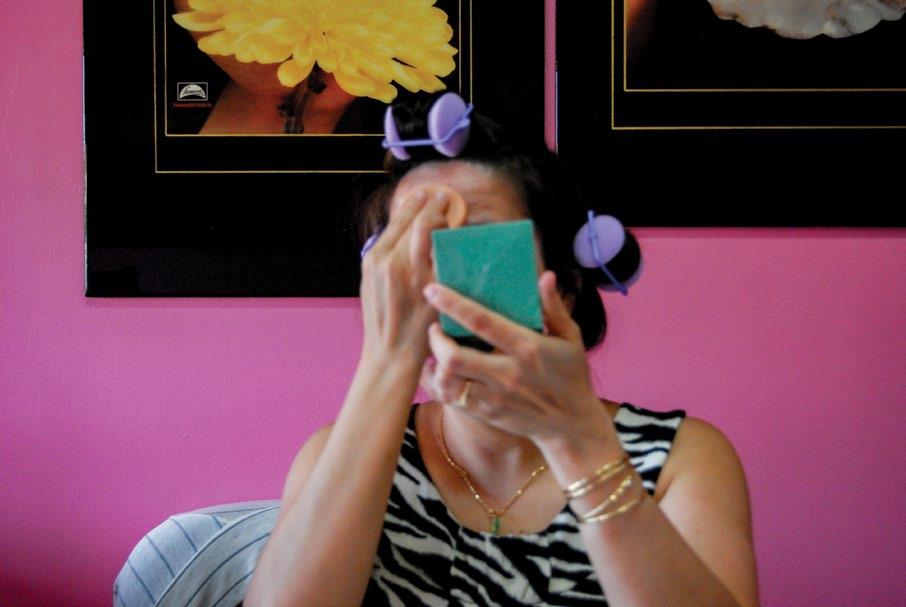 BY OCEAN VUONG
BY OCEAN VUONG


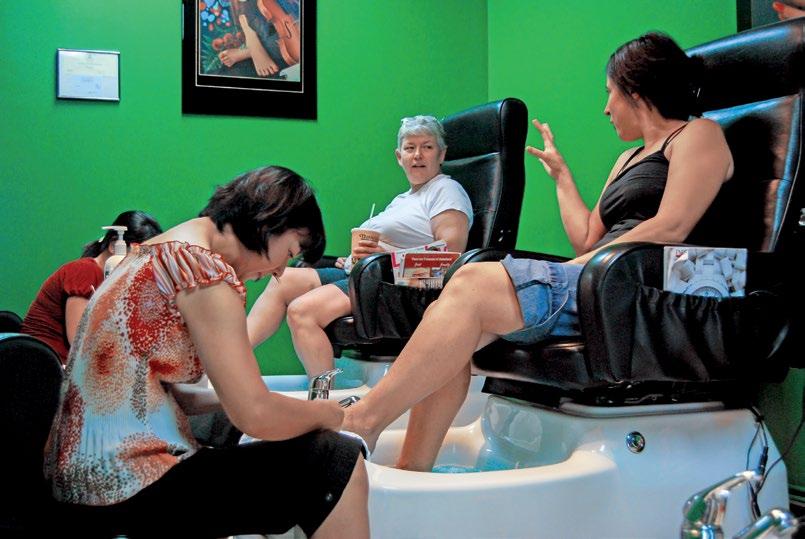
IN THE PAGES THAT FOLLOW, WRITER OCEAN VUONG WEAVES A TALE OF TWO JULYS: THE FIRST REVELING IN THE QUOTIDIAN BEAUTY OF HIS MOTHER ROSE’S HARTFORD NAIL SALON, THE SECOND CHRONICLING A STRING OF HUMID NEW ENGLAND DAYS SPENT WITH HIS BROTHER 15 YEARS LATER, MOURNING HER DEATH. HERE, THE ACCLAIMED POET REFLECTS ON HIS FIRST PUBLIC FORAY INTO PHOTOGRAPHY, AND THE EERIE PLASTICITY OF TIME.
I started taking photographs during my freshman year at community college. My friend, who played bass in a local punk band, had just gotten a 2006 Nikon D80 and, since I had the musical propensities of a fire hydrant, asked me to document their shows, which took place in dingy basements and dive bars up and down I-91. After weeks of shooting flash on the edges of mosh pits, my back sweating against a wall, something strange started to happen. I grew to see a kind of magic inside the frame, one I would only understand more fully as a writer: that though a work of art can be bolstered by context, there is just as much narrative propulsion—perhaps more—when information is omitted. The 35mm prime lens cleaves the world away, leaving only a slice, so that the viewer must fill in the rest with their own fictions. Why is it that, upon seeing some photographs, I can also hear them, can smell the air in the room, sometimes even the words spoken—the tones, the timbre?
Three years later, I asked my friend if I could borrow his camera to shoot my family—and he obliged. On a sweltering day in July 2009, home after my first year at Brooklyn College, I brought the Nikon to my mother Rose’s nail salon to shoot the employees (my mother, my aunt Sen, their friend Phuong) as they worked, ate, laughed, stared out the windows in moments of boredom and idleness, and cared for my then-infant cousin, Sara. At one point, in a moment of sheer serendipity, my cousin Victor stopped by, hours after his release from a two-month stint in rehab. I hoped to return in the fall to document the salon in another season, inspired by Walker Evans’s Alabama sharecropper photos with James Agee and the documentary work of William Gedney and Gordon Parks (also a fine novelist). But three months later, with the historic recession sweeping its scythe across the country, my mother declared bankruptcy, sold her business, and everything outside those frames vanished.
Back in 2006, a week after being asked to photograph those punk shows, I visited my community college library and started looking at photo books. This was where I discovered other touchstones like Fan Ho, Joel Sternfeld, Stephen Shore, Nan Goldin, Corky Lee, Robert Frank, Daido Moriyama, William Christenberry,
Larry Fink, and Lisette Model. One such book was Reflections in a Glass Eye: Works from the International Center of Photography Collection, a 1999 survey that utilized subgenres as its organizing principle to display notable works in the medium. Upon encountering the “still life” section, with its expected sequence of agrarian production, Roman facades, and objets d’art, including Serrano’s infamous Piss Christ, I came upon what at first appeared to be a smashed bust. I soon discovered, upon reading the caption, that it was the head of an unknown Vietnamese man, shot in the mouth and lying dead in a field during the war in Vietnam.
Decomposed Face of a Dead North Vietnamese Soldier, Hue, was taken in 1968 (the year my mother was born) by photographer Donald McCullin. I resisted the urge to look away and spent a few moments studying the face, its contours ripped apart by the bullet’s velocity, the severe close-up exposing the man’s poor teeth, evincing his lack of access to dental care during war, colonialism, and famine; then I stared out the library’s windows, where the opulent autumnal light from a pine grove dappled the wooden tables, and closed the book.
Why did the mouth, contorted by the projectile, as if pried open by a finger, remind me of the mocking “faces” children make on playgrounds? Why did it feel like a cruel joke? I ask now what I did not know to ask then: If it were an American G.I. with his face split open, decomposed, would I have encountered it in a survey of still lifes in an art book? I wonder if it would have ever been taken in the first place, and at such close range. This is no knock on McCullin—however one feels about war photography, there are long-argued reasons and detractions to its purpose—but more a question about how art “survives,” and further, how the archival process can become a troubled medium of situated reification. Though I’m sure the dated book no longer reflects the curatorial vantages of the ICP, the anthology nonetheless raises an important historical question: Under what parameters, and by whom, does a racialized corpse get aestheticized as a still life? Among shots of roosters, driftwood, legs of ham, succulent peaches and apples—quintessential Renaissance motifs from which the still life is derived—here lies, in gruesome displacement, the head of a man fighting the unlawful invasion of his country by an imperial power. Since the semiotic code of an index influences the meaning of an object, what would happen, for example, if this photo was placed under “portraits” or “military industrial artifacts” or “autopsies” or, to borrow from another section of that book, “everyday life”?
It is not uncommon for Vietnamese-American children to see themselves in media as corpses, often so mangled as to be indiscernible from one another, as it was the time I clicked, at 15, on a Wikipedia link and was blasted with a digitally enlarged photo of the My Lai Massacre: the pooling blood, the fingers, the toes, bits of shredded underwear. That is to say nothing of the hundreds of Vietnamese corpses replicated in Hollywood war films.
Looking back, I wonder if my desire to photograph the nail salon was a subconscious impulse, after encountering McCullin’s photo, to see the Vietnamese faces that fed me, the ones I kissed, the brows I wiped sweat from while they worked, alive. The camera, then, became a near hallucinatory tool to replicate the living as they moved through time. How else to say to each other, Live, live, live, but to press the shutter again and again, creating one’s own proof? The nature of death in war then becomes the evidence of a people having survived that very war. I am here, we might say, because the people in these photos, the ones with names my mouth was taught to hold, did not become a corpse documented by a photographer on assignment.
I look back on that single day in 2009 and wish I had composed these shots differently; wish I was bolder, had read more, had more courage, was more at ease with the release button. Even in one day, I know I missed so much. Such regrets are only compounded by distance. But if image-making is articulating one’s desire for the world, as Moriyama says, then if nothing else, I wanted the people in those frames to be as they were, even if one of them, my mother, is no longer anywhere else but there.
Feeling bereft and seeking a contrived sense of closure art so often allows, I interlaced this photo essay with frames of my brother, Nicky, and bits of our life in New England, all taken in a single week in July 2023, 15 years later. The illusion of form perhaps more gratifying than the reality of chaos, I sequenced these photos to extend that single lost day in 2009 into a kind of “time accordion,” mimetic of how memory works—as interruption, hauntings, myths—but also as things that leach through the imagined borders we make of years. In this way, I hope to regard time as a collaborator rather than the mode of erasure it’s so often claimed to be. Whether we want them to or not, memories survive. They remind us that a “still life” is also, if only in the frame’s fictive propulsion, still life.


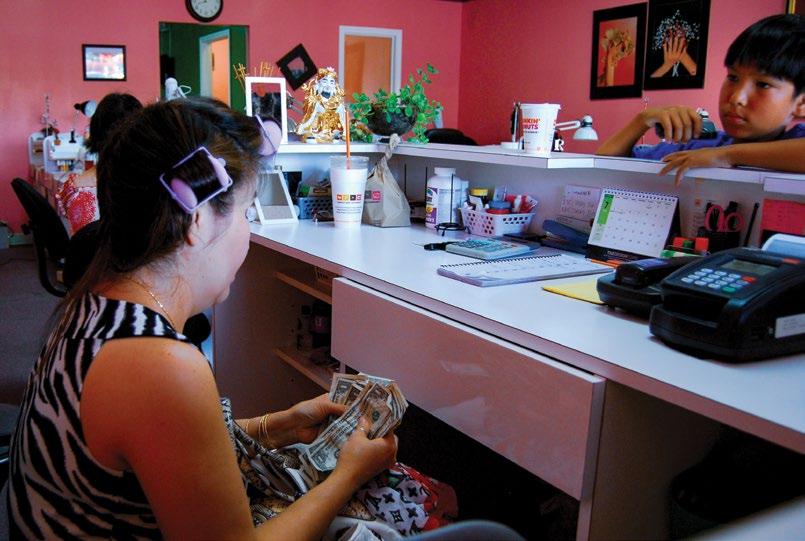

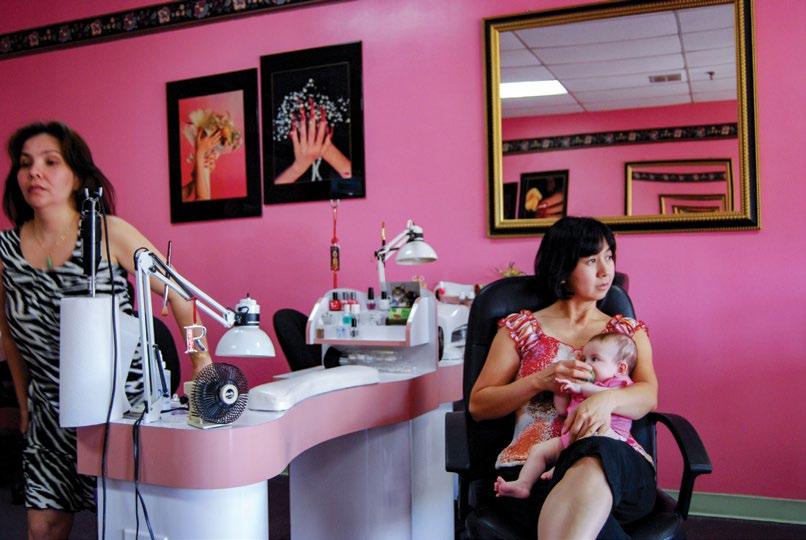



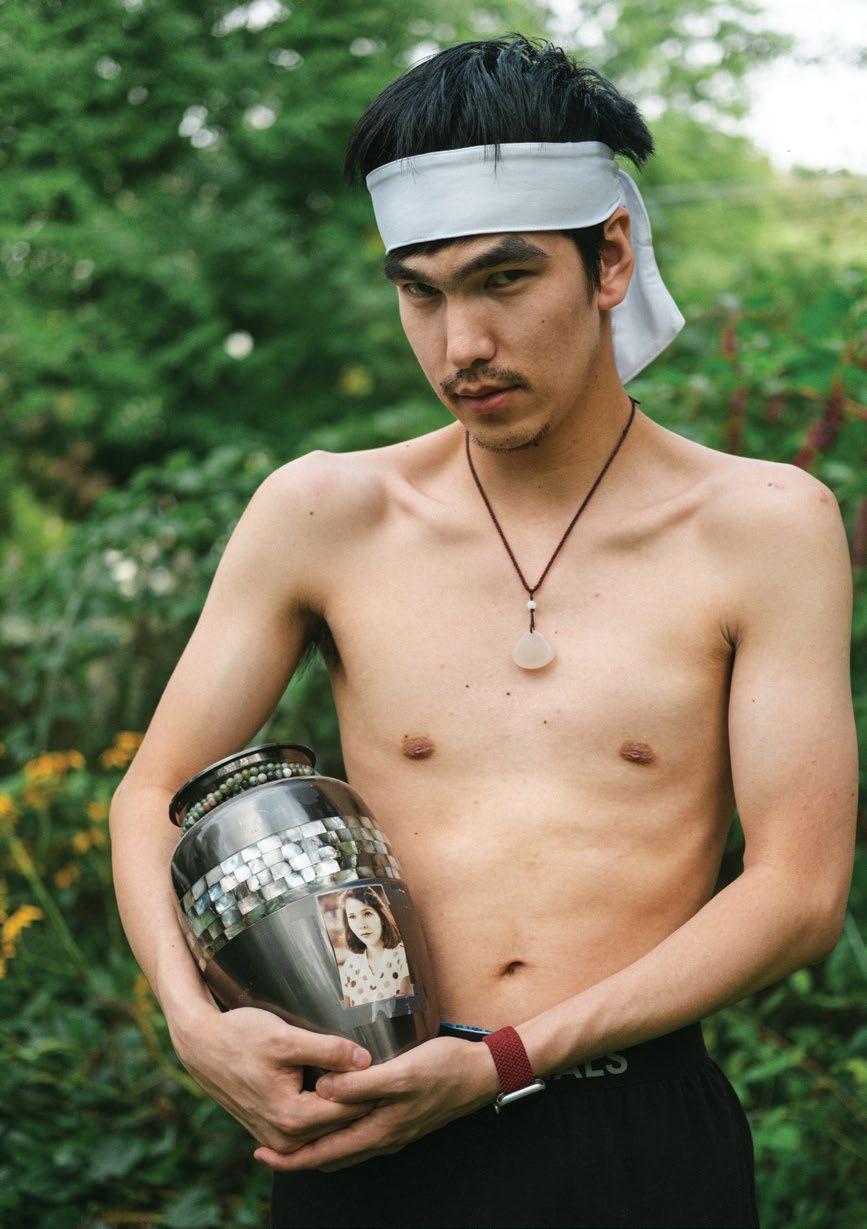
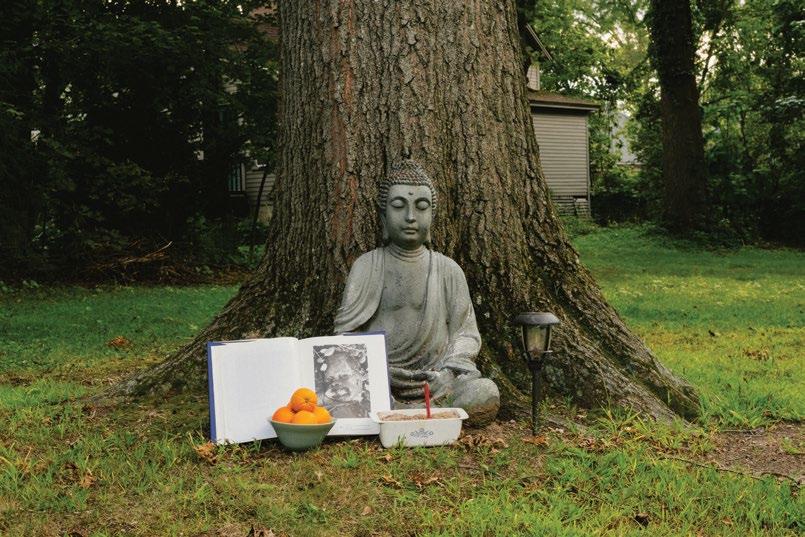


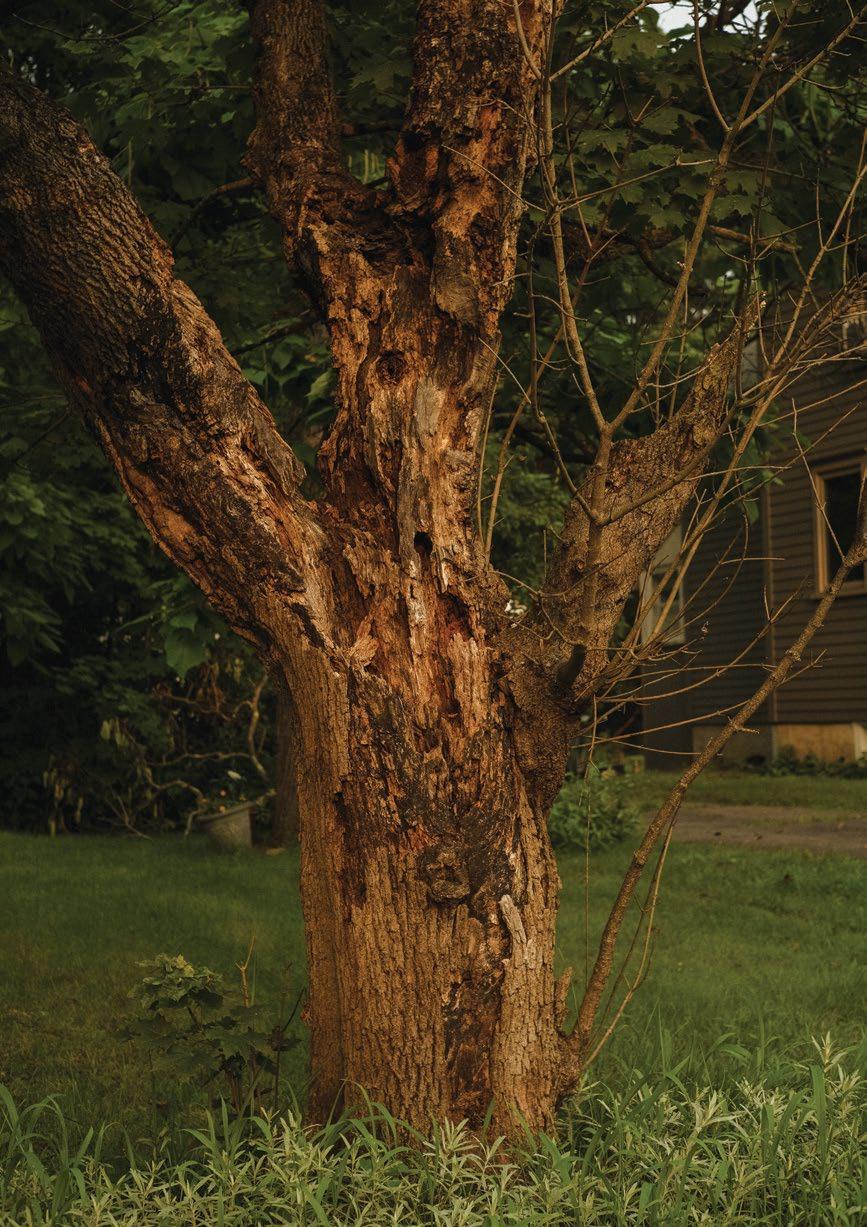


When Abbi Jacobson and Jodi Balfour first met, the world was in a pandemic chokehold, and the two actors pined for the return of jubilant, sweaty revelry. Three years later, they tied the knot with a ceremony dedicated to that very feeling.
BY MARA VEITCH PHOTOGRAPHY BY LUCIA BELL-EPSTEINAbbi Jacobson and Jodi Balfour can recall, with startling clarity, every bead in the strand of their relationship: a fateful text message sent during lockdown, the spatial intricacies of a carefully orchestrated first date, the many paper bags of fresh strawberries and tomatoes in-between.
When they met (virtually) in 2020, each was peeking over her own precipice. “I was riding out Covid alone—it was a ‘dark night of the soul’ kind of vibe,” recalls Jacobson. Balfour, for her part, was untethered by the loss of a sibling and the end of a long-term relationship. “It was a watershed year for me in many ways,” the actor recalls. “Meeting Abbi felt like the pinnacle of a long-overdue step in my own evolution.”
Among these foundational memories, at least one theme appears: two people, so respectful of one another’s boundaries, taking simultaneous leaps of faith. On the evening of their first date at Jacobson’s Los Angeles home, they fell privately in love from 25 feet apart. “I had a very complex theory about my own relationship to romance. Then I saw Abbi standing just outside her front door and I thought, Oh, I love this person. Cool,” Balfour recalls. “I made her walk outside to the backyard by herself,” adds Jacobson, “so I could have a moment to say to myself, ‘Oh God, I’m in love.’”
Later, when Balfour was on location in London, Jacobson flew in for a five-week visit with a childhood keepsake—a toy ring—in hand. On the last weekend of the trip, the actor-comedian seized her moment to propose. “We were both crying. Jo said, ‘You little shit, I have a ring for you, too.’” Three years after that first date, each of these many moments culminated in a wedding ceremony at Public Records in New York. “I like a little bit of grub with my beauty,” Balfour muses. “That’s why we chose Gowanus,” Jacobson adds.
The evening, which brought together a cadre of creative talents—floral designer Rana Kim, chef Emma Leigh MacDonald, photographer Lucia Bell-Epstein, and designer Sophie Lou Jacobsen, among others—was an ode to the couple’s dedication to real, unscripted togetherness. Very unscripted, in fact—when torrential rains turned a thoughtfully choreographed evening on its head, these many women adapted by calling in favors, reevaluating plans, and embracing the chaos.
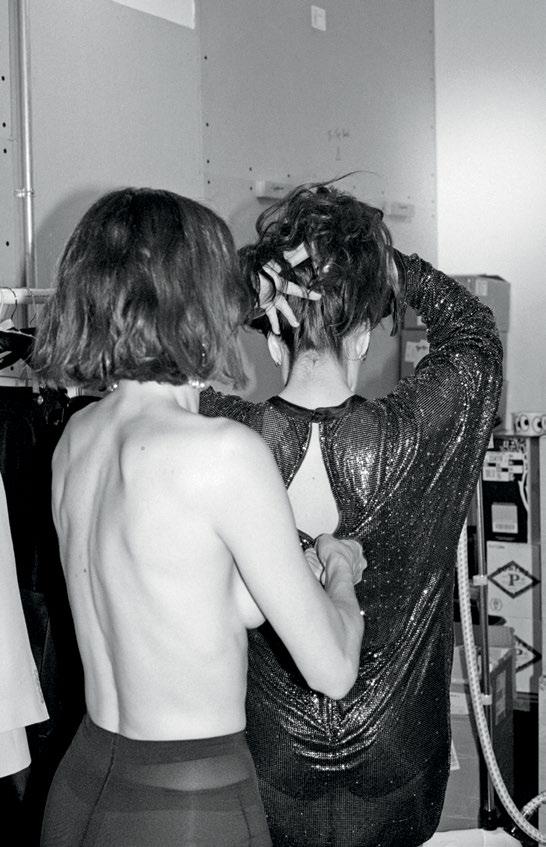


“When we first started texting, I asked Jo what about pre-Covid life she missed most,” Jacobson recalls. Balfour answered immediately: Sweaty shoulders. “After so much distance, we wanted the wedding to feel like that first sweaty shoulder moment—total togetherness,” Balfour concludes. “I think we did that.” Here, the couple shares a few snapshots from an unforgettable night.
JODI BALFOUR: The flowers are by Rana Flora. Instead of arrangements and prettiness, we wanted moments of architecture. We wanted these to feel like floral installations, rather than flowers decorating a space. Rana had us meet her at the flower market in Chelsea to walk around, talking about what we were attracted to. We knew we wanted to give her a lot of trust.
ABBI JACOBSON: We were late to meet our moms at the venue, where we were supposed to get dressed. Because of the rain, everything switched around and we ended up getting ready in a supply closet.
BALFOUR: For the ceremony, we both wore The Row—right off the rack.
JACOBSON: Thanks Mary-Kate! For the party, we wanted to mix it up. Our friend Alexis [Novak] owns this store called Tab Vintage in LA. She has an incredible collection. I changed into Versace chainmail, and Jo wore Vivienne Westwood.
JACOBSON: We had planned an outdoor ceremony and dinner, but we had to pivot. It was such kismet, because the ceremony was not what we expected, but it was exactly what we’d hoped for. People were packed together. When we looked out at the audience, our friends were on stools, peeking through the plants, and sitting on top of the booths. I’ve never been to a wedding like that.
BALFOUR: I kept thinking, The next time these people will be in the same room would have to be my funeral.
JACOBSON: Our joint funeral.
“I made her walk outside to the backyard by herself so I could have a moment to say to myself, ‘Oh God, I’m in love.’”

—ABBI JACOBSON
JACOBSON: Food has marked a lot of occasions for us, like the strawberries the night we met, and the tomatoes the day we got engaged. We described a lot of these moments for Emma, who developed a menu around them. Everything was so fresh and unfussy.
BALFOUR: Because of the rain, our outdoor seated dinner became an indoor buffet. I remember calling Emma, the chef, on the brink of tears about the idea of a goddamn buffet. We had been planning the seated dinner for months. Emma said, “It’s going to be beautiful. There will be no bunsen burners.” She called in Sophie to help make it possible. I was so relieved that we had chosen these partners in crime.
BALFOUR: We didn’t want to disappear in the middle of the wedding to take portraits. Instead, we just walked around the space with Lucia for a bit. It’s so funny to me to look at our version of the wedding portraits you usually see, where the couple is in a beautiful field of lavender.
BALFOUR: We decided to make the party a surprise. After dinner, the Westerlies burst out of the kitchen playing Stevie Wonder’s “Sir Duke.” We followed them from the dining room to the dance floor in the sound room, where Matt FX [music supervisor on Broad City] started DJing. I also surprised Abbi by asking our friends Lukas [Frank] and Zach [Dawes] to perform “True Love Will Find You in the End.”
JACOBSON: Our first dance was to Aretha Franklin’s “Don’t Let Me Lose This Dream.” My dress destroyed Jo’s tights within 35 seconds.
BALFOUR: It really was “one of those nights.” We were in a dark wooden room with no windows, an insane sound system, and a disco ball. Everyone’s nice clothes became wet rags. People were smoking who don’t smoke. Our moms did the hora. It was like we all existed in a different dimension for a while.
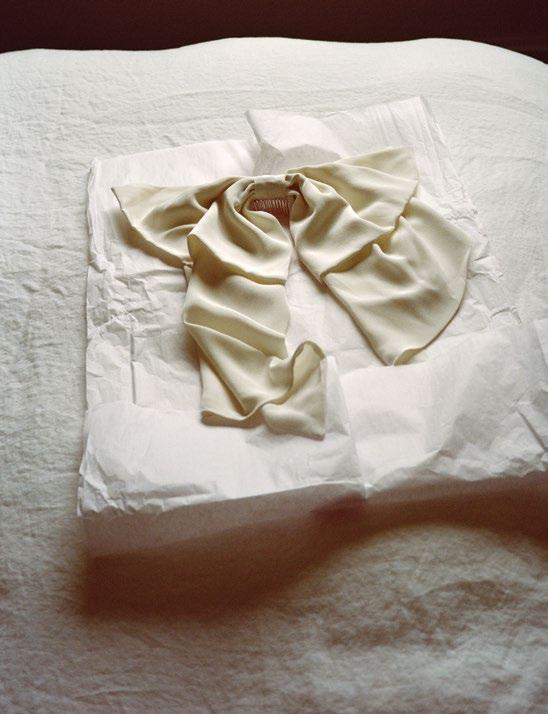

As Louis Vuitton’s global culinary outposts prepare for their summer season with a new set of tableware in hand, chefs from Bangkok to Saint-Tropez share the ingredients that unite them.
Louis Vuitton’s iconic monogram was first designed as a way to bridge one generation to the next.
In 1896, the founder’s son, Georges Vuitton, sketched the blooming floral motif and interlocking initials as an ode to his late father. The design has come to connect the far reaches of the house, splashed across clothing, accessories, and
now, an inaugural tableware collection. Louis Vuitton is serving courses with its new suite of blooming porcelain, glasses, and carafes at the restaurants it runs around the globe.
To hear how the outposts are preparing for the summer dining season, CULTURED caught up with the chefs responsible for dining à la Louis Vuitton.


Spending the summer working on the French Riviera amongst friends—can it even be called work? Louis Vuitton’s Saint-Tropez restaurant at White 1921 hotel is under the guidance of Michelin-starred chef Arnaud Donckele and pastry chef Maxime Frédéric.
Together, the colleagues and close friends have transformed the coastal spot into a hub for fine Mediterranean dining.
What is an essential detail for a perfectly presented dish?
MAXIME FRÉDÉRIC: We are respecting Louis Vuitton’s history to the letter, without ever distorting it. For Louis Vuitton, a perfectly plated dish means that we are following the codes of maison. There are no faux pas; there are no needless frills either. It has to be delicious.
The spirit of the monogram shouldn’t minimize the dish; it is there to enhance the deliciousness, the “wow” effect, the emotion. An essential detail is the respect of these rules, this code, this manual know-how, and art of raw materials. At Louis Vuitton, this is what you see when you go to the workshops, when you go to Asnières. Our dishes share this same focus: raw materials that are carefully chosen with incredible people.
What are some of the iconic flavors and ingredients that make Saint-Tropez’s

cuisine so unique?
ARNAUD DONCKELE: Louis Vuitton in Saint-Tropez is close to the sun, so tomato is the perfect flavor with the human and plant warmth it exudes. There’s also all types of anise, fennel, thyme, and savory summer verbena.
What aspects of your city are reflected in your work?
DONCKELE: Saint-Tropez brings a touch of lightness, a slightly bohemian-chic style. Something quite carefree, bucolic, and poetic.
What’s the secret to a memorable dinner?
FRÉDÉRIC: It’s this symbiosis that exists between all the teams. We all have completely different skill sets, but everything comes together in the end. If you have an excellent dish without an excellent wine, something might be missing.
If you have an excellent dish without excellent bread, something might be missing. It’s the entire art that is essential. It’s really all the little details that make the dinner unforgettable. My grandmother used to say, “You can’t buy a smile.” She’s right.
Which rule of kitchen etiquette do you always follow?
FRÉDÉRIC: The fundamental rule in our team is to help the people around us grow. It’s the concept that drives us each day: to pass down knowledge and help people grow, regardless of whether they are apprentices, commis chefs, or interns. This rule of helping people grow also means helping the people around us.
Obviously, this includes the people on our team, but also those in the entire ecosystem around us: the farmers and all the suppliers we work with on a daily basis. We have to bring them beautiful things, too, so that they can grow at the same pace as we do.
DONCKELE: I’m lucky enough to work with extremely passionate people. I just tell them two things: We waste time doing things that are bad or just average, and we save time doing things right or even doing exceptional things.
What are essential things that define summer cuisine for you?
DONCKELE: Definitely color. The colors of the furniture—orange, yellow, or blue give a summery feel. They are bright colors that slightly counterbalance summer creativity.
Then, of course, there is the produce—courgettes, aubergines, herbs, tomatoes. And finally, summer clothing immediately makes us feel more relaxed. We tend to wear outfits that encourage us to get away from it all.

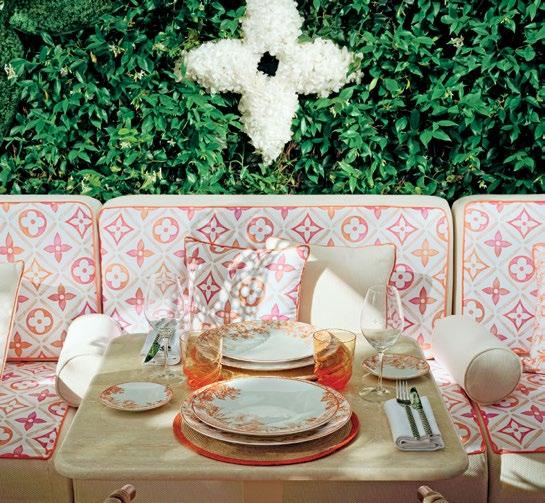
“It’s the entire art that is essential. It’s really all the little details that make the dinner unforgettable. My grandmother used to say, ‘You can’t buy a smile.’ She’s right.”
—MAXIME FRÉDÉRIC
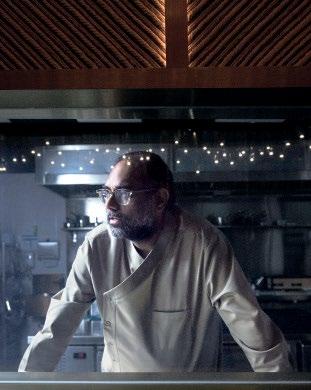
“Sweet, sour, spicy, and salty in the same bite. It’s about the complexity: That’s how Thai cuisine and Indian cuisine have become so popular all over the world.”
—GAGGAN ANAND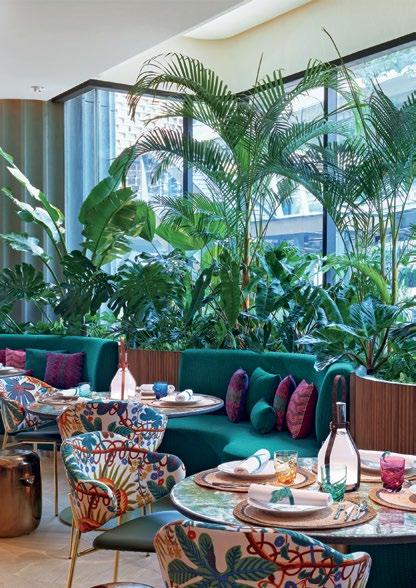
At Louis Vuitton’s first restaurant in South Asia, Indian chef Gaggan Anand has curated a Thai menu that pulls from the vibrancy of the maison’s output. The Bangkok outpost’s menu is responsive to what Anand calls the “hot” and “hotter” seasons, placing market-fresh selections onto signature tableware and, on occasion, ice.
What quintessential flavors and ingredients define the regional cuisine for you?
GAGGAN ANAND: Sweet, sour, spicy, and salty in the same bite. It’s about the complexity: That’s how Thai cuisine and Indian cuisine have become so popular all over the world. It’s not just because of the curries, but because of all these tropical fruits combined with seafood and meat in every course.
What hallmarks of the city seep into your work?
ANAND: It’s not the hallmark of the city, but the hallmark of the house. At your first bite, you get it. Every dish uses a monogram or symbol of Louis Vuitton that you can recognize the moment you see it. That symbol, we made it lickable. We burn it. We make it into ice creams. There are so many ways to use the same symbol and yet not lose my identity, and keep the identity of the house.
What elements define summertime cuisine?
ANAND: In Thailand, it’s always summer. We have four seasons: hot, hotter, hottest, and hell. We have the same ingredients all year, apart from seasonal, tropical foods. So, we try to bring as many changes as we can in textures and temperatures. For example, we have a dish where we put the food in an ice block. I think 50 percent of the menu is completely cold.
“Every dish uses a monogram or symbol of Louis Vuitton that you can recognize the moment you see it. That symbol, we made it lickable.”
Where in the city do you go when you need a creative reset?
ANAND: For inspiration, I travel the world because I believe the world is united through food. Look at this world—you wake up and the first news you hear is hate and people working against each other over culture and over religion.
My perspective is that in this chaotic world, when people come to eat in a restaurant, they forget their worries at the gates, enter the restaurant, and unite in food. In food, there are no boundaries. You don’t know which religion, which color, and which culture is cooking in the kitchen.
What’s your secret to a memorable dinner party?
ANAND: I like to throw parties. In Thailand, that’s not very common. People like to socialize in restaurants. When people come to my home, I cook them simple food. I play them good music. I like some wine, nice candlelight, good food, barbecue, fish cooked in salt. If I cook, I go to the market that morning.
I see what I have that day and make a menu. I love hosting people. It’s a part of my DNA. I even cook for my dogs. Can you imagine? You have to come and see my dog’s menu. You’ll go crazy.
SEPTEMBER 6–8





